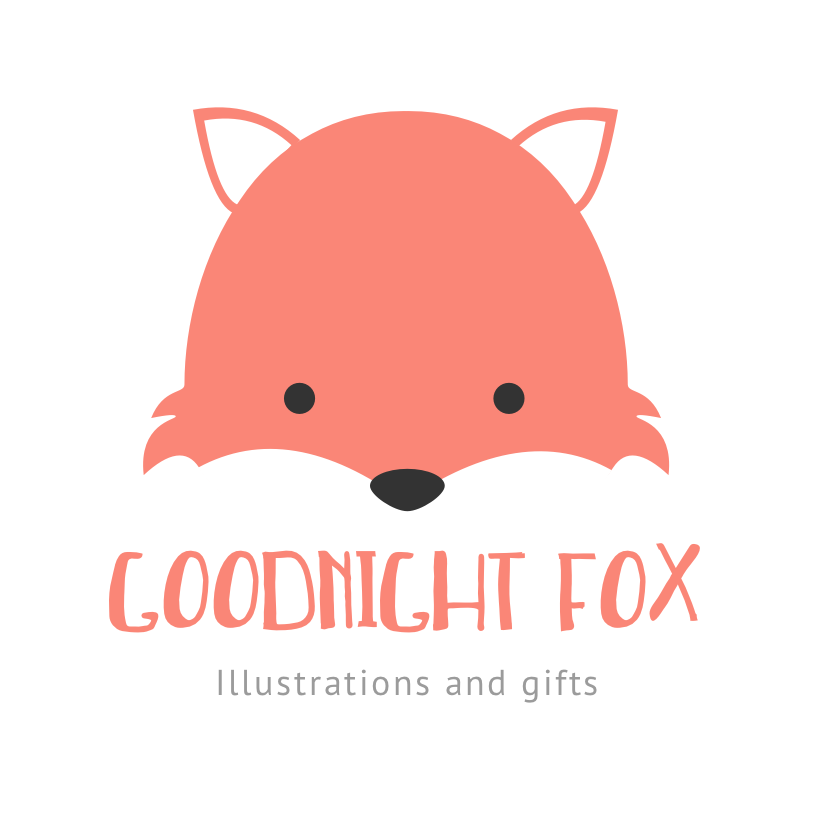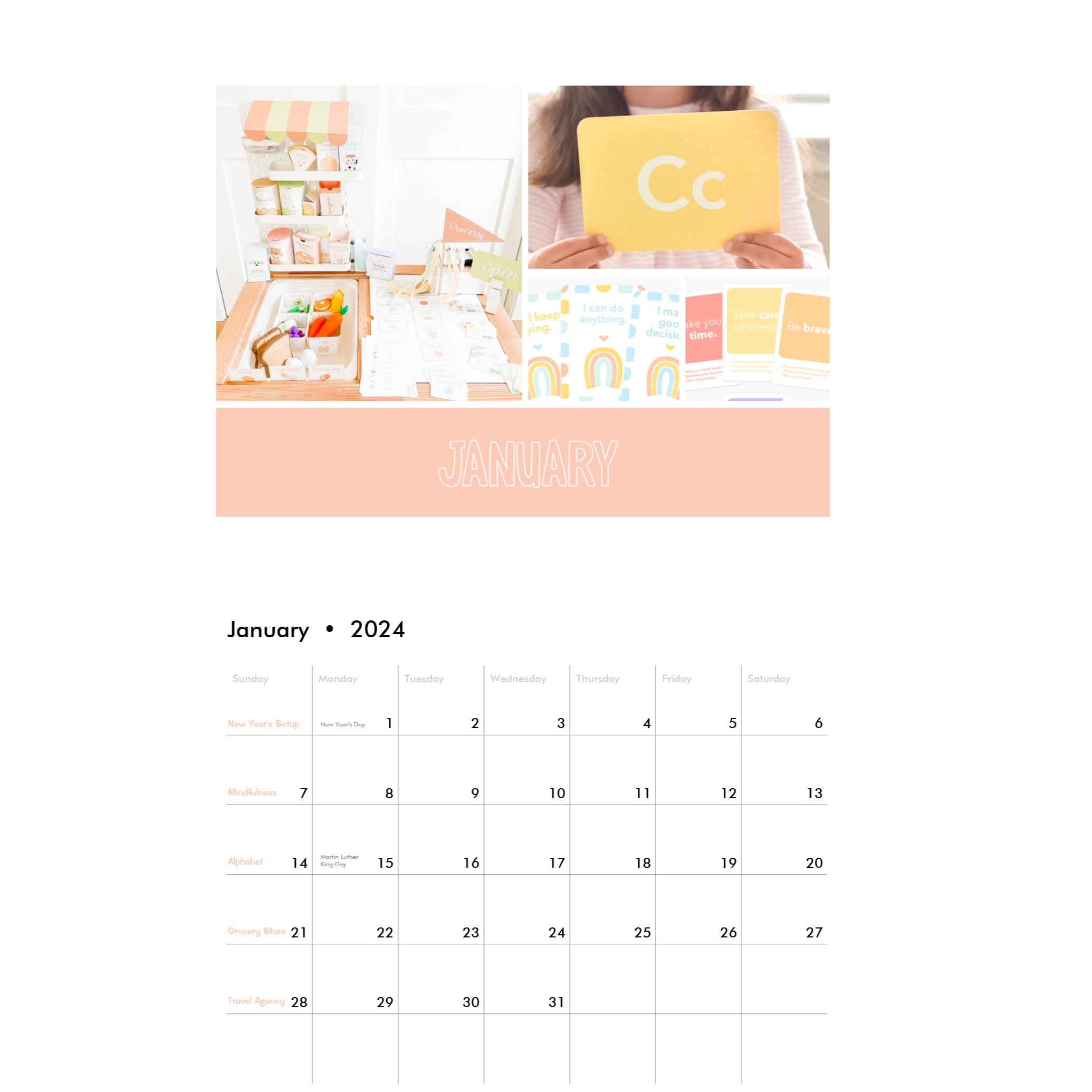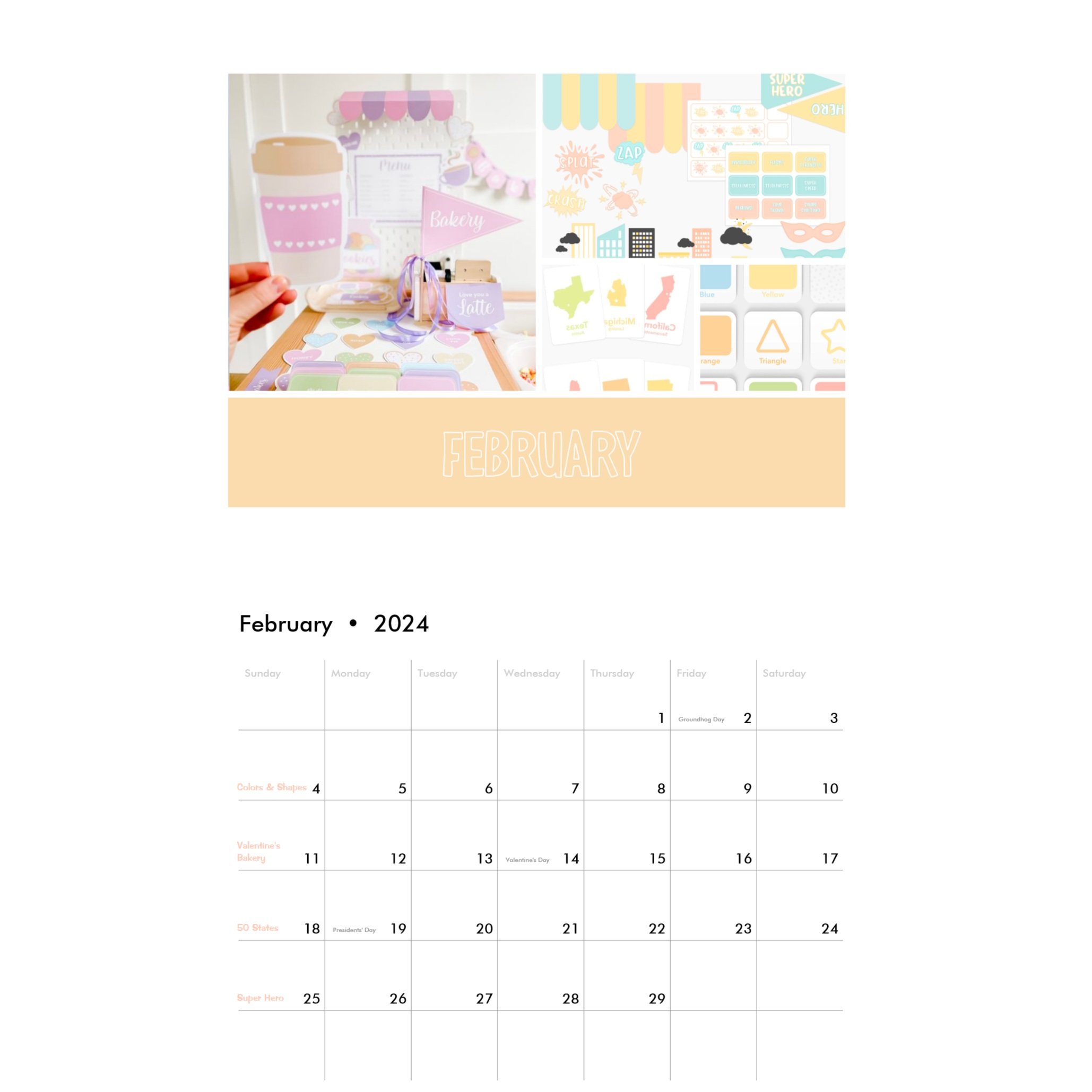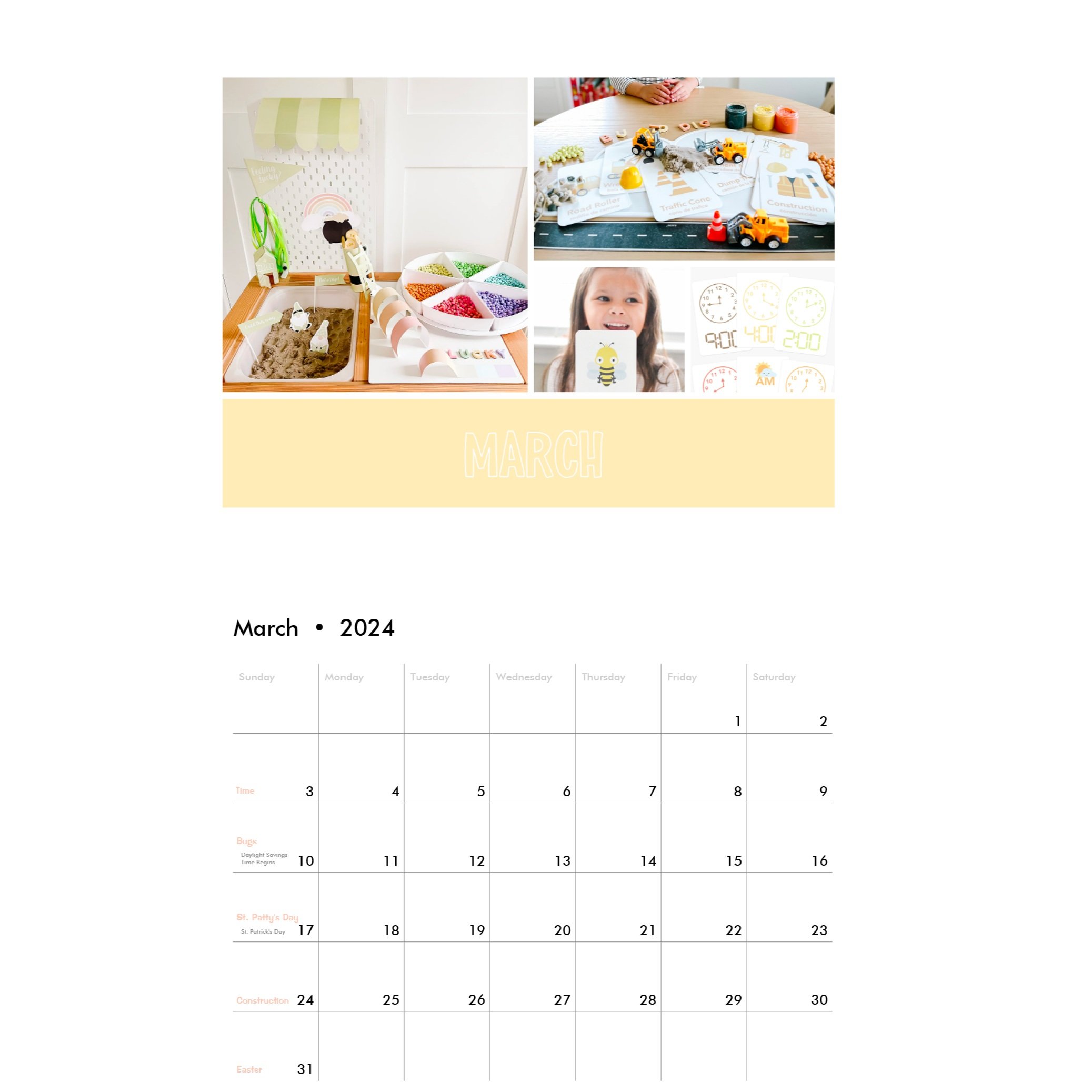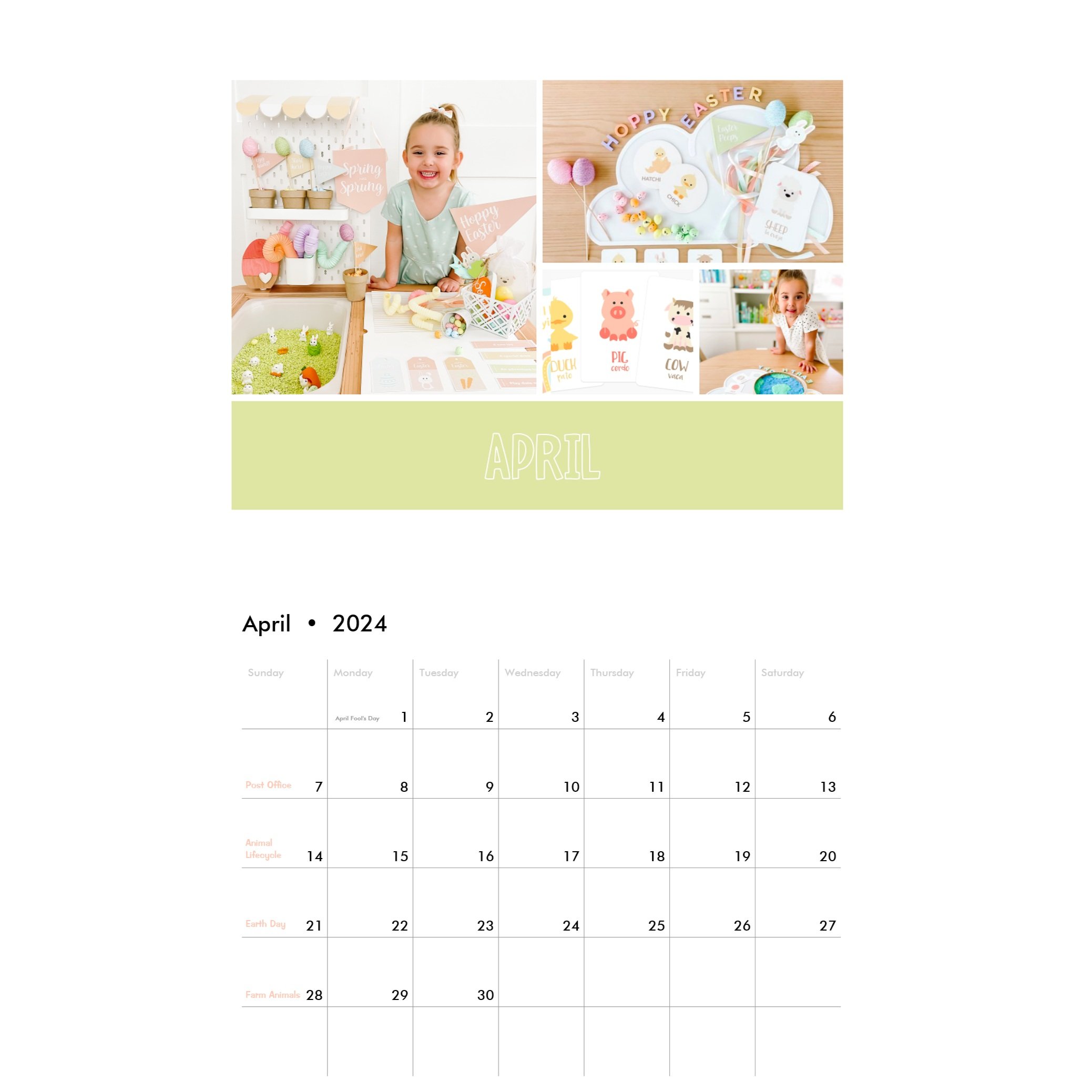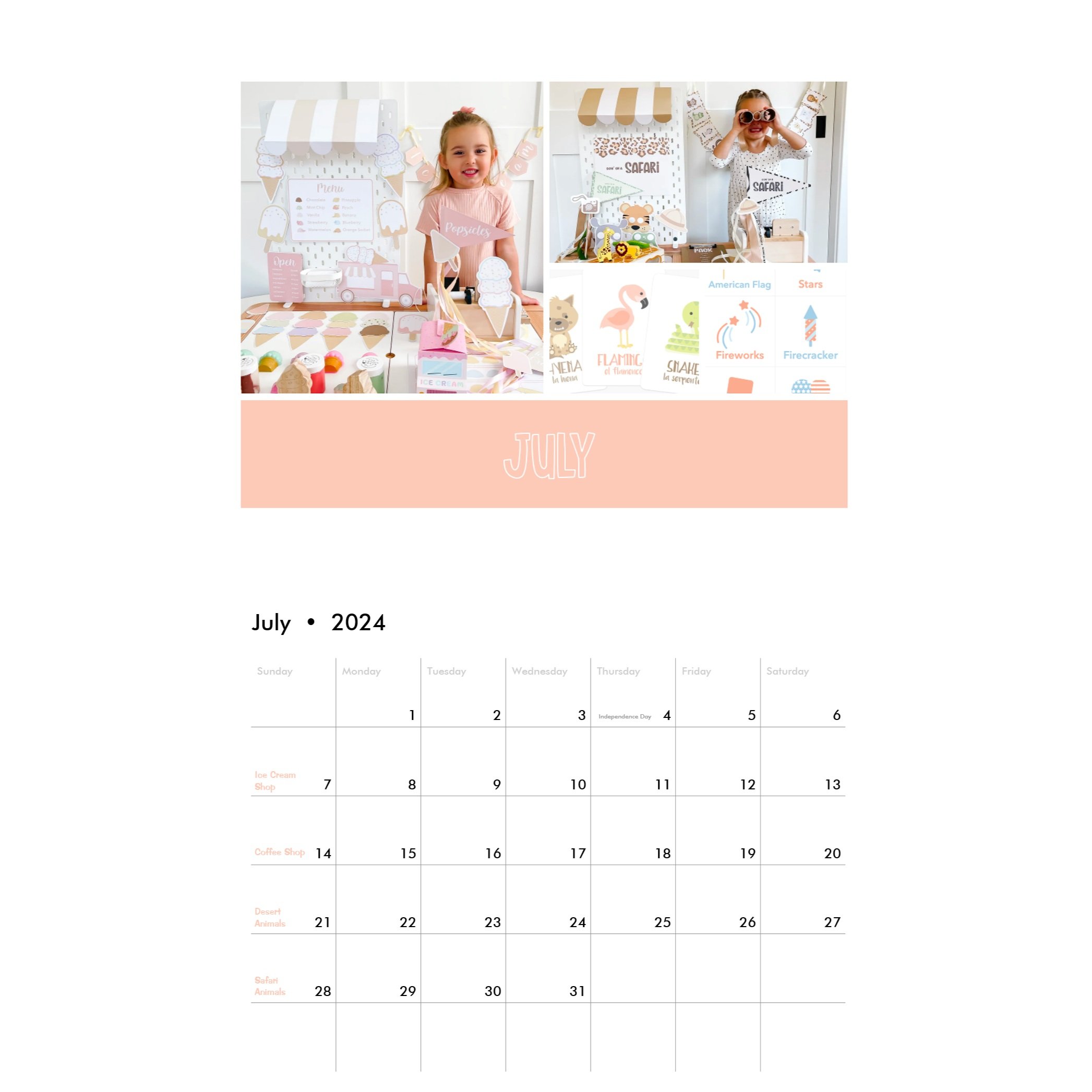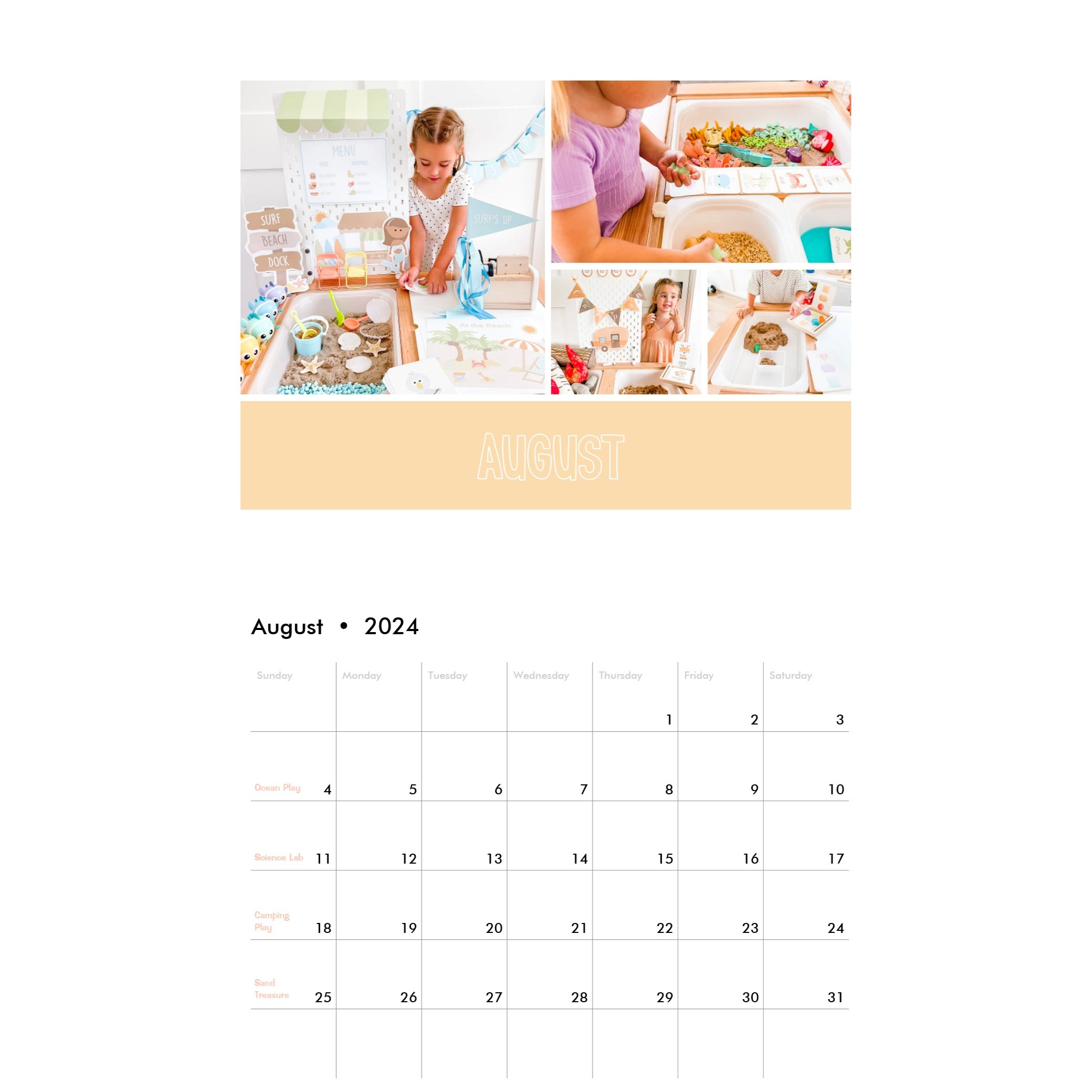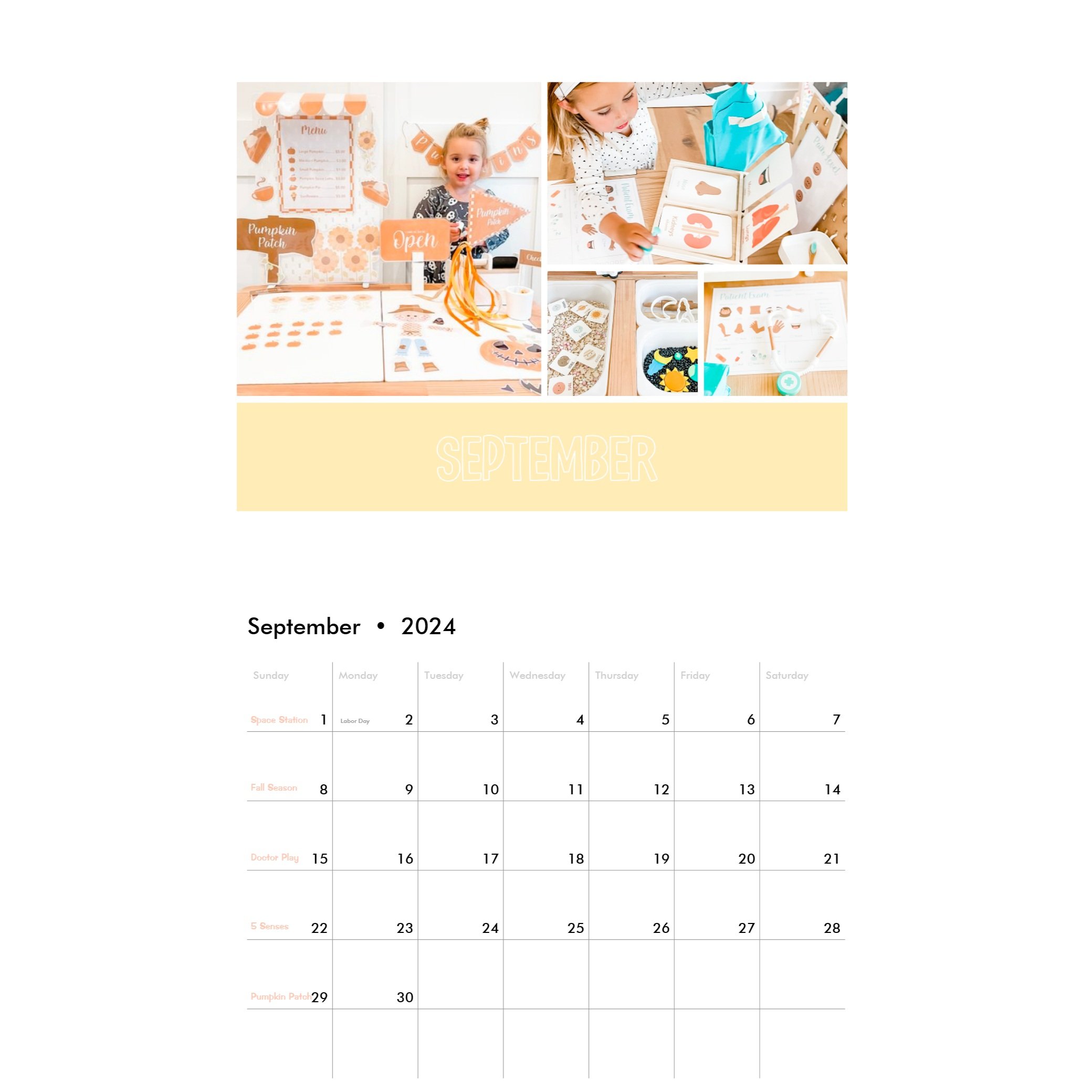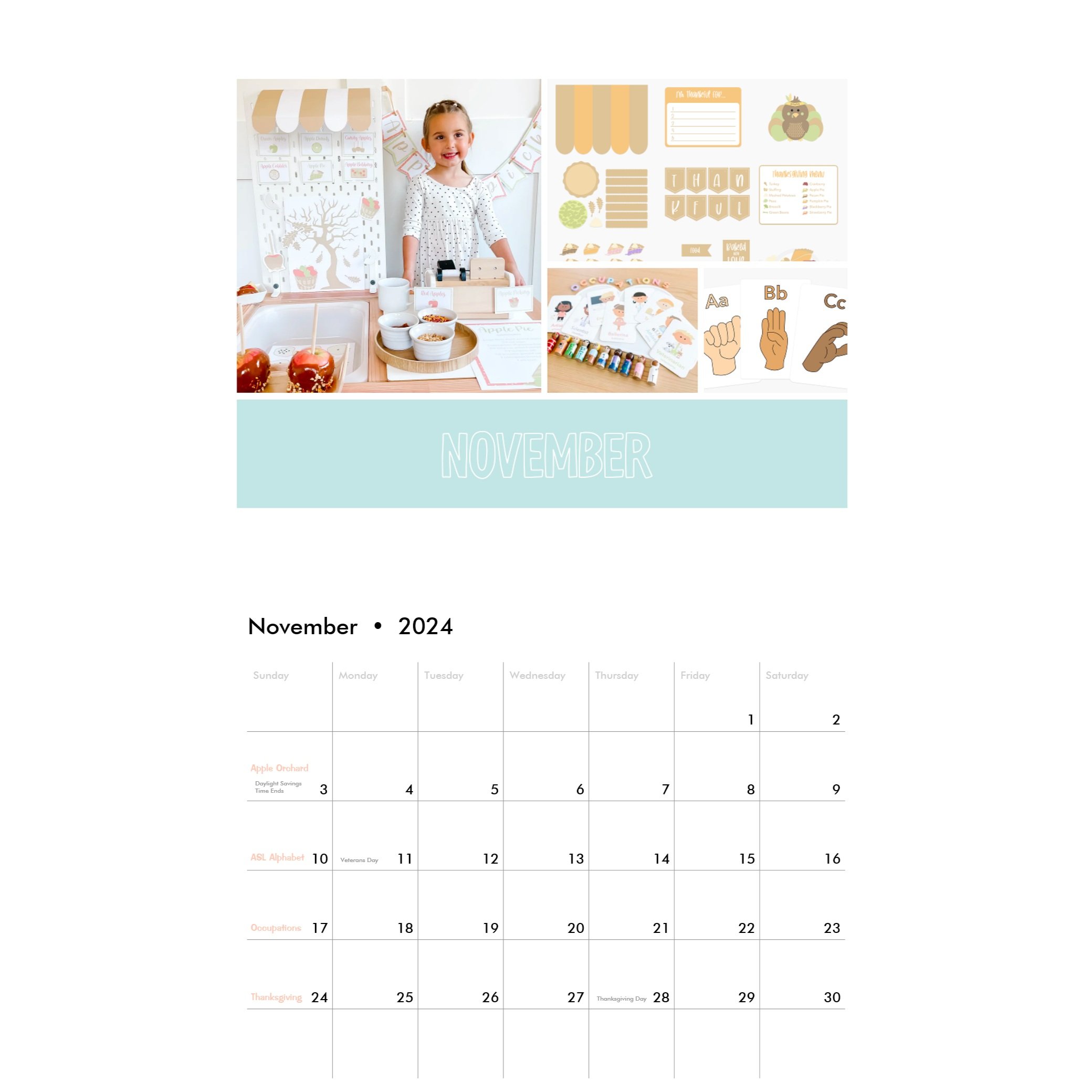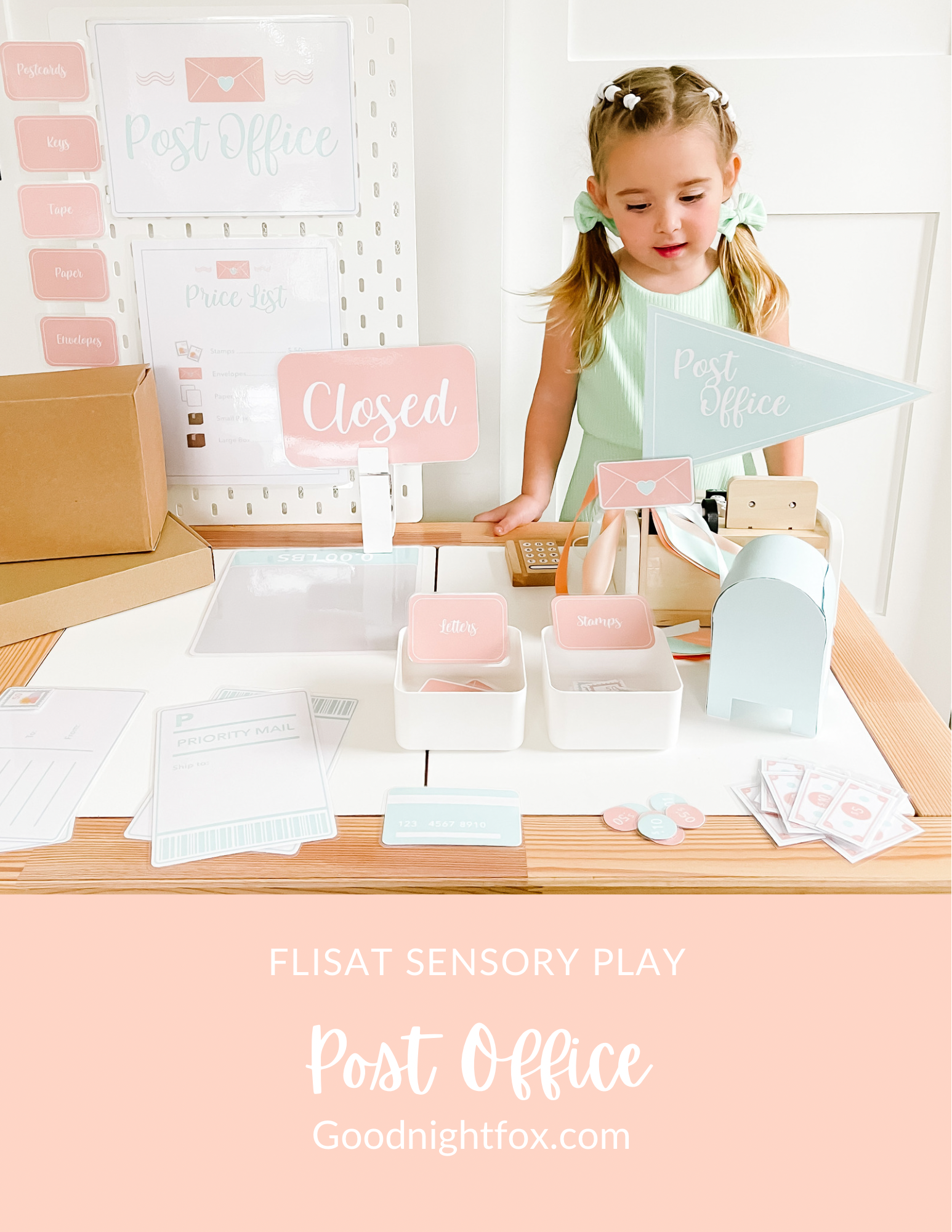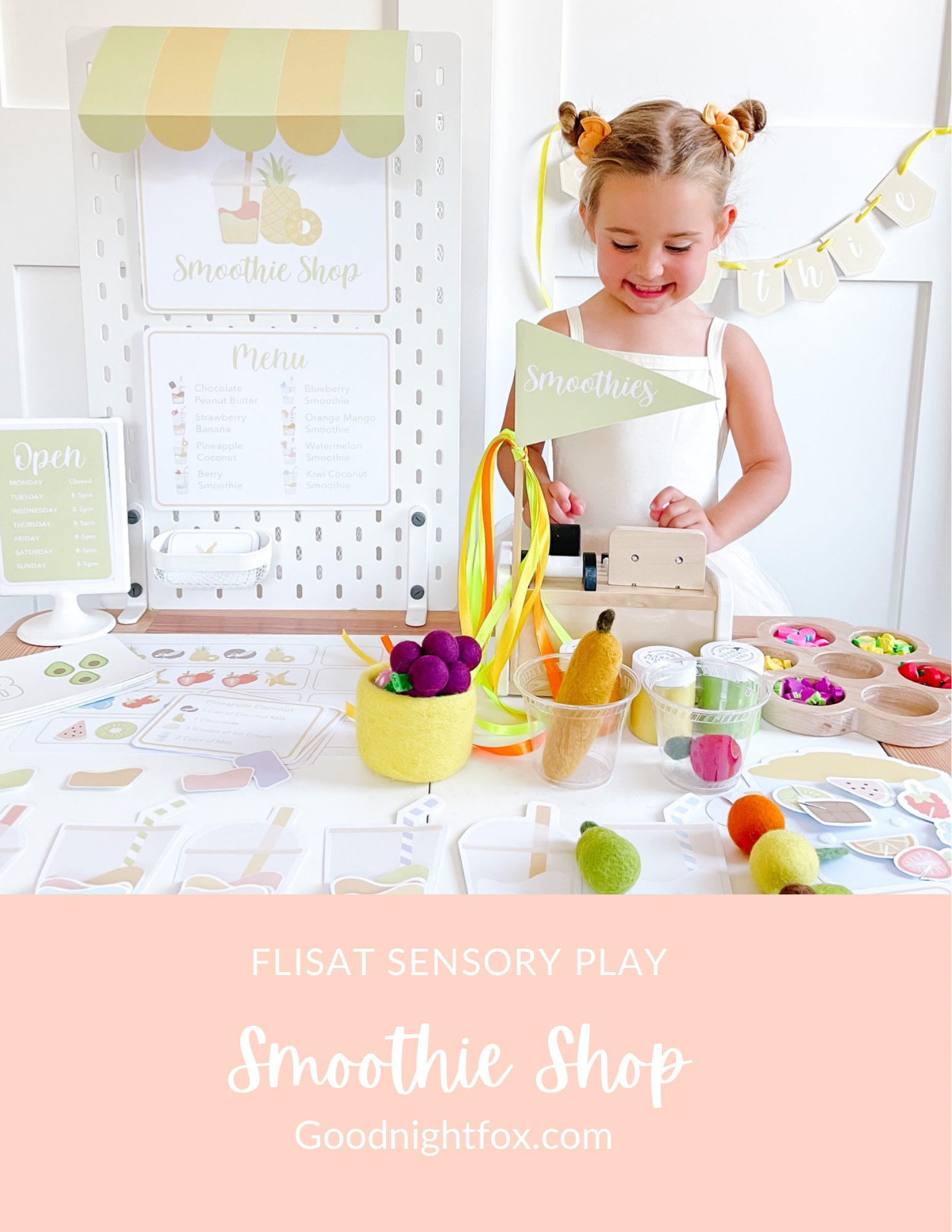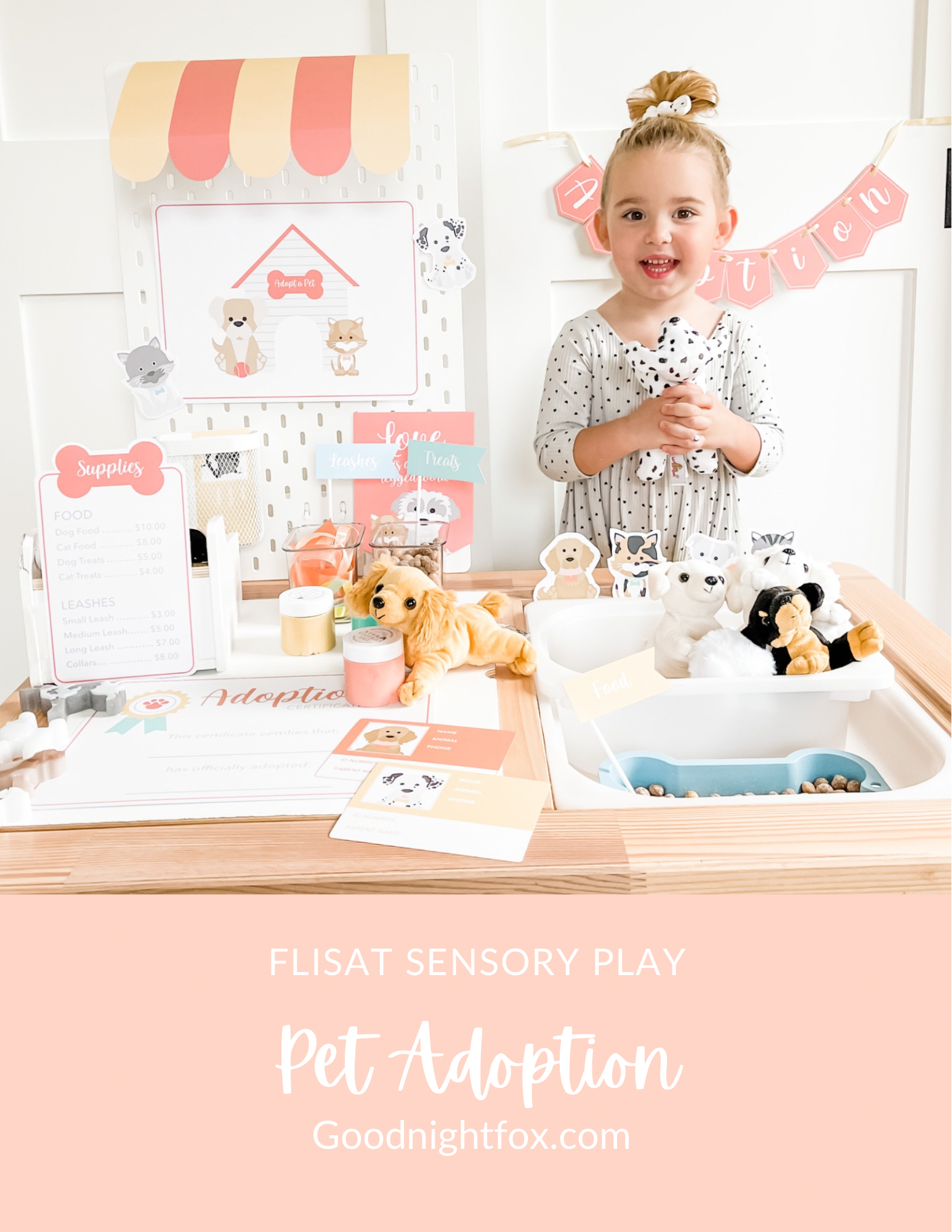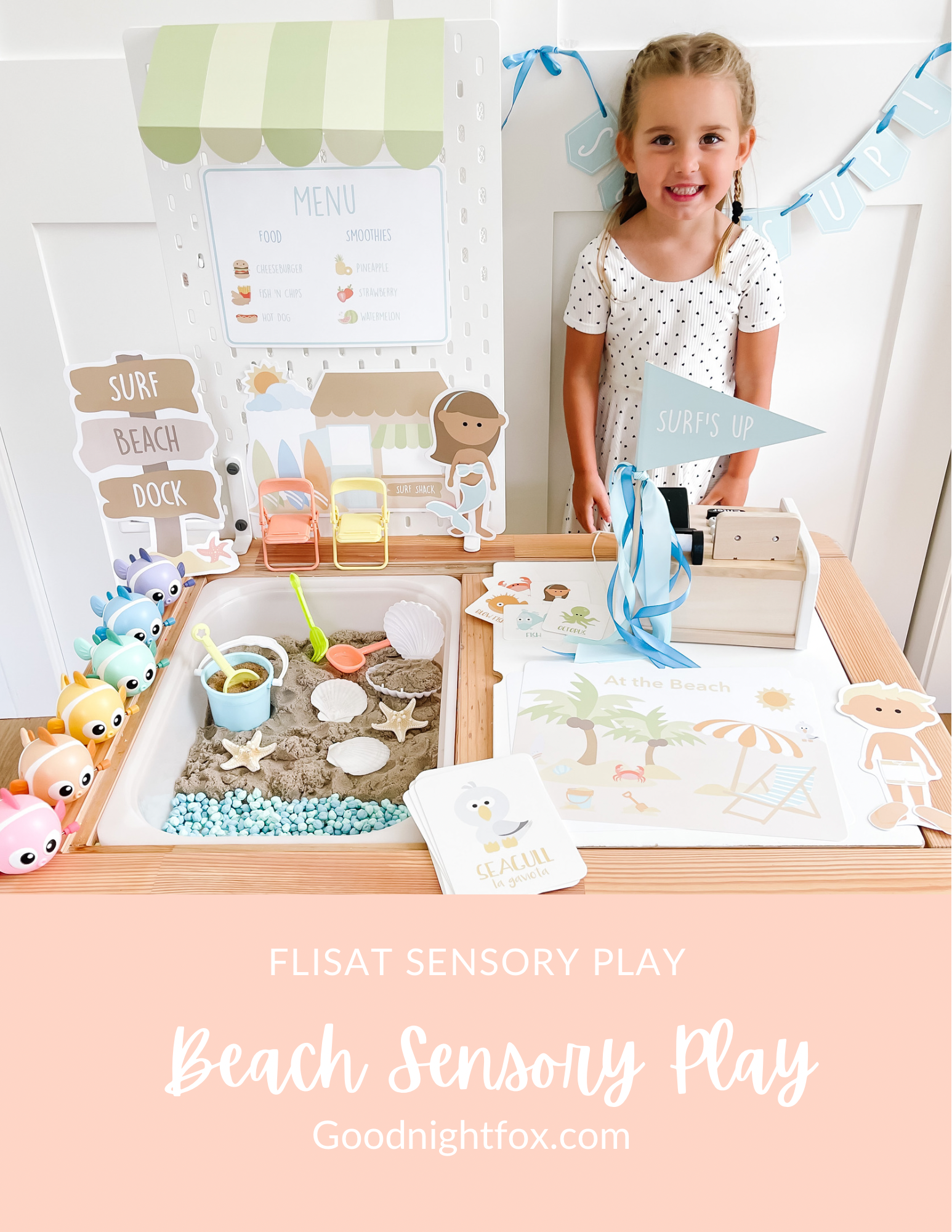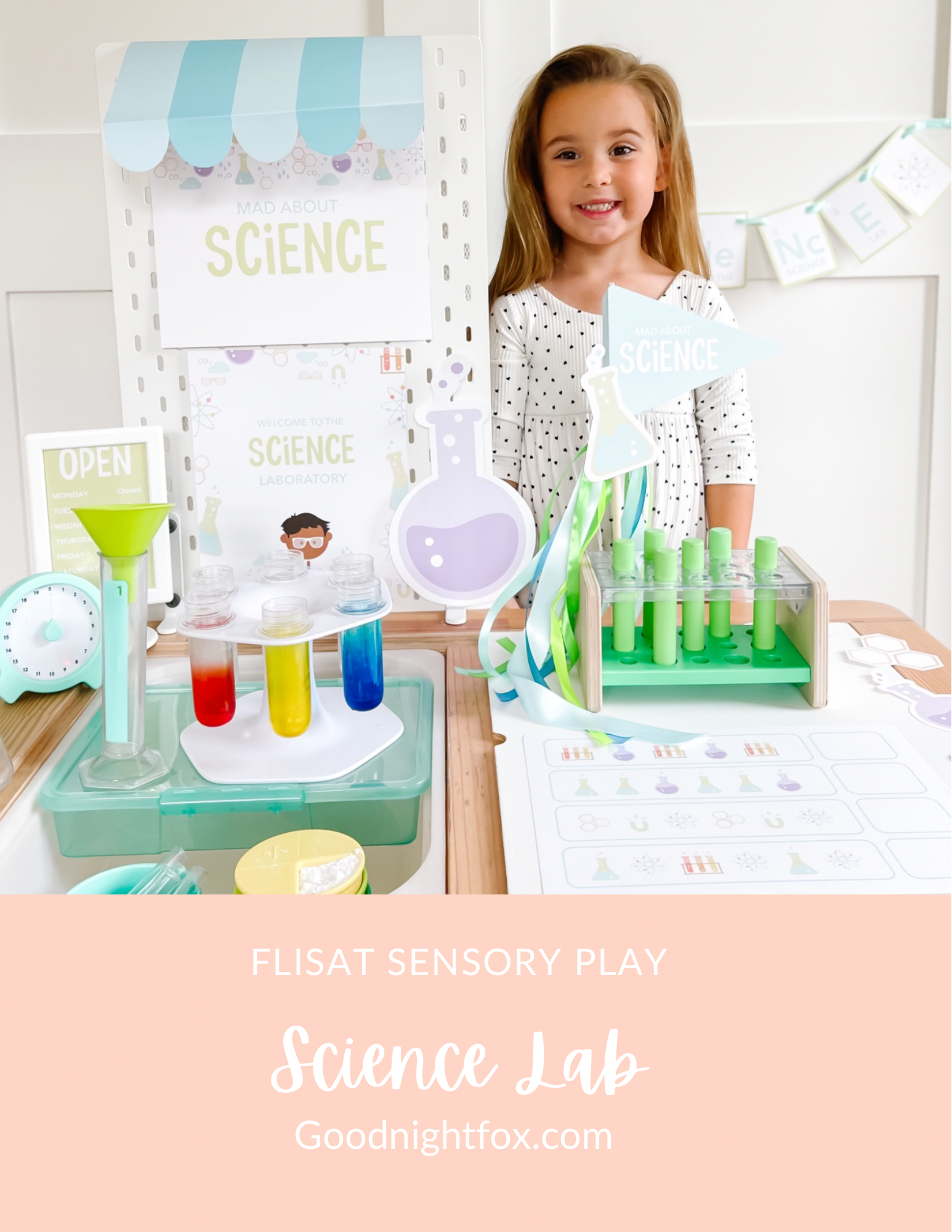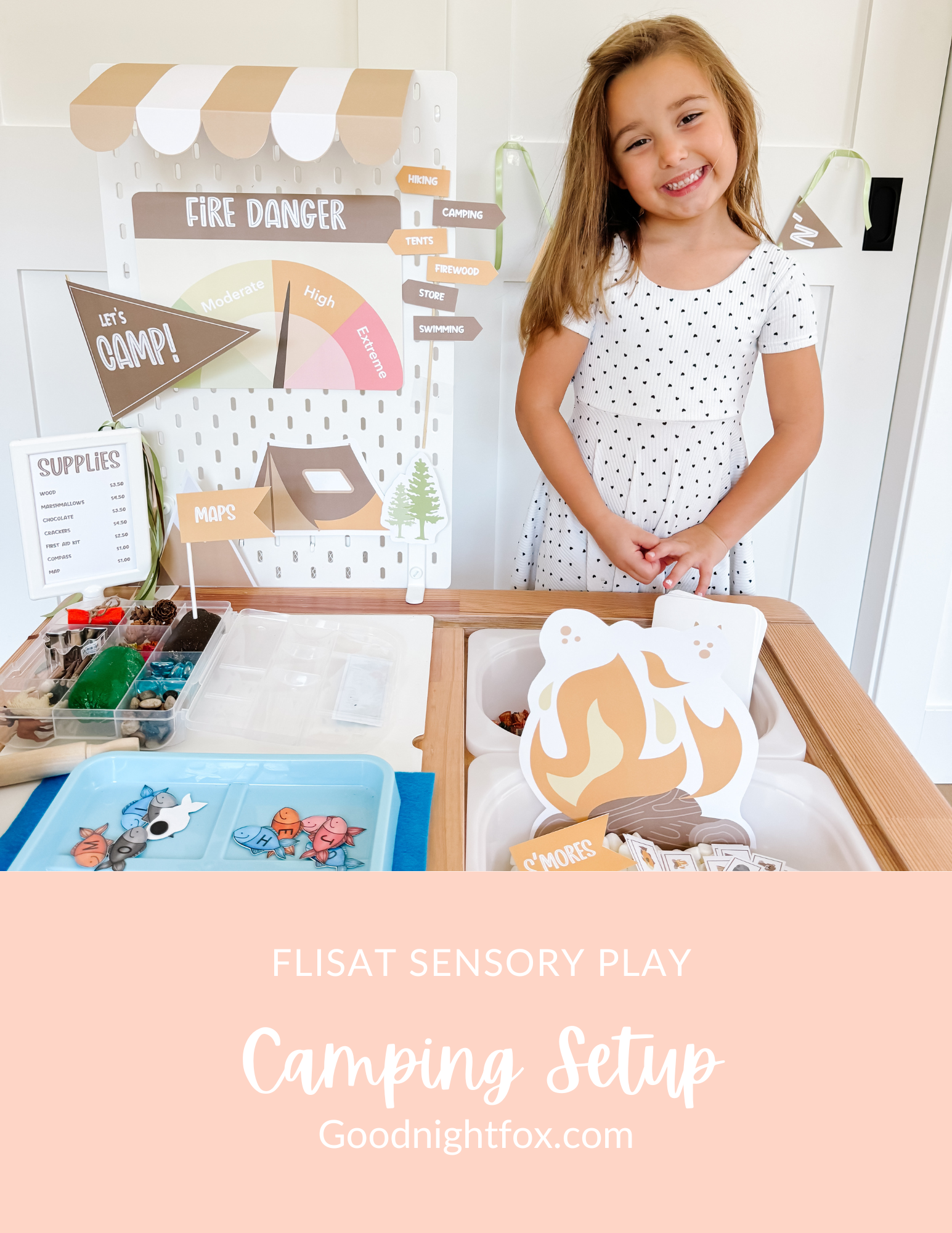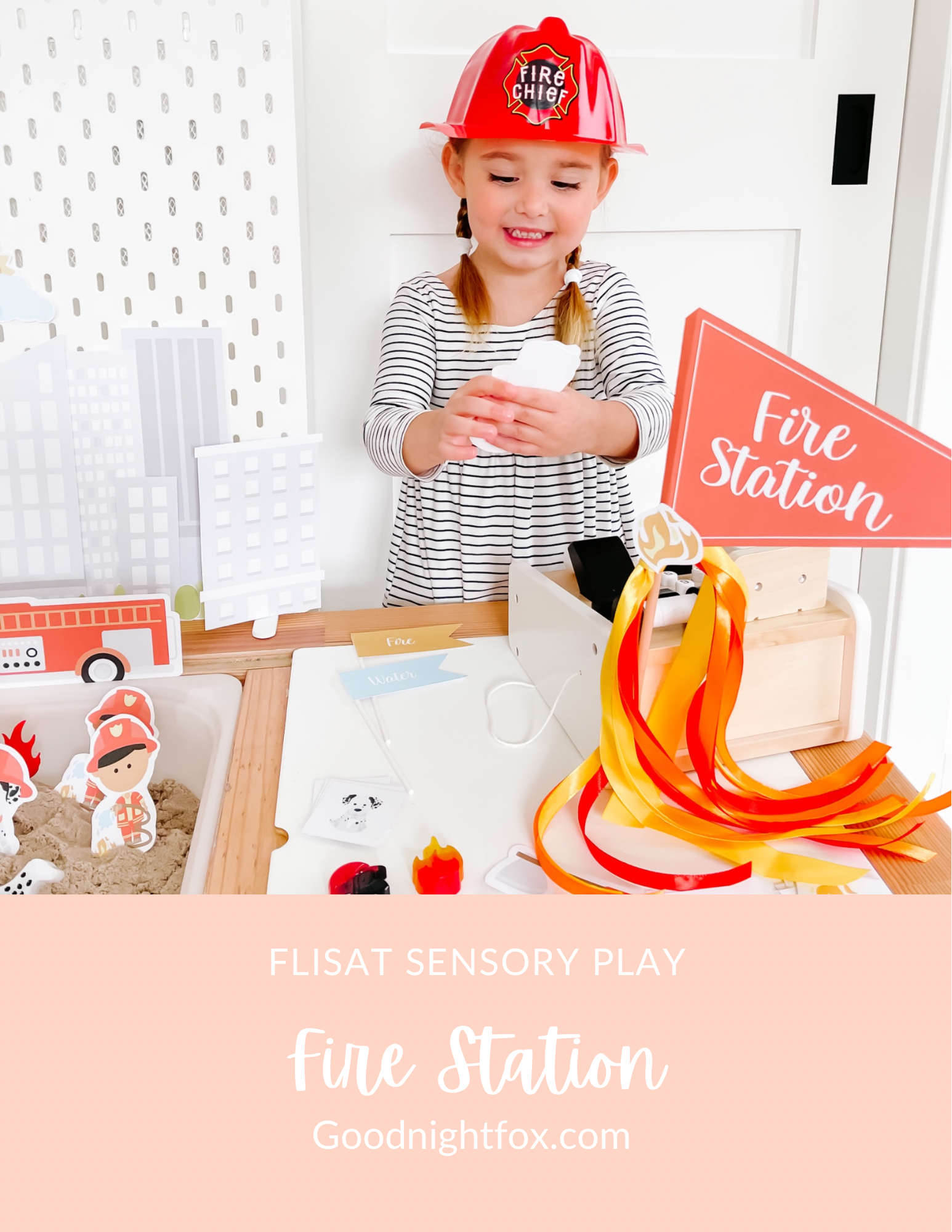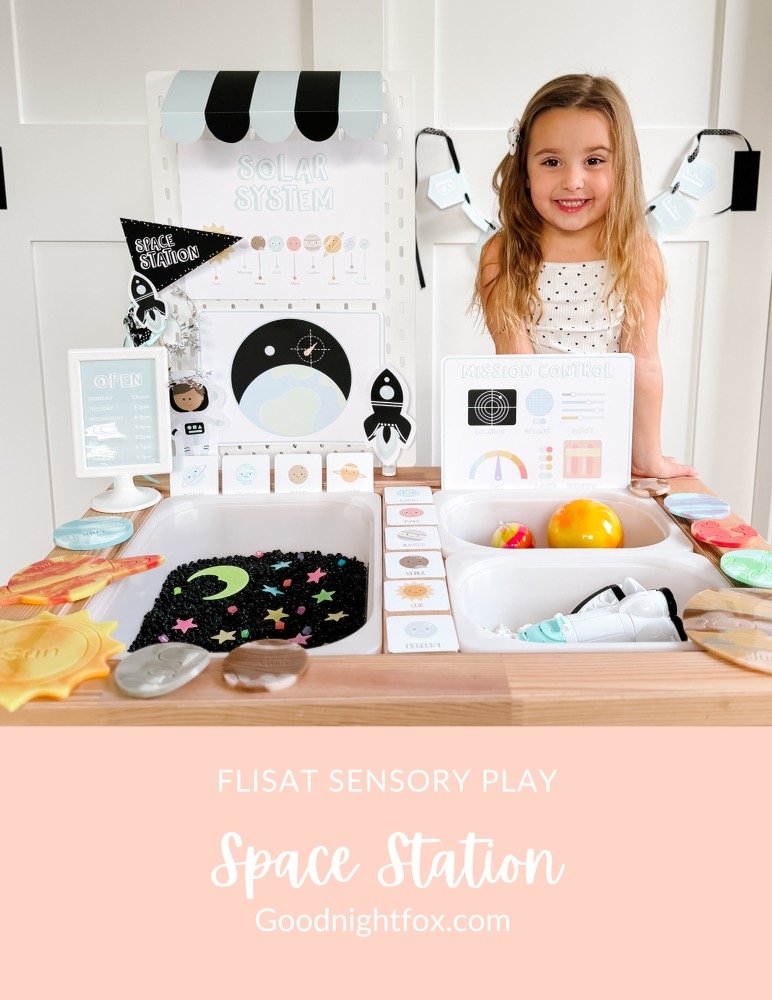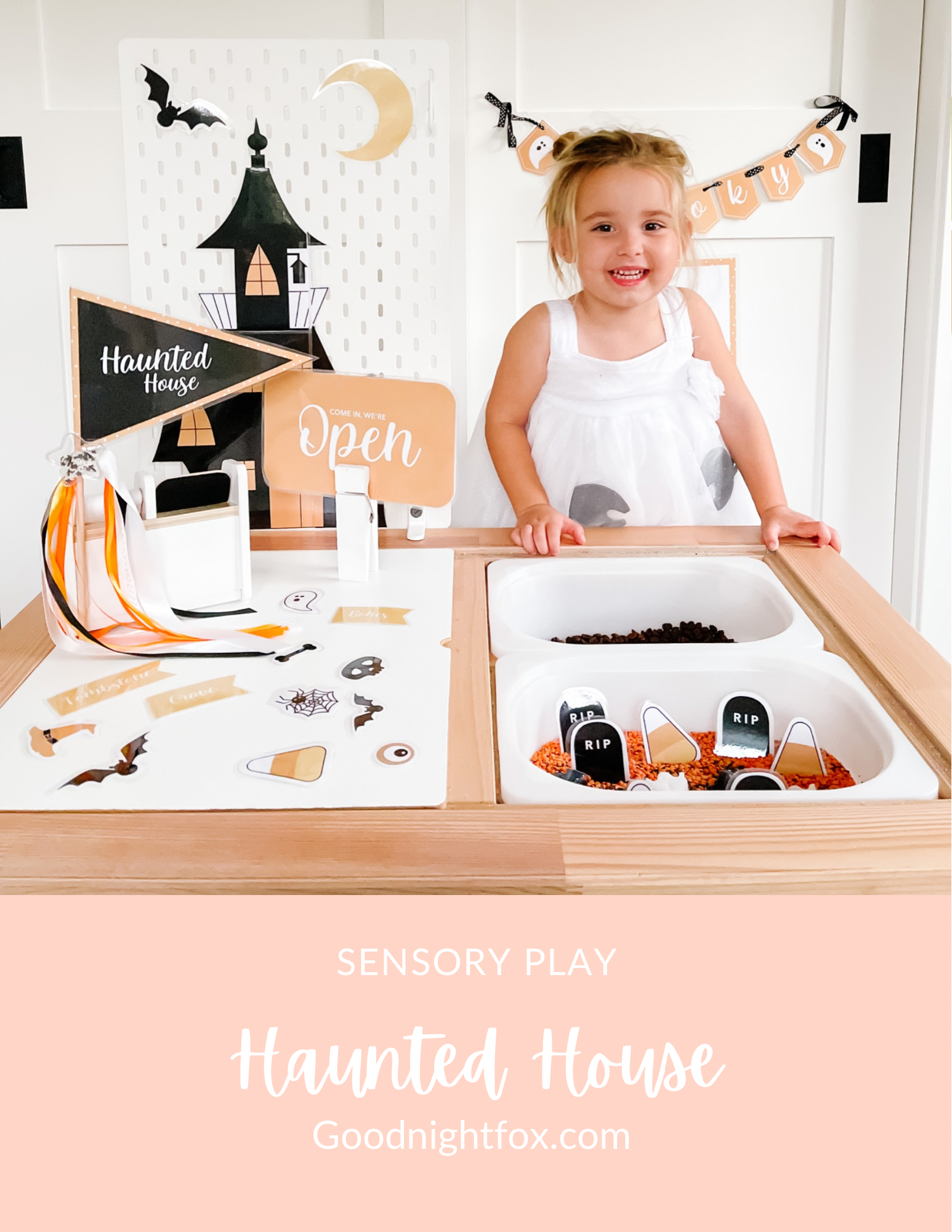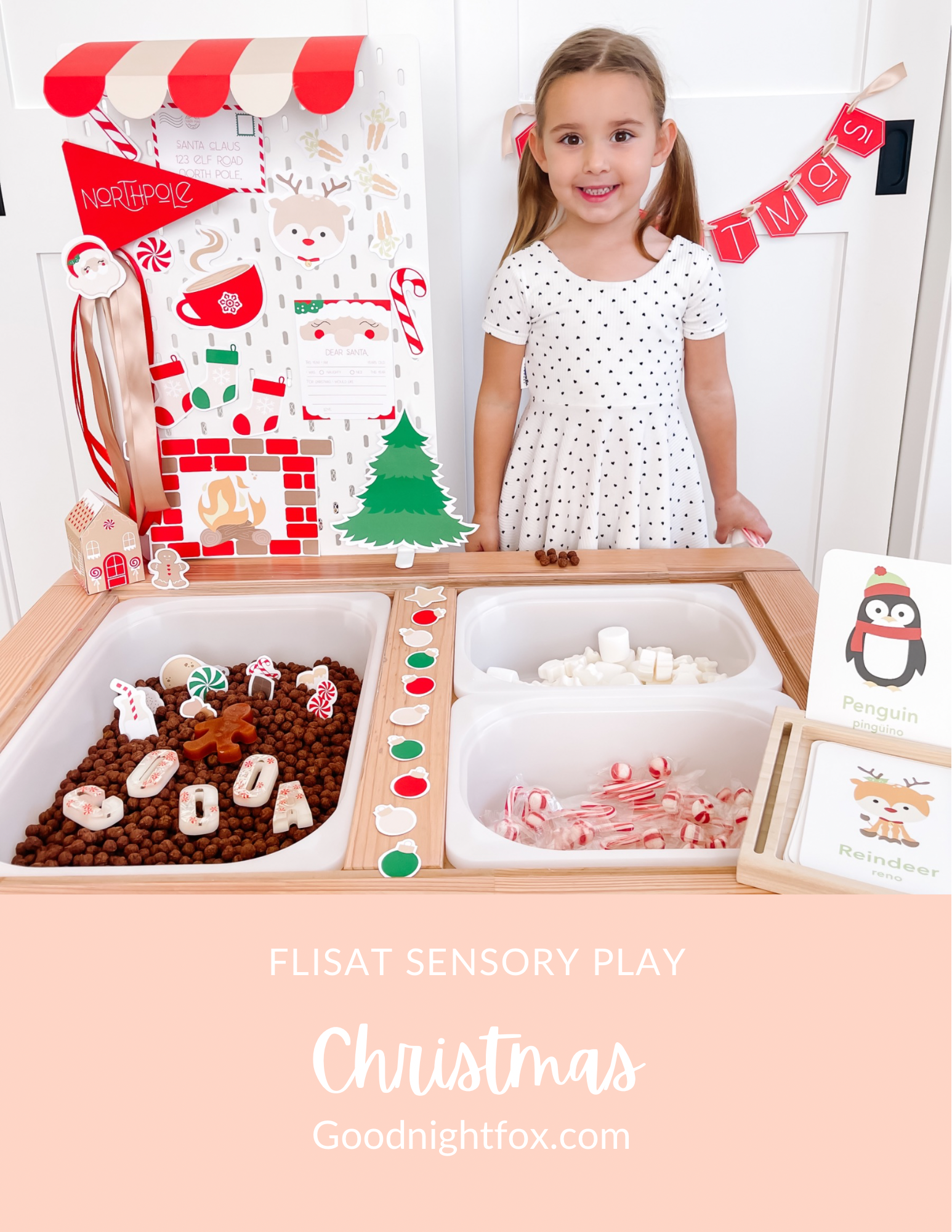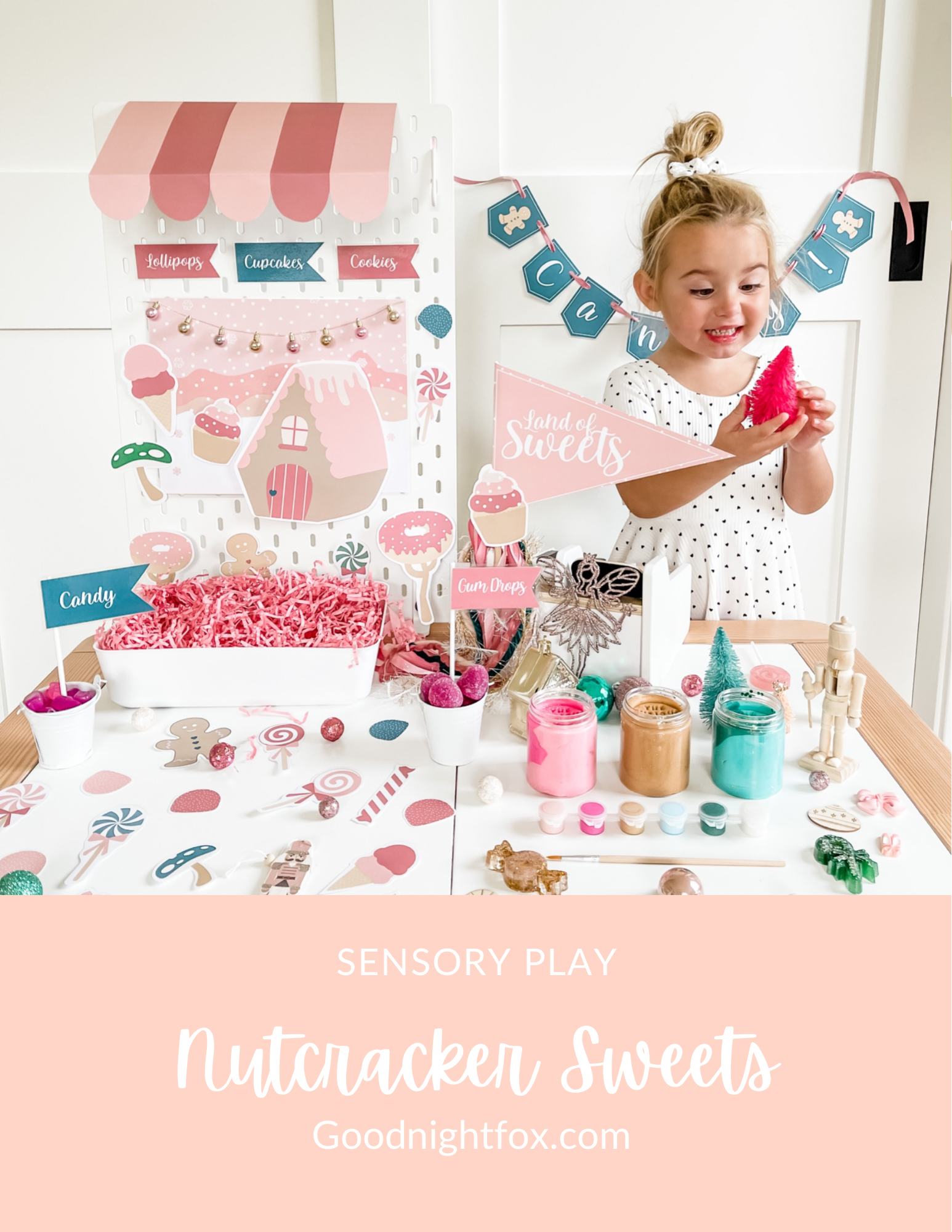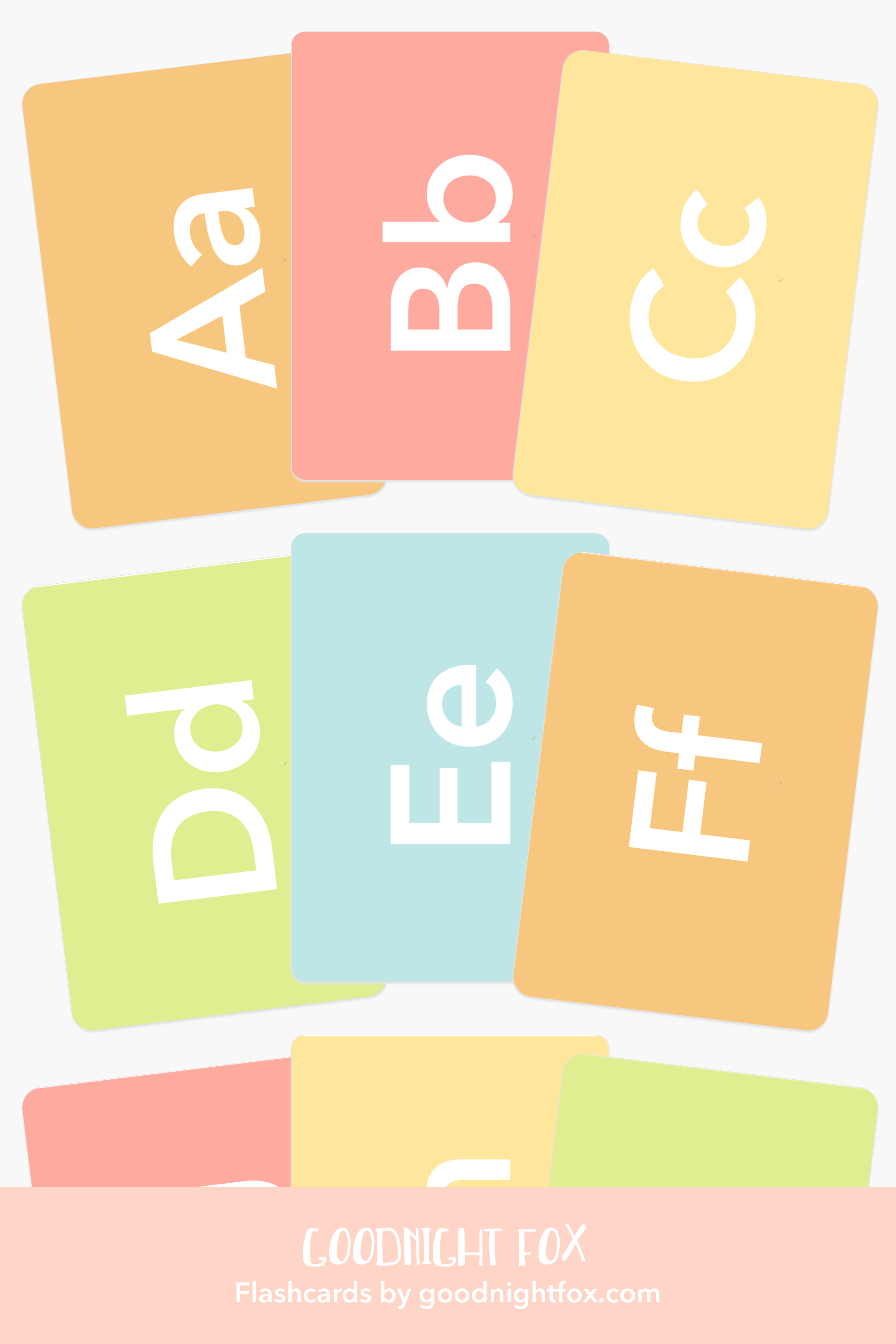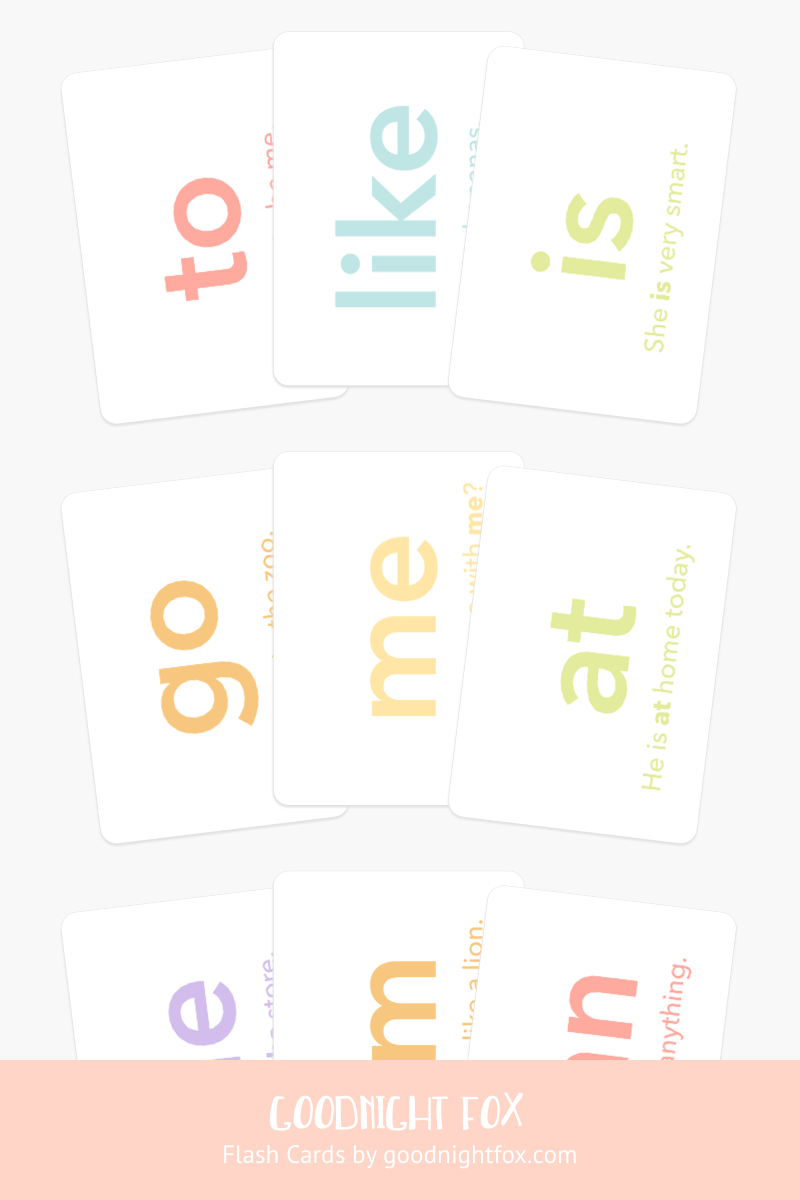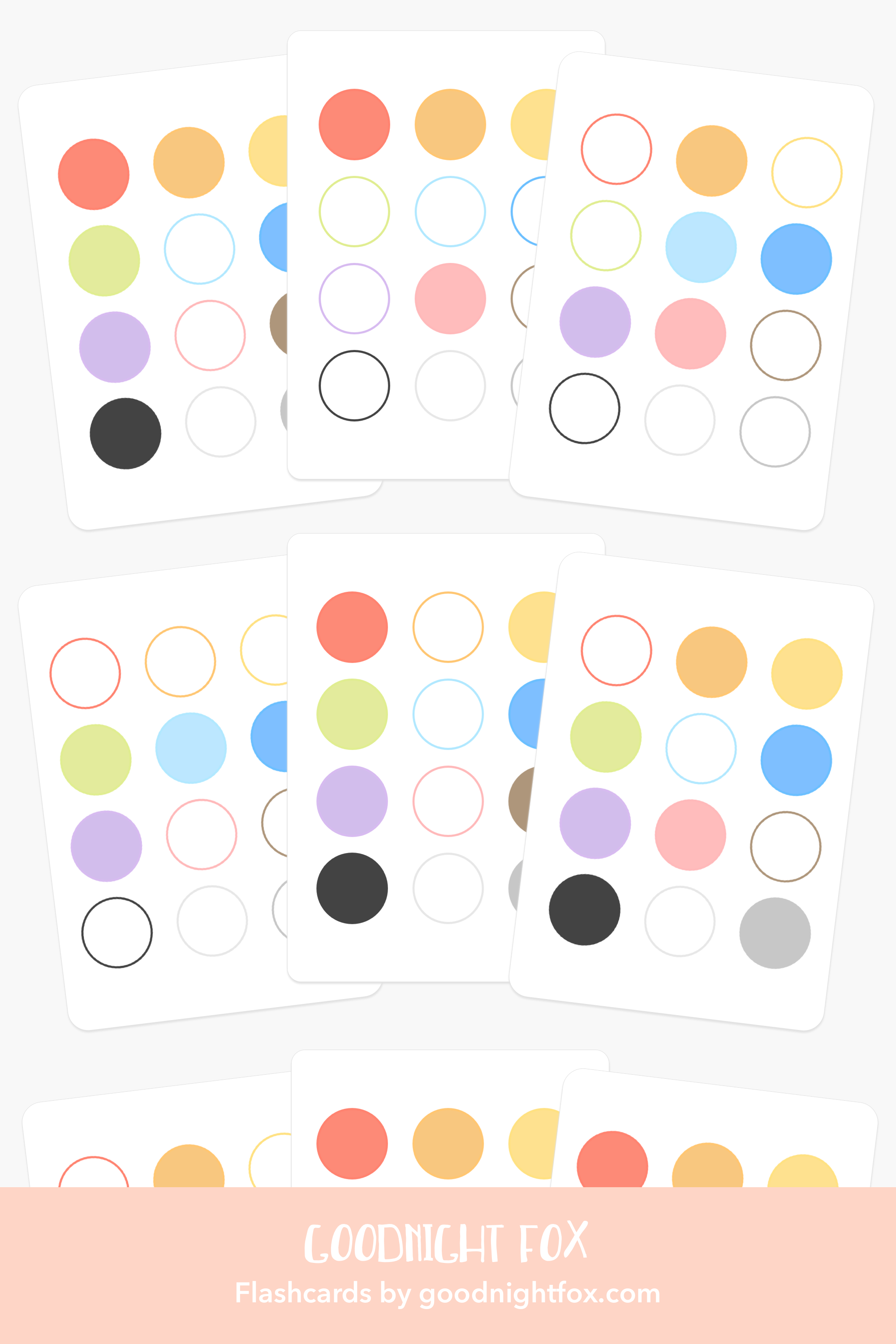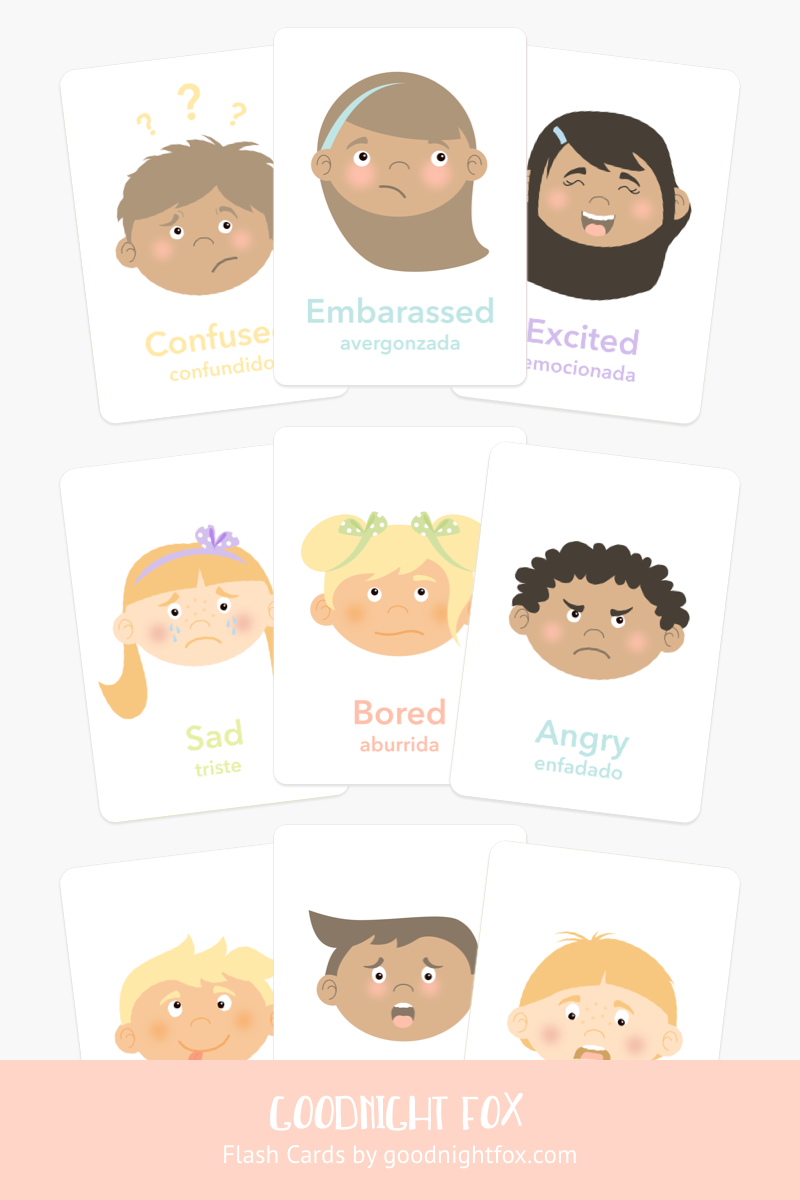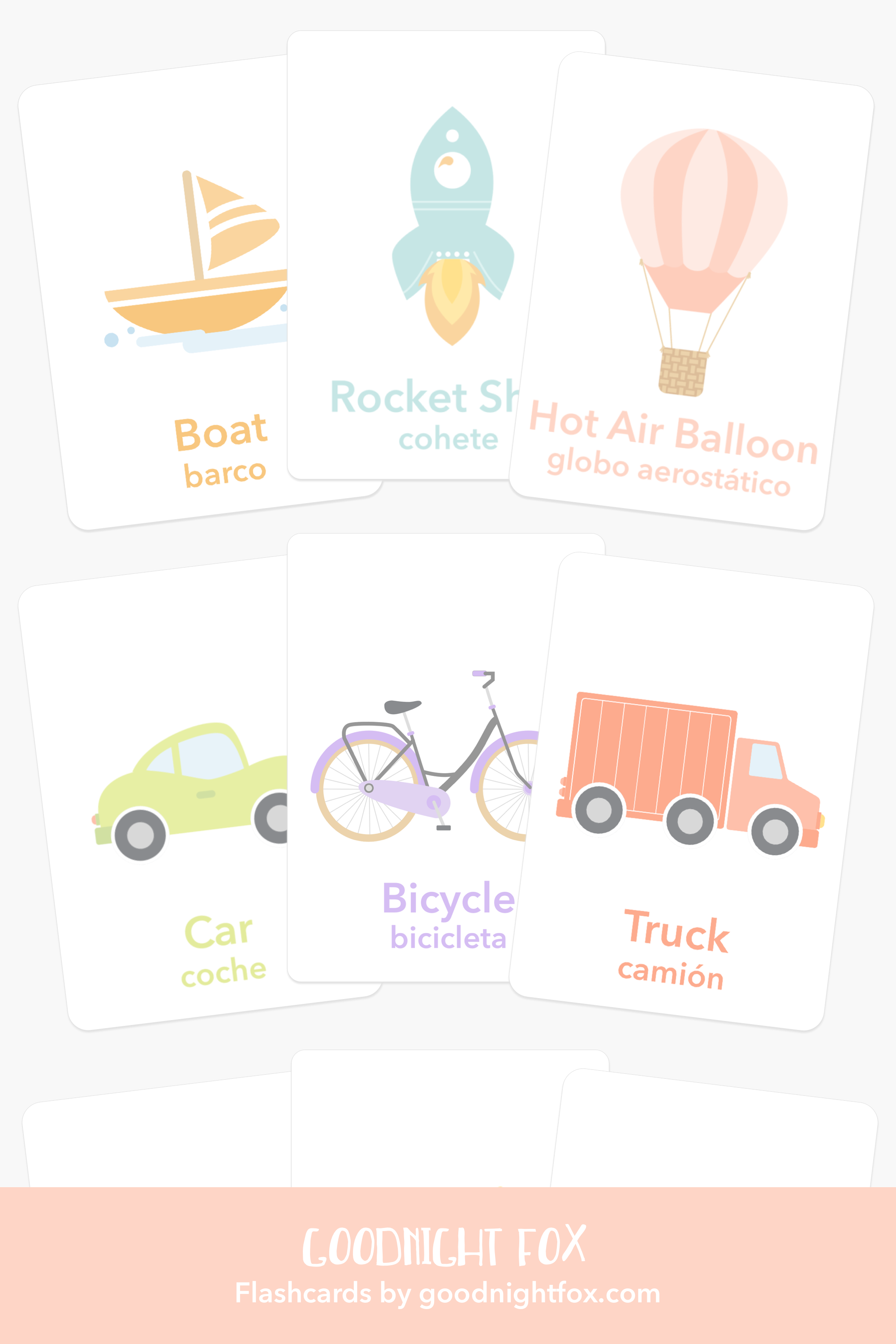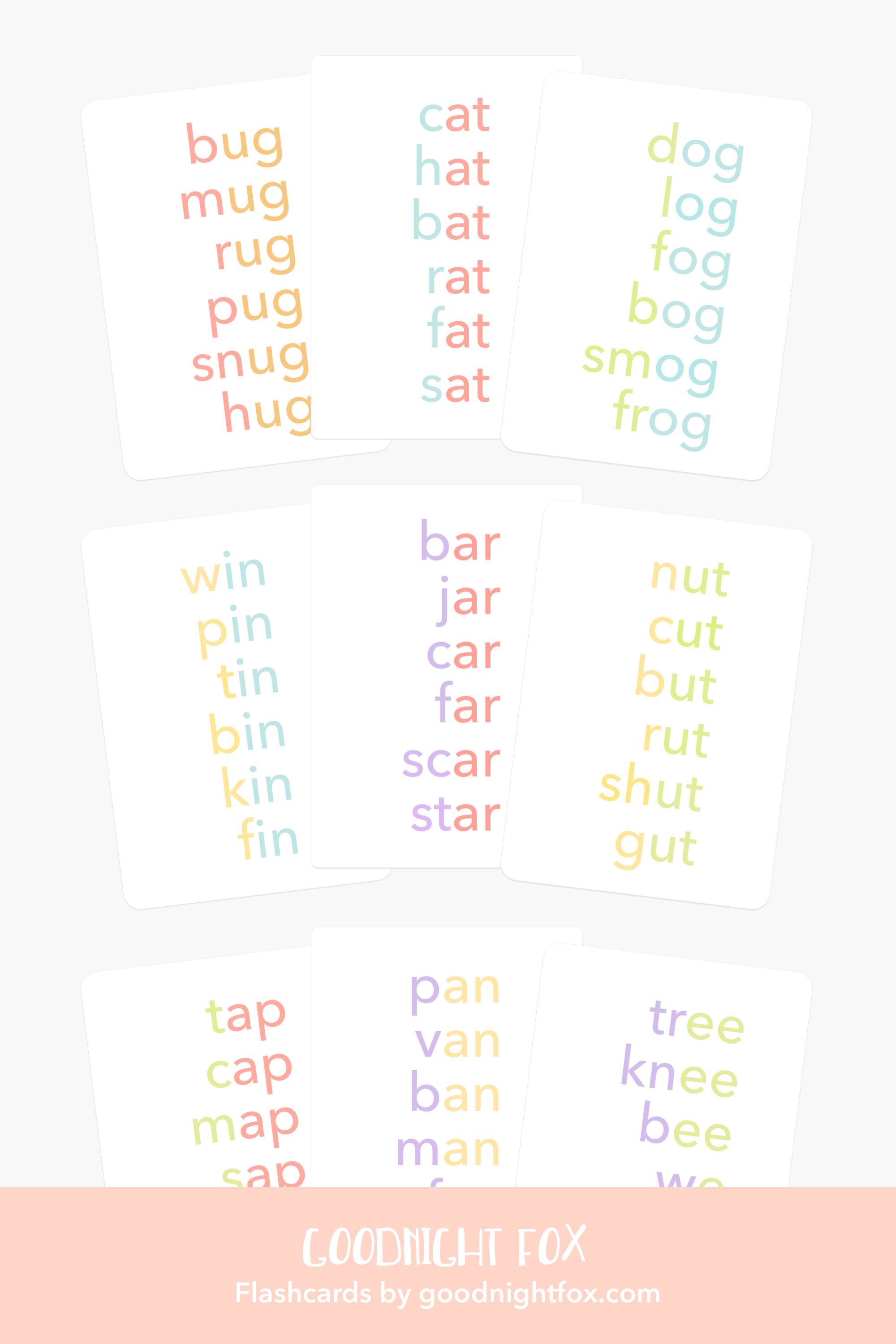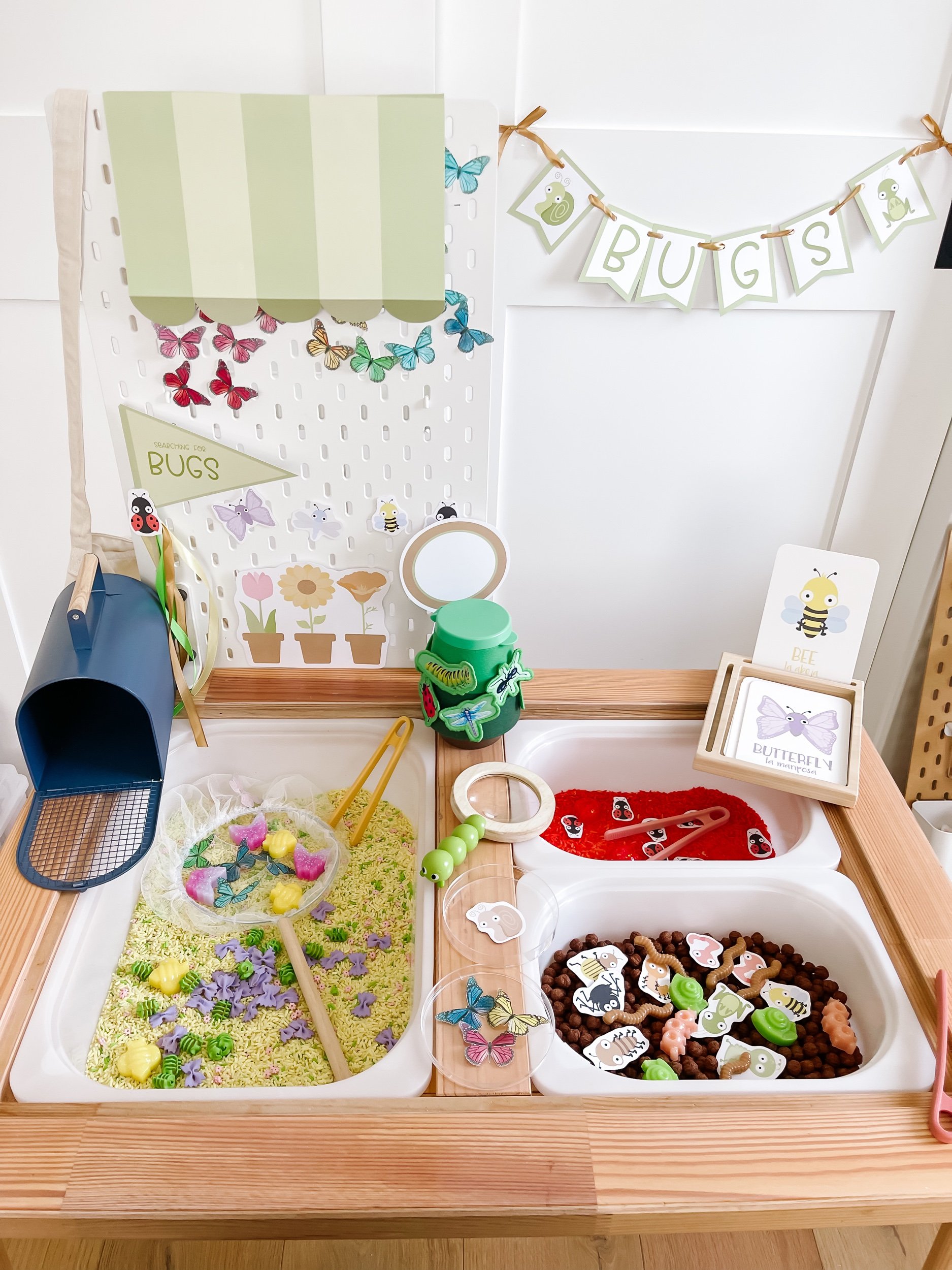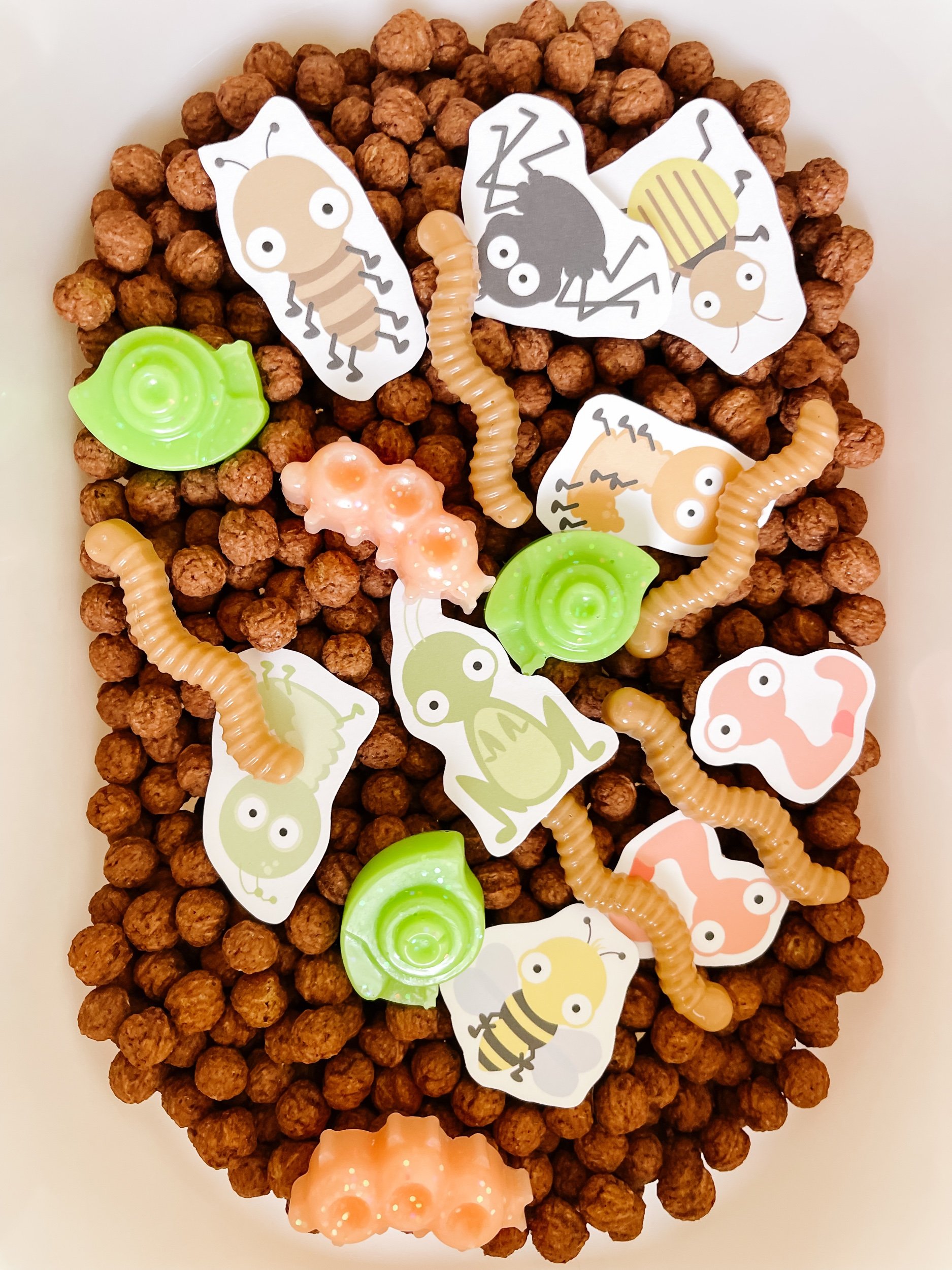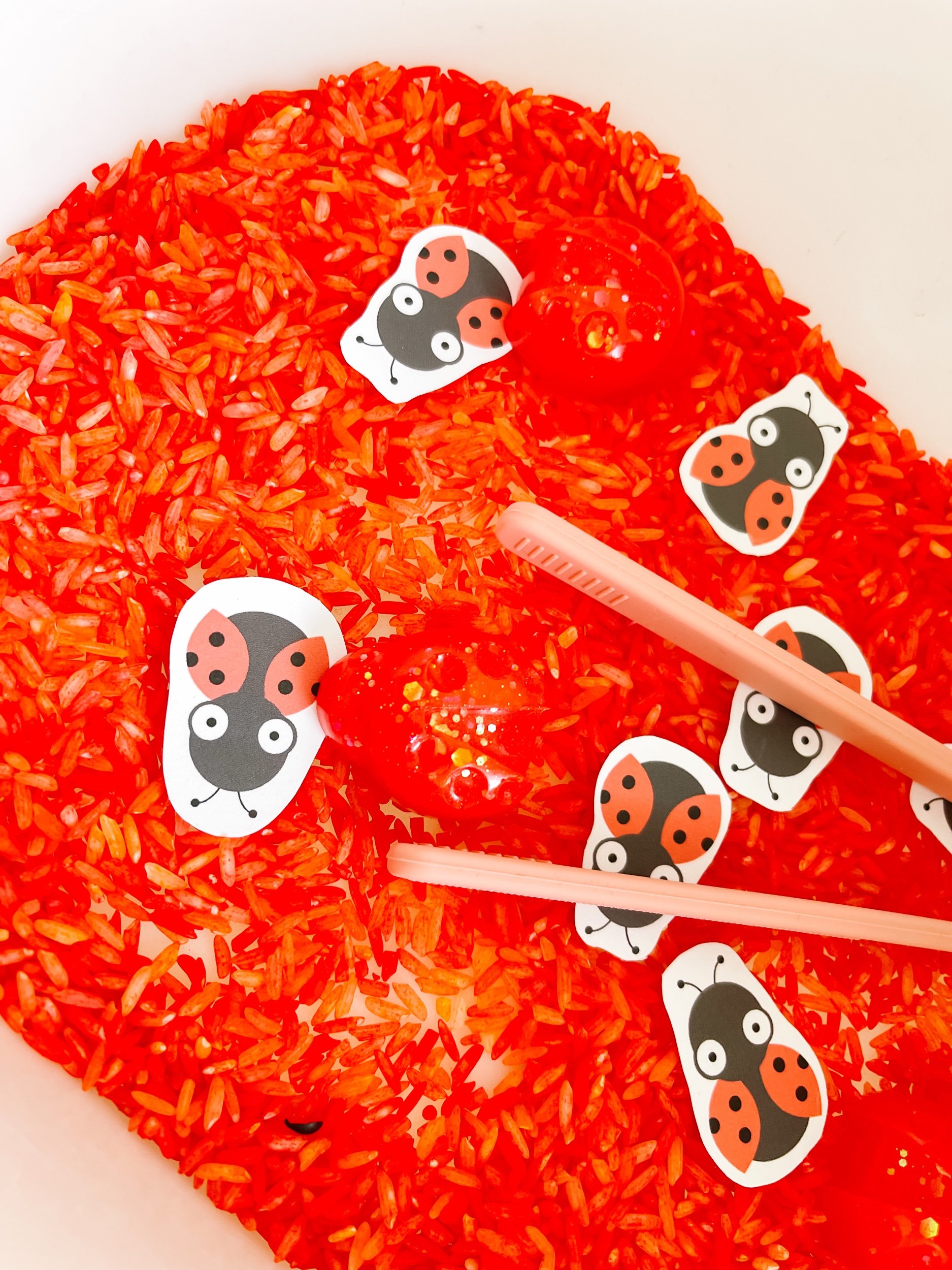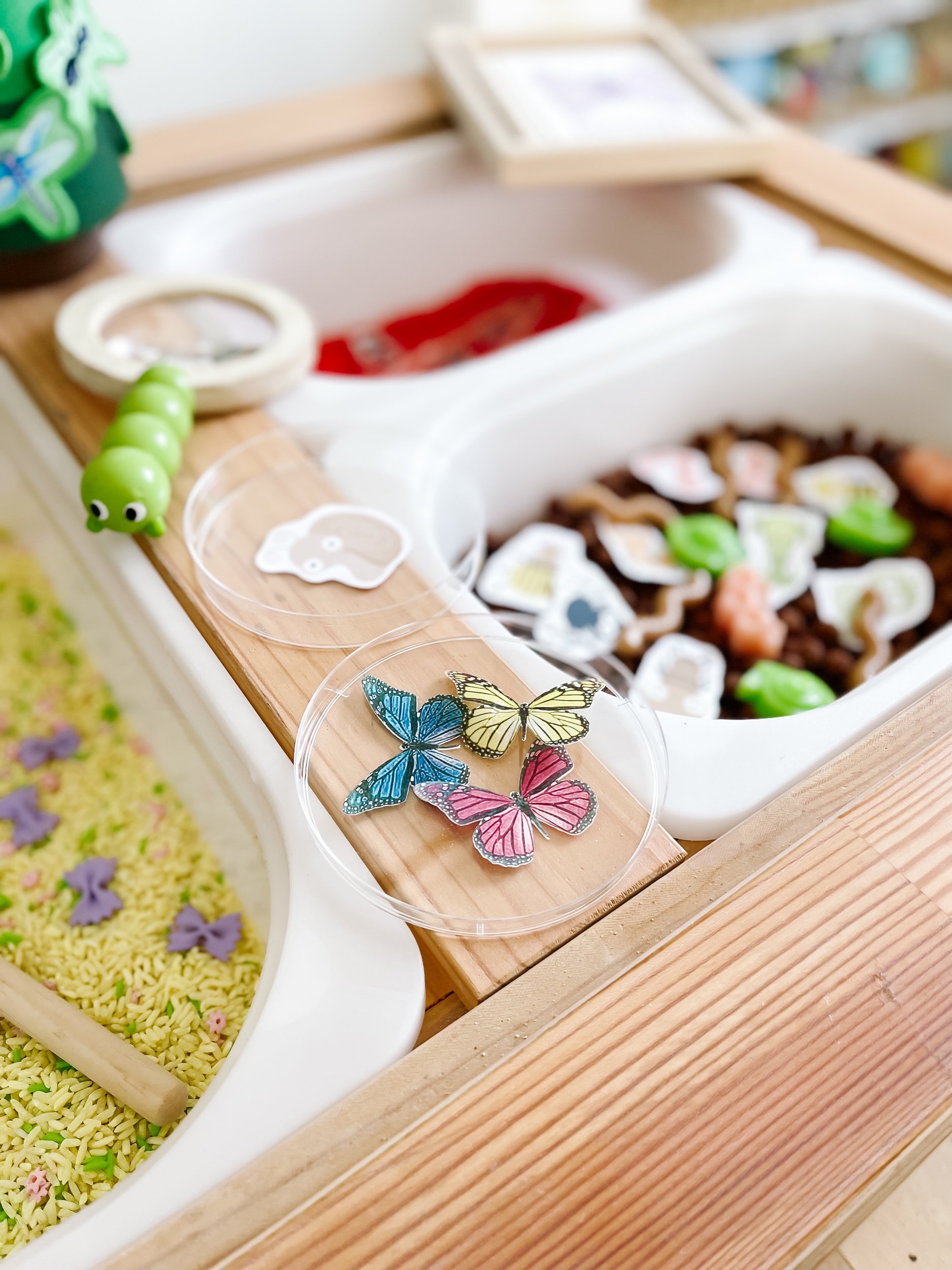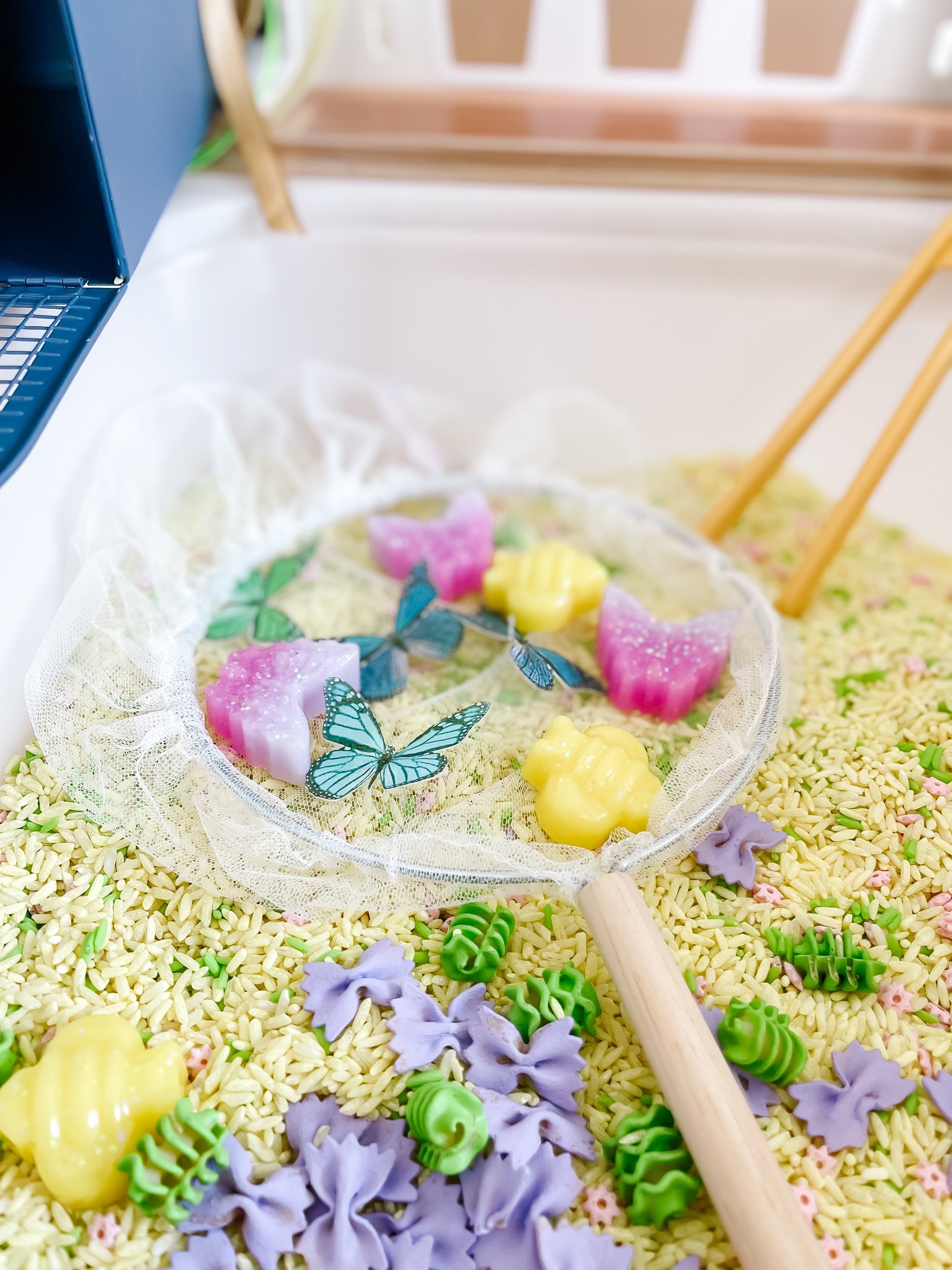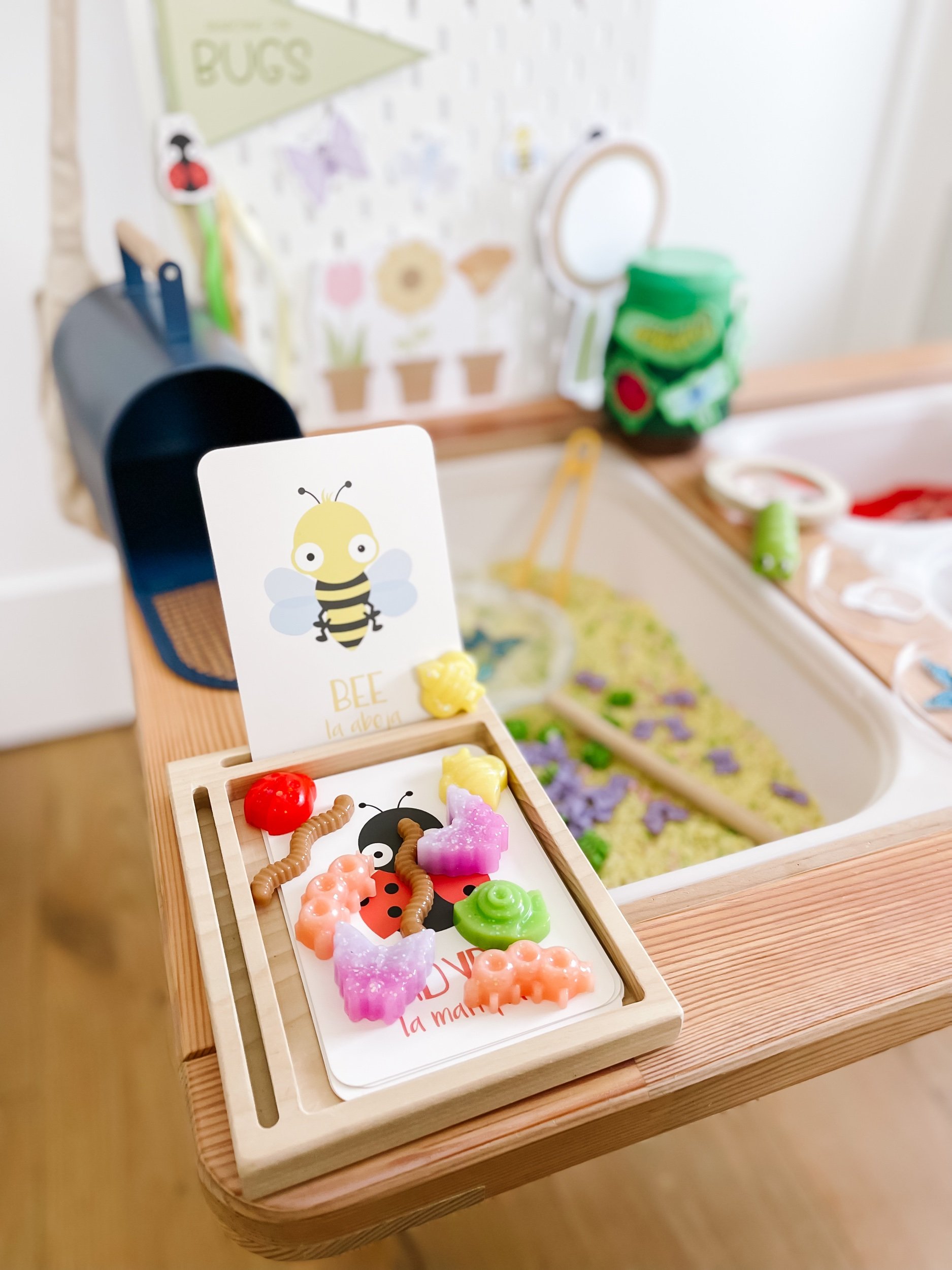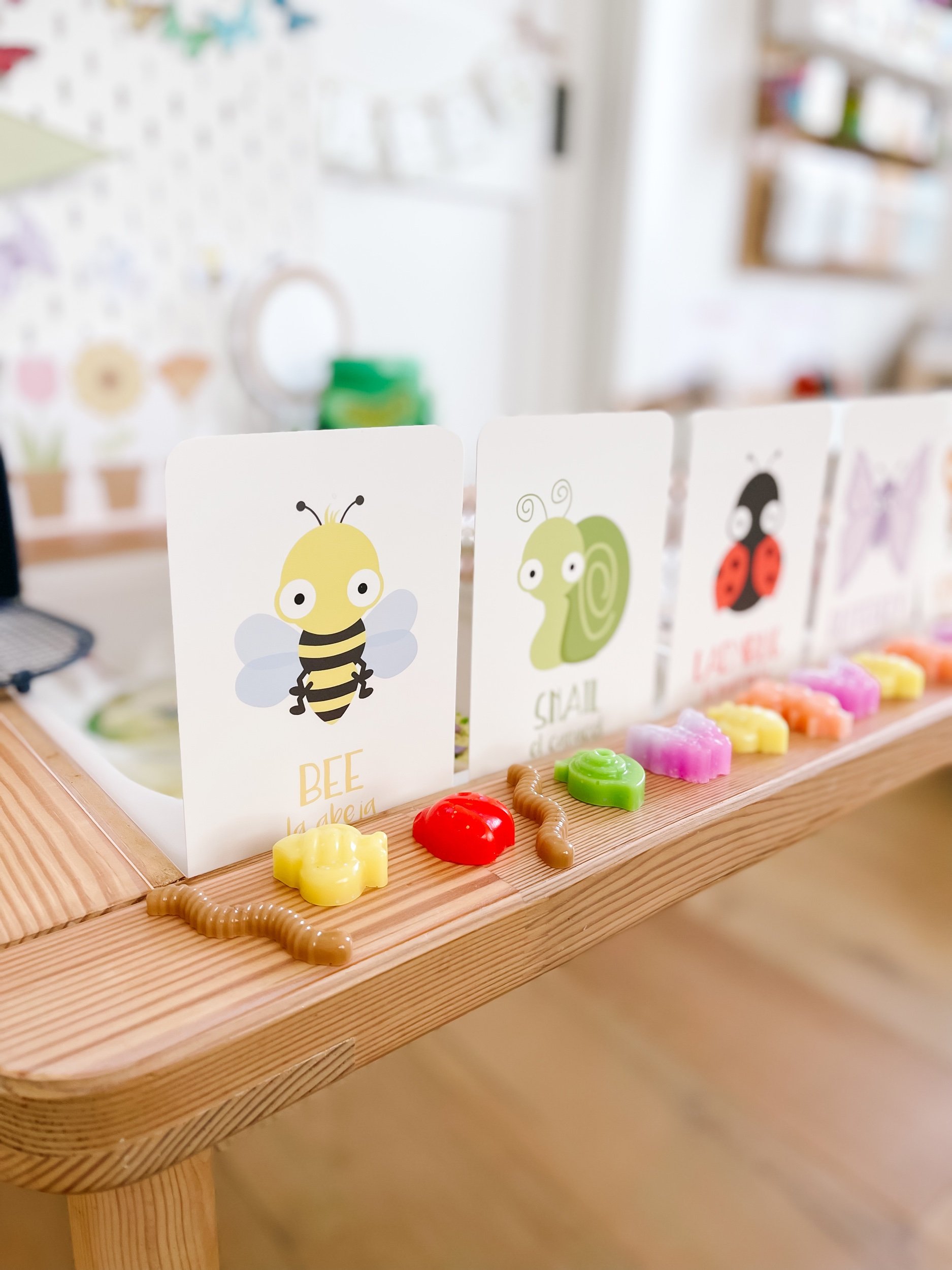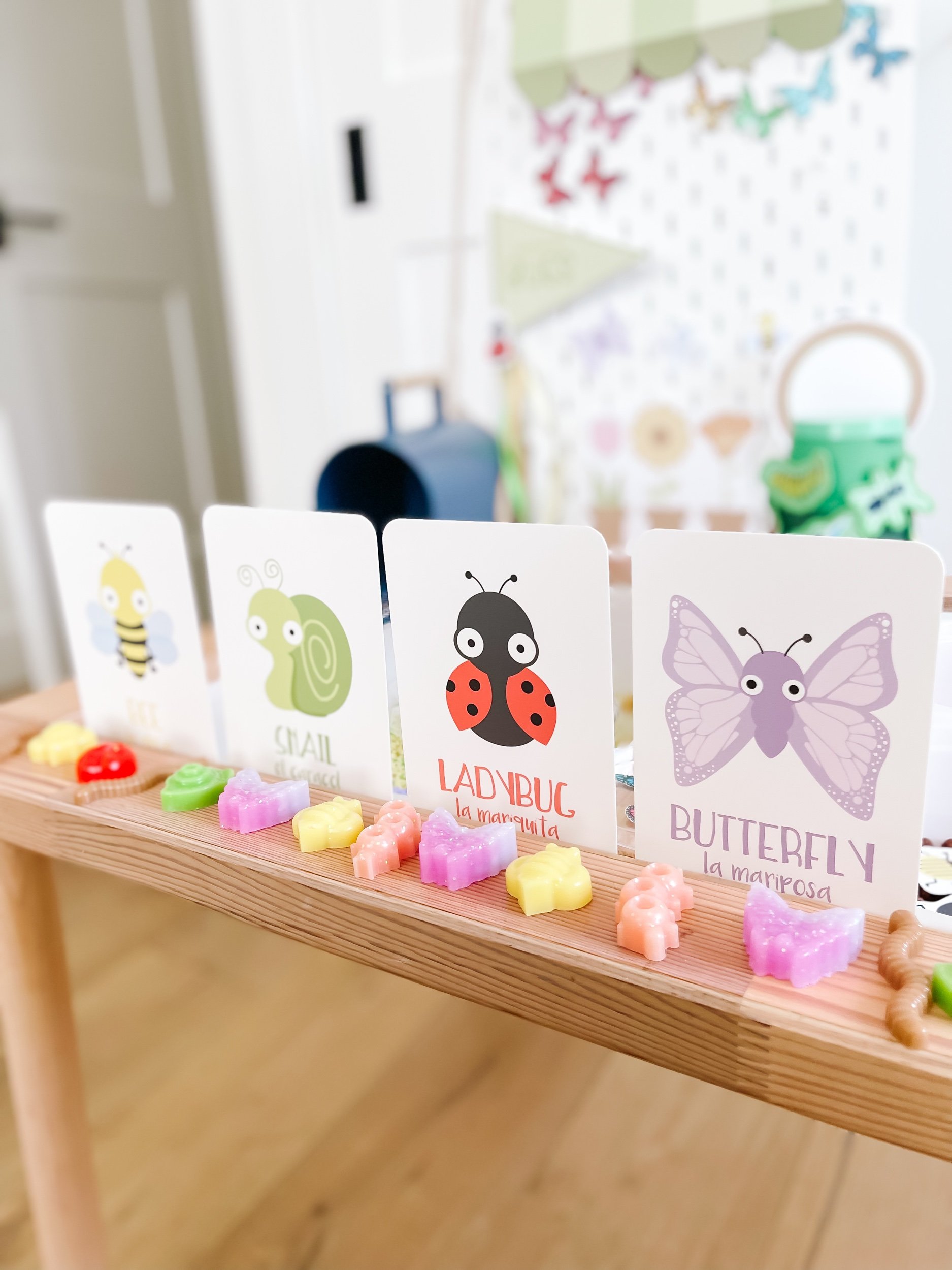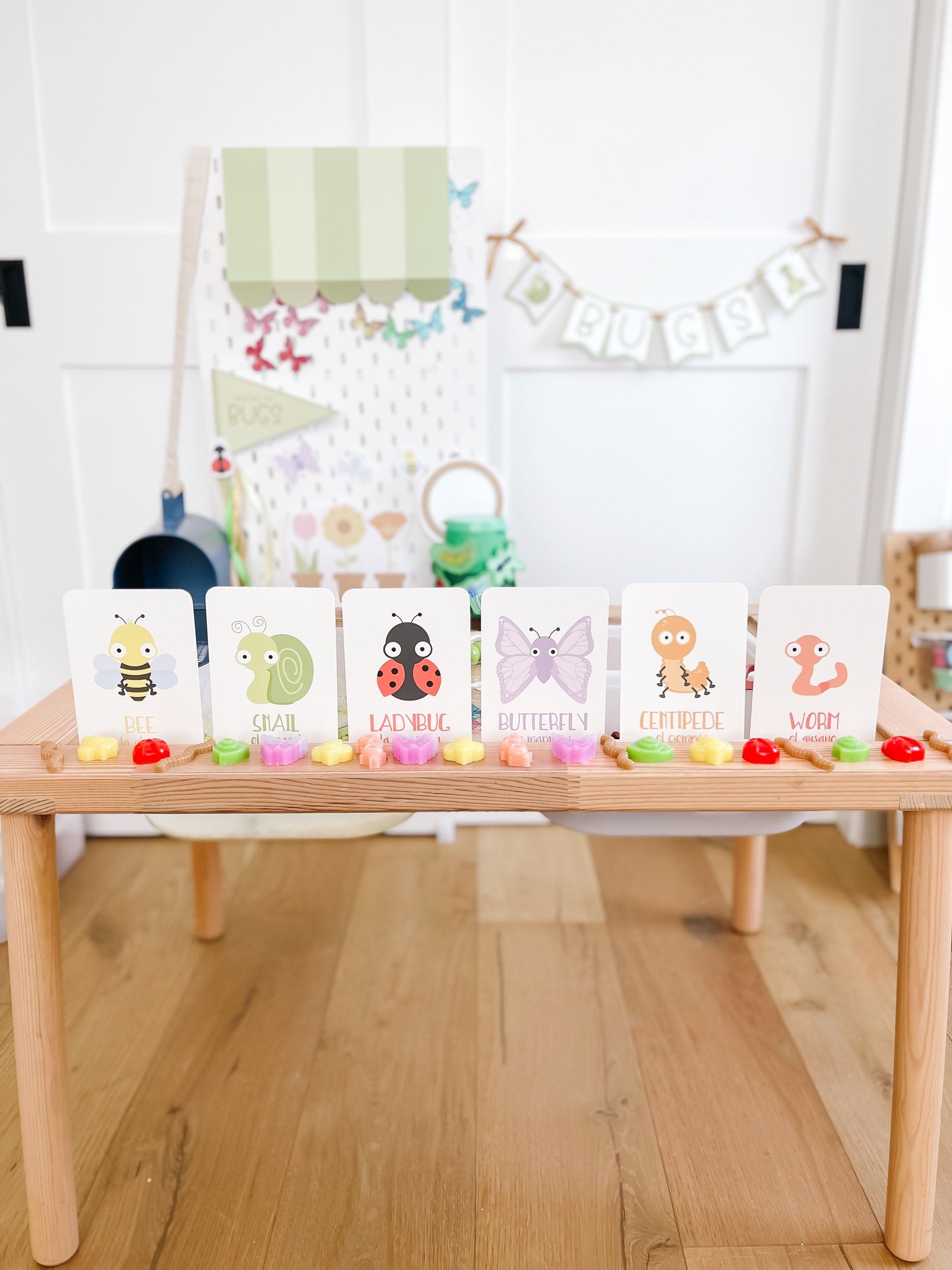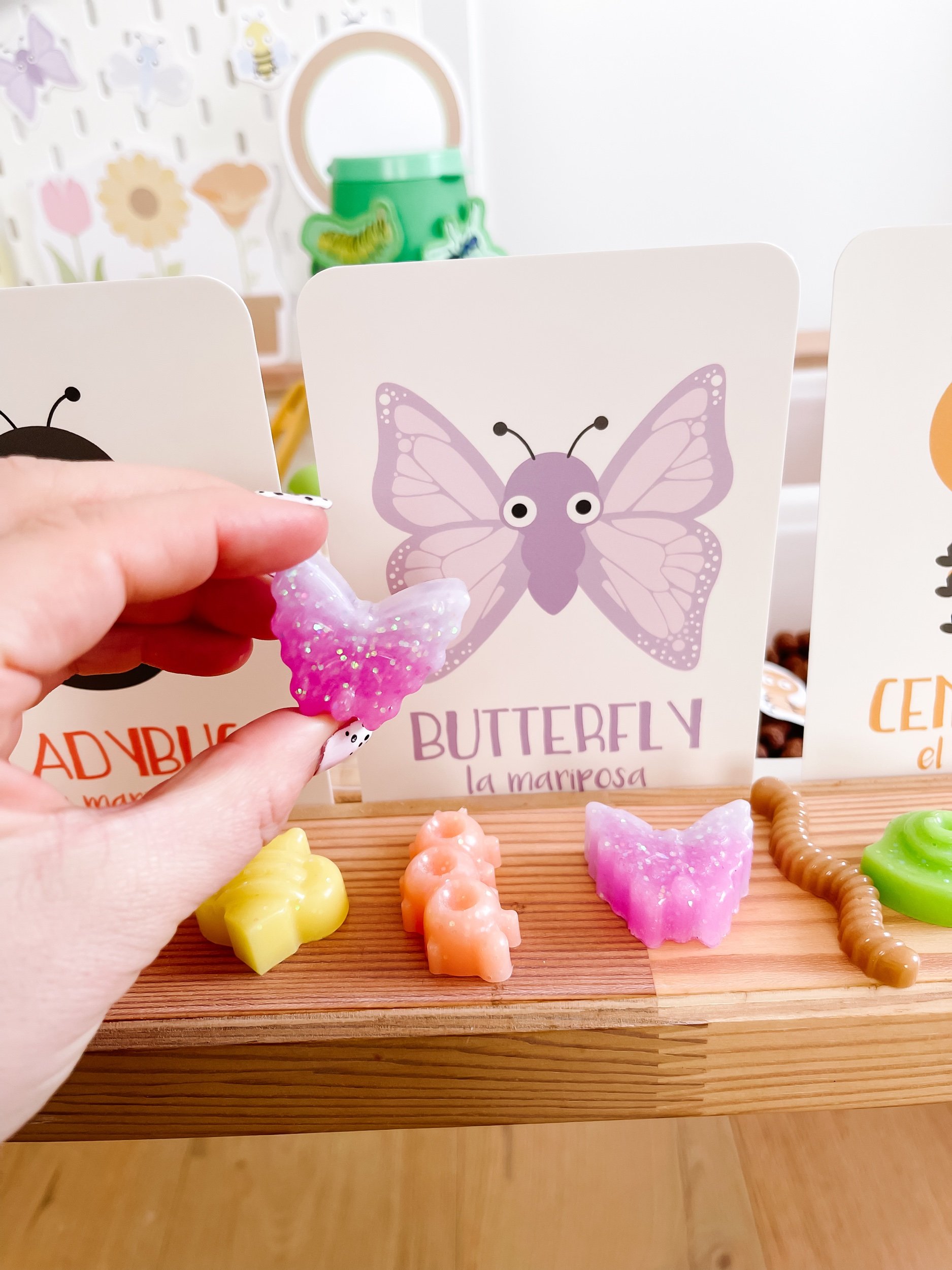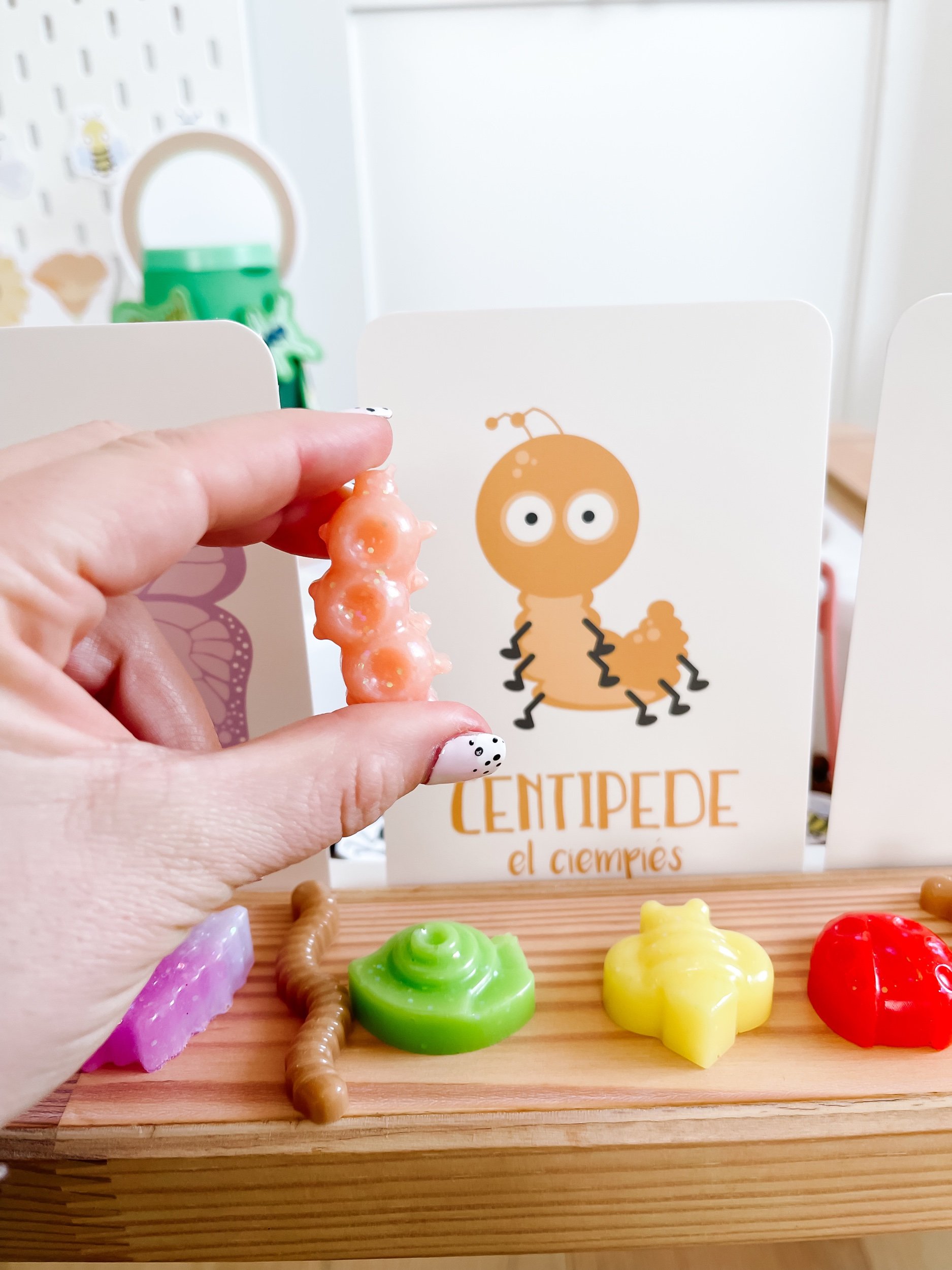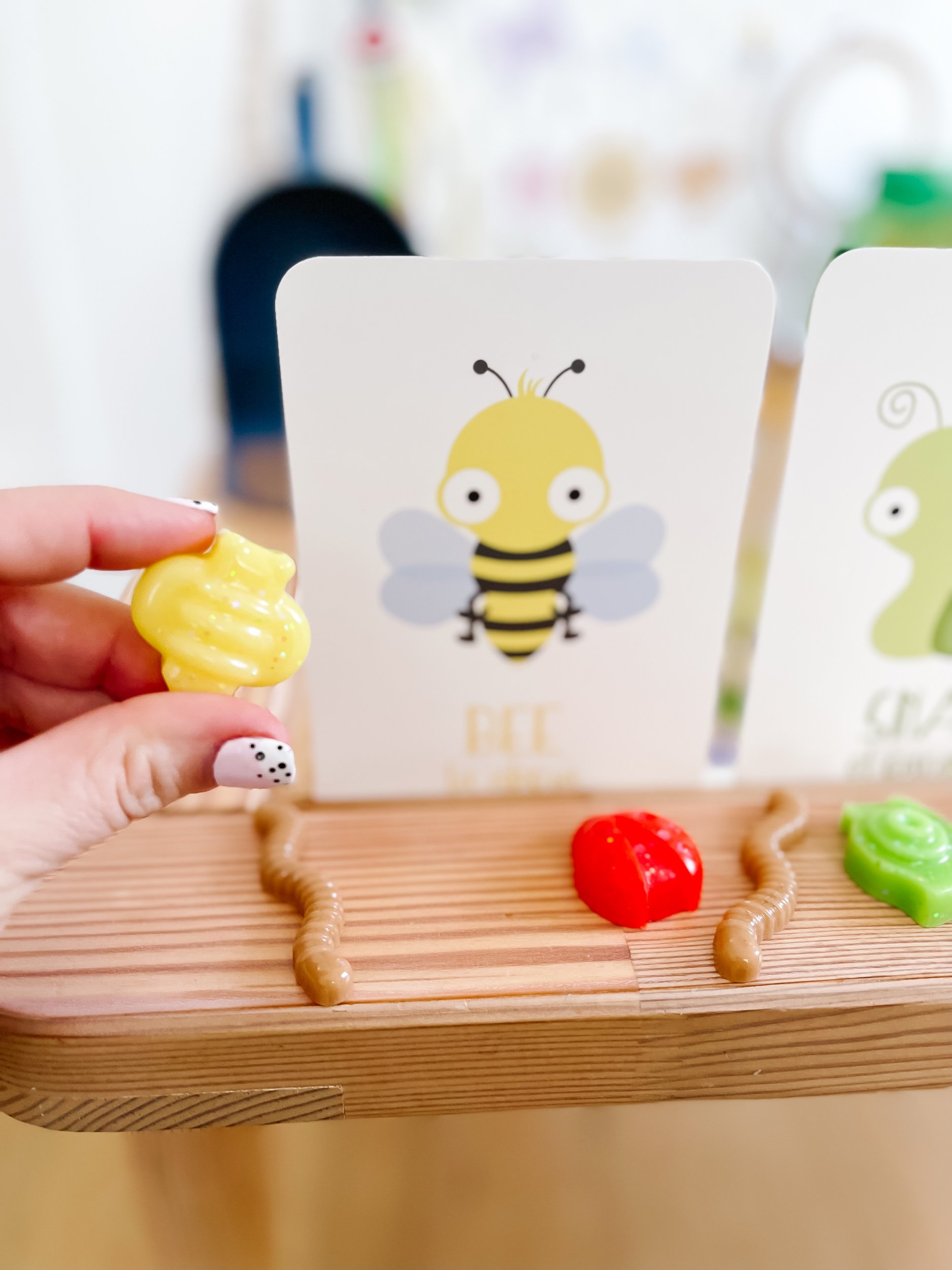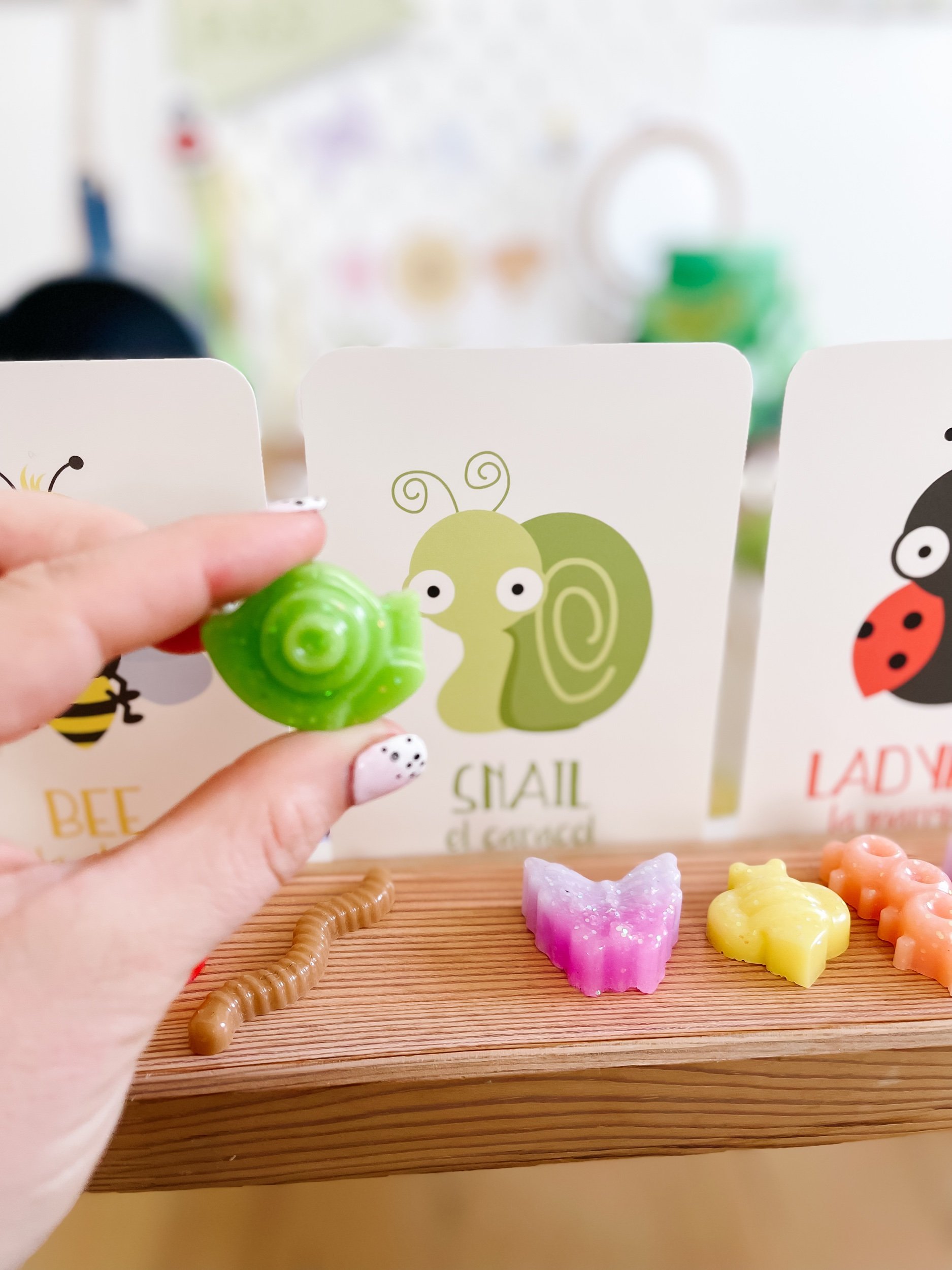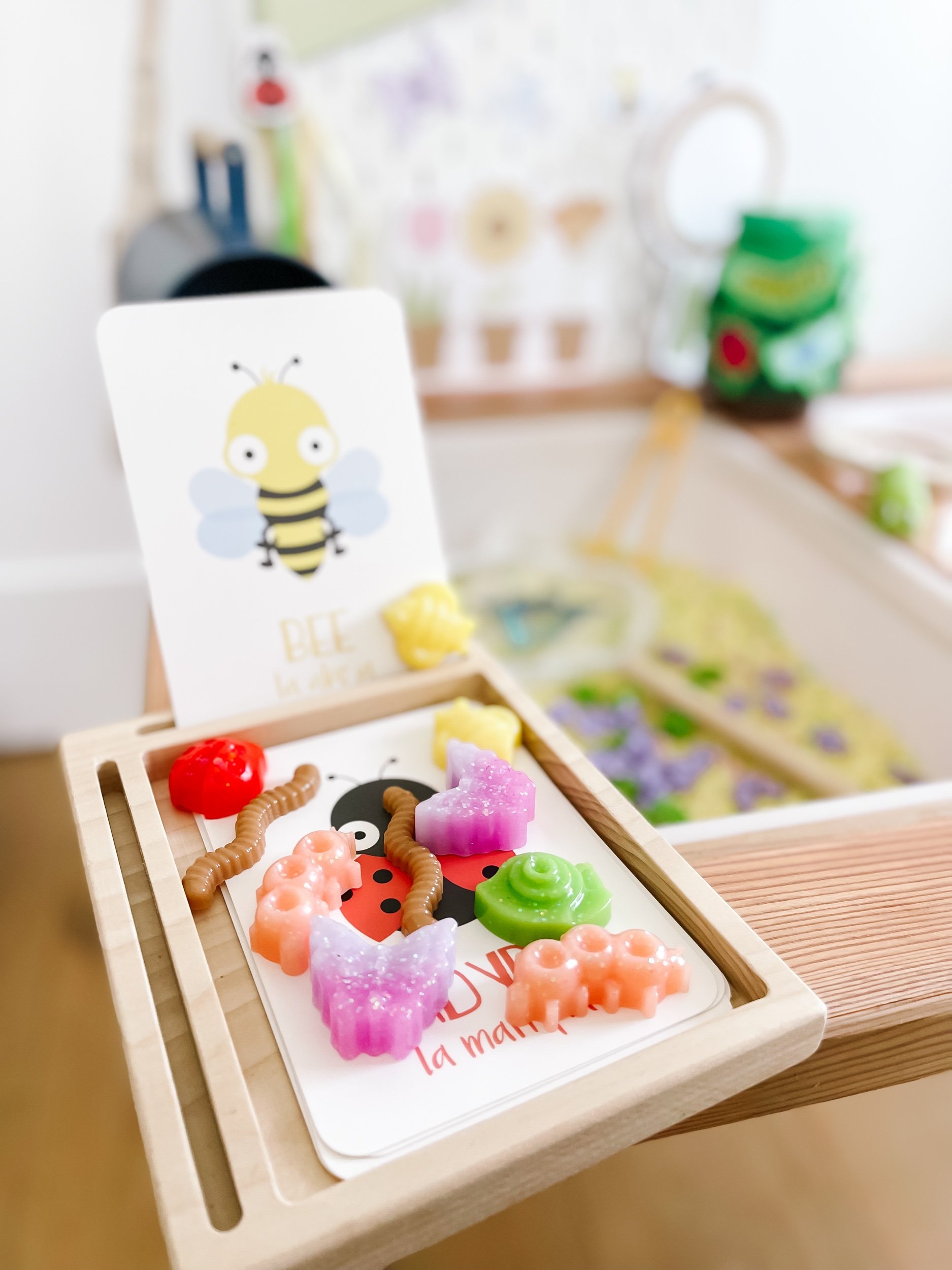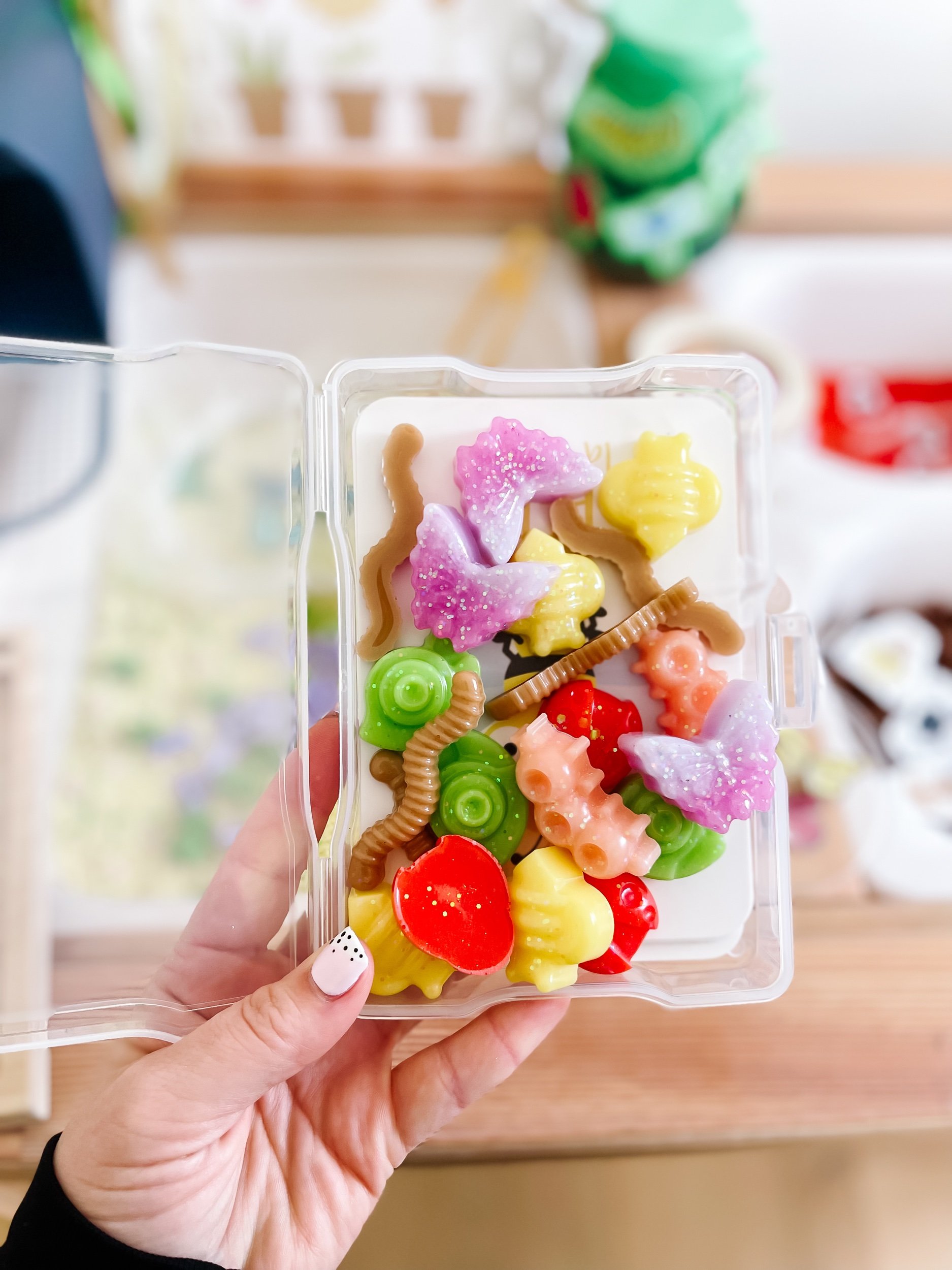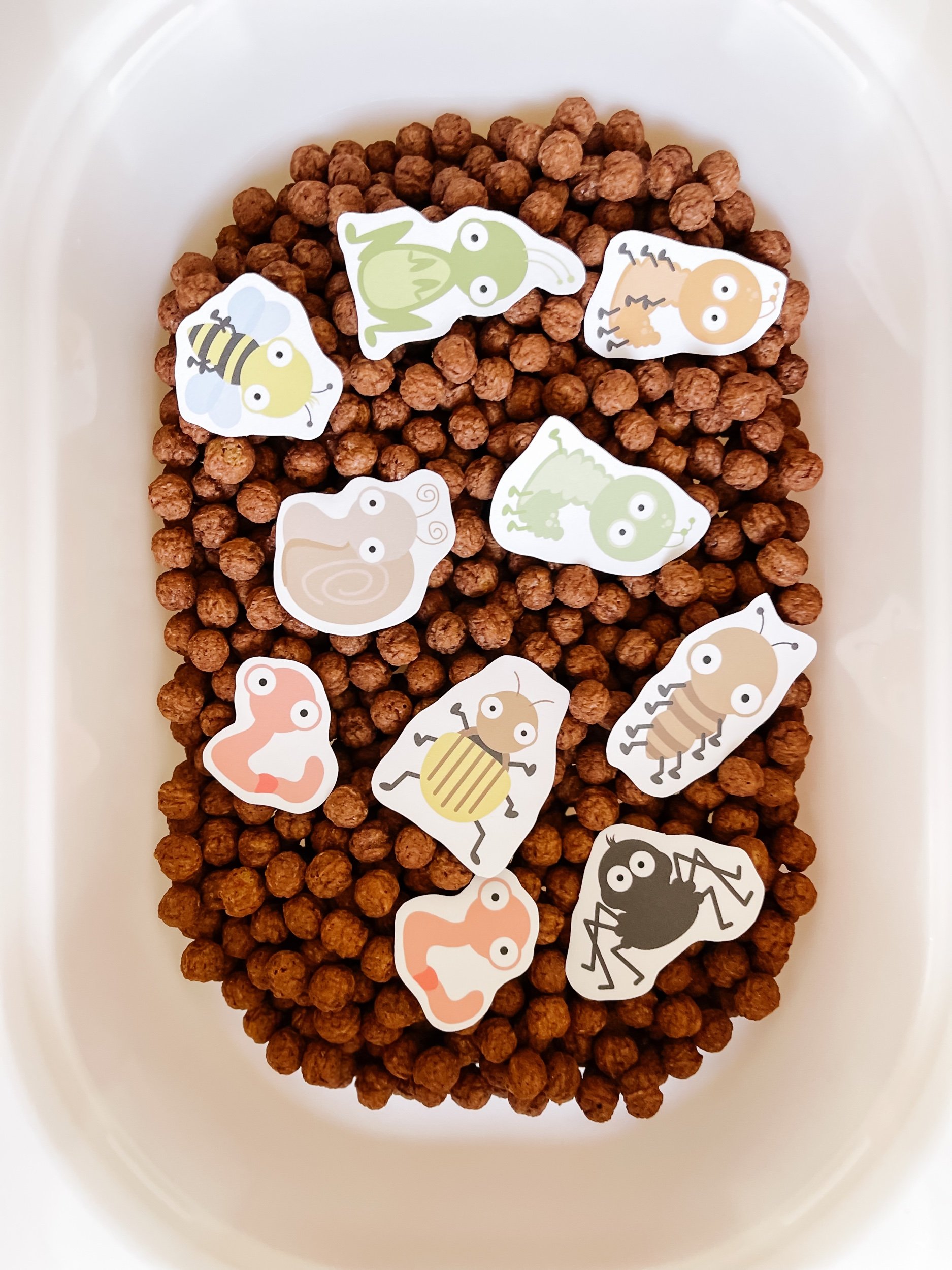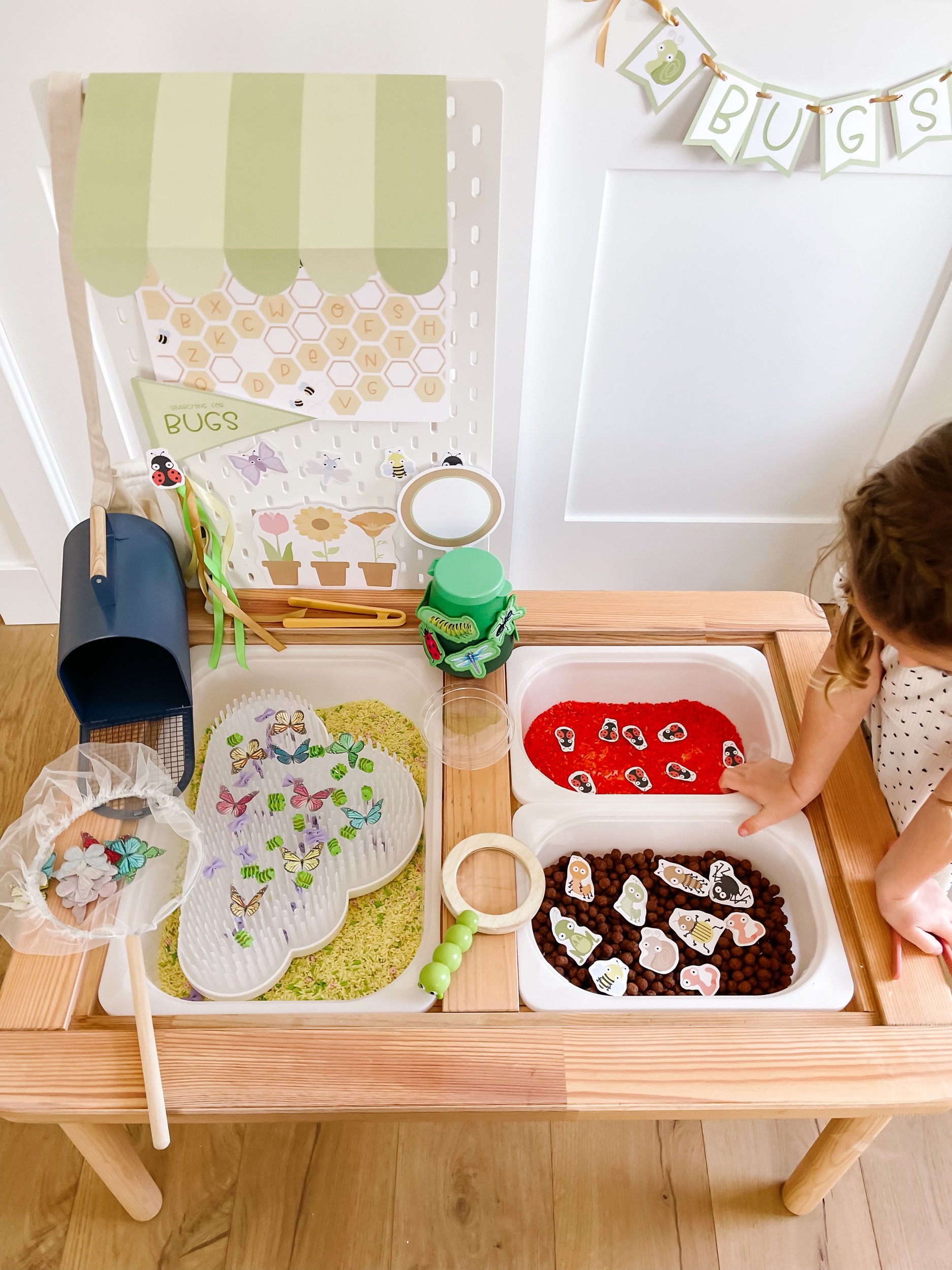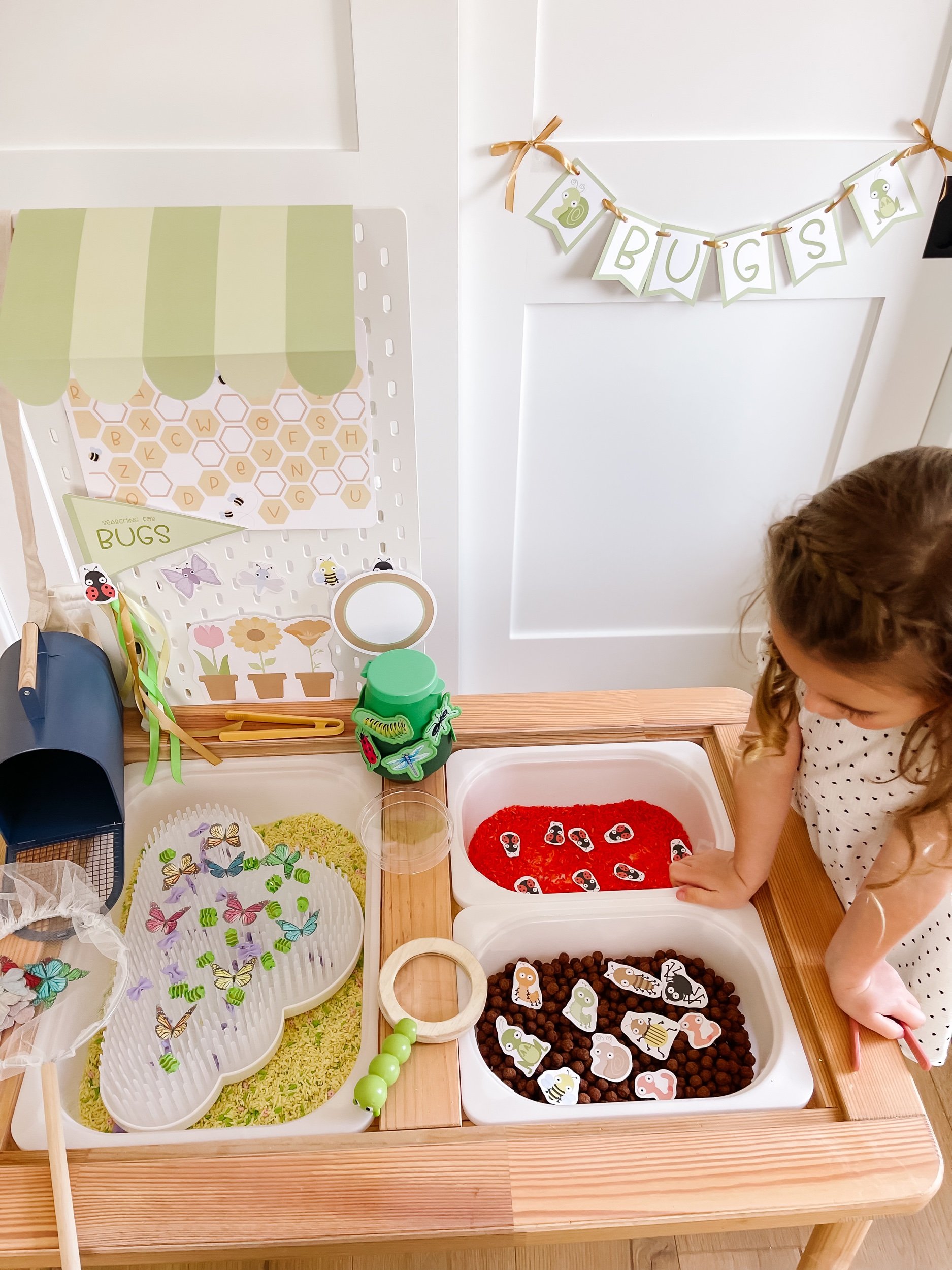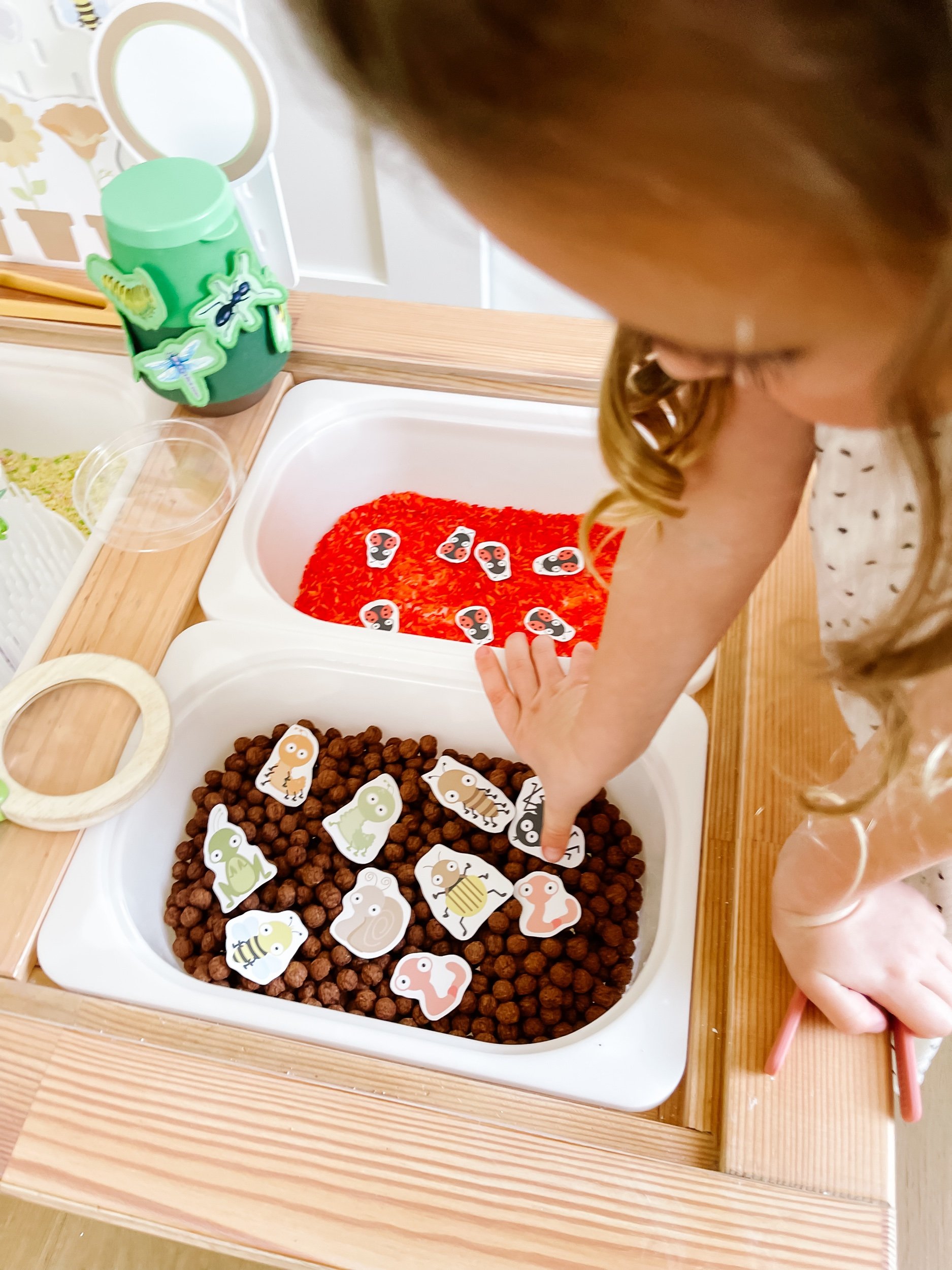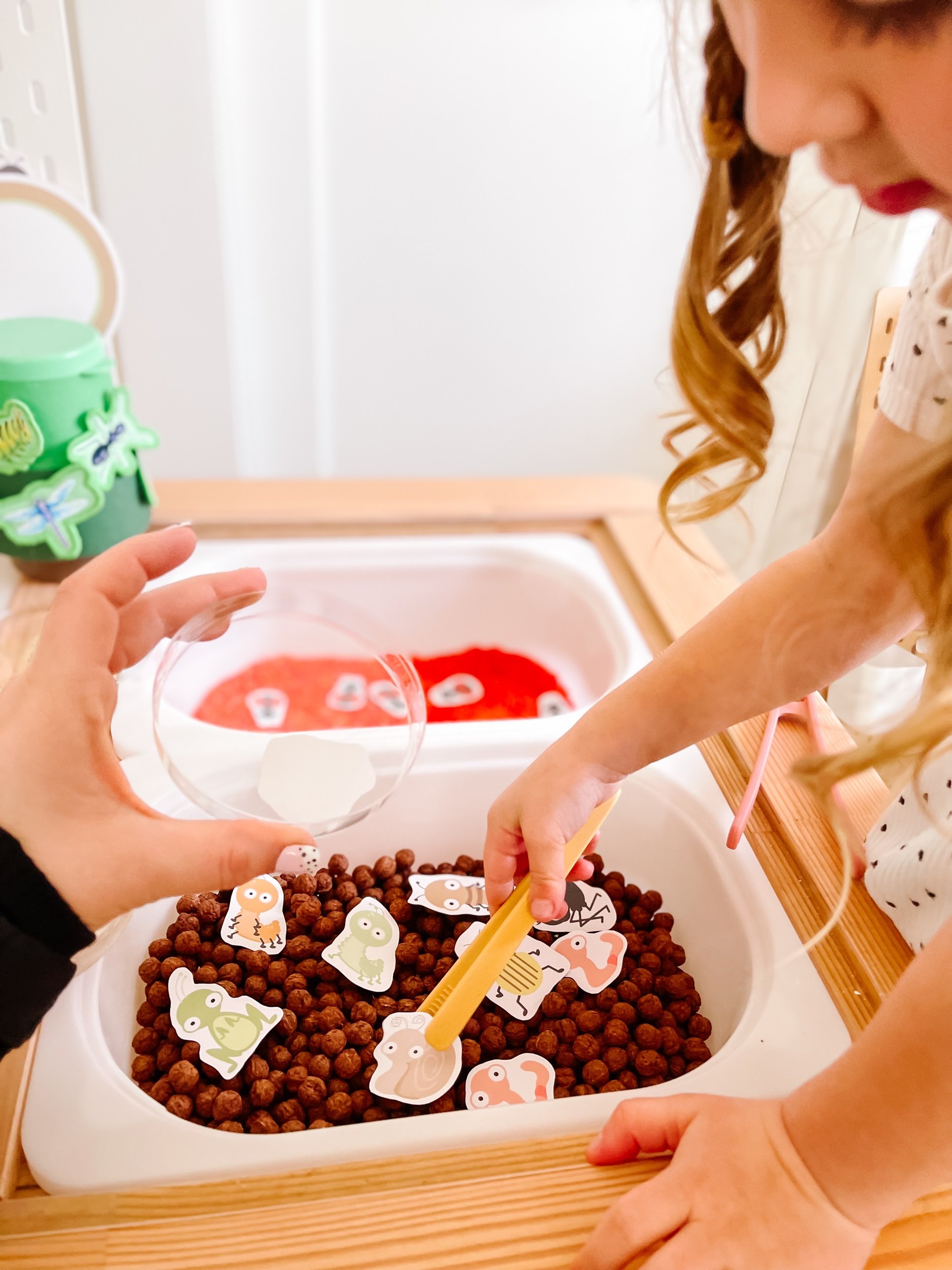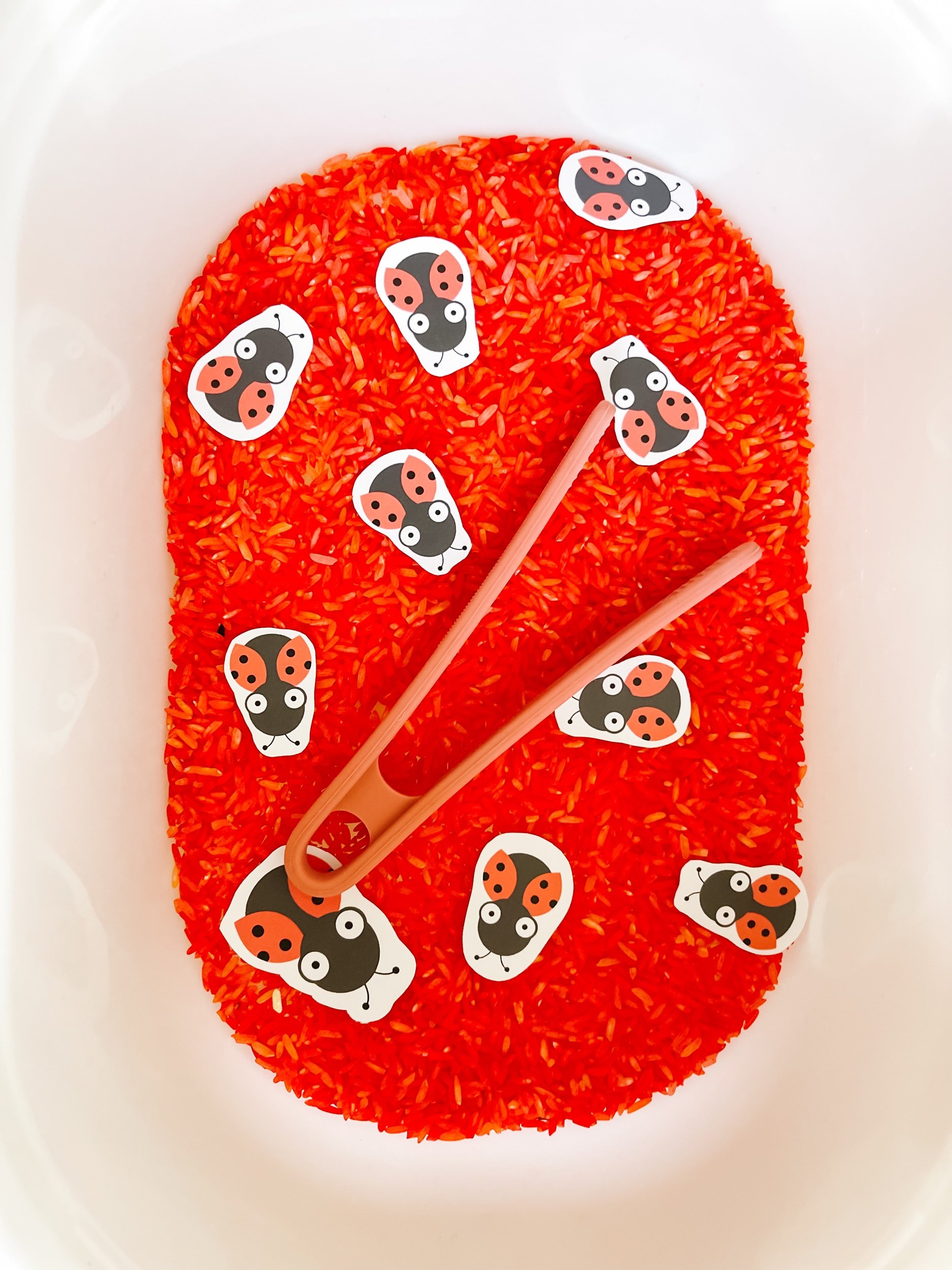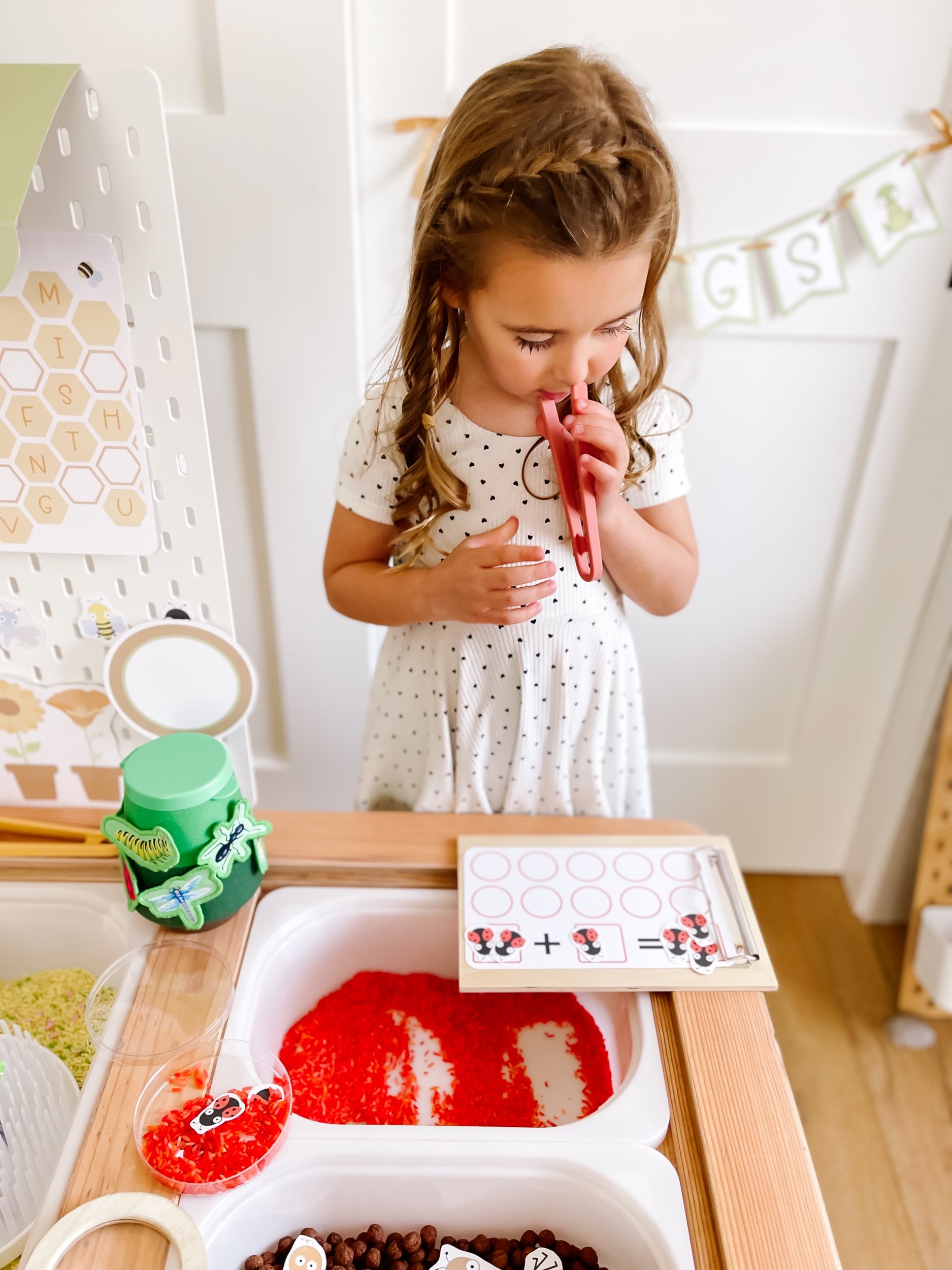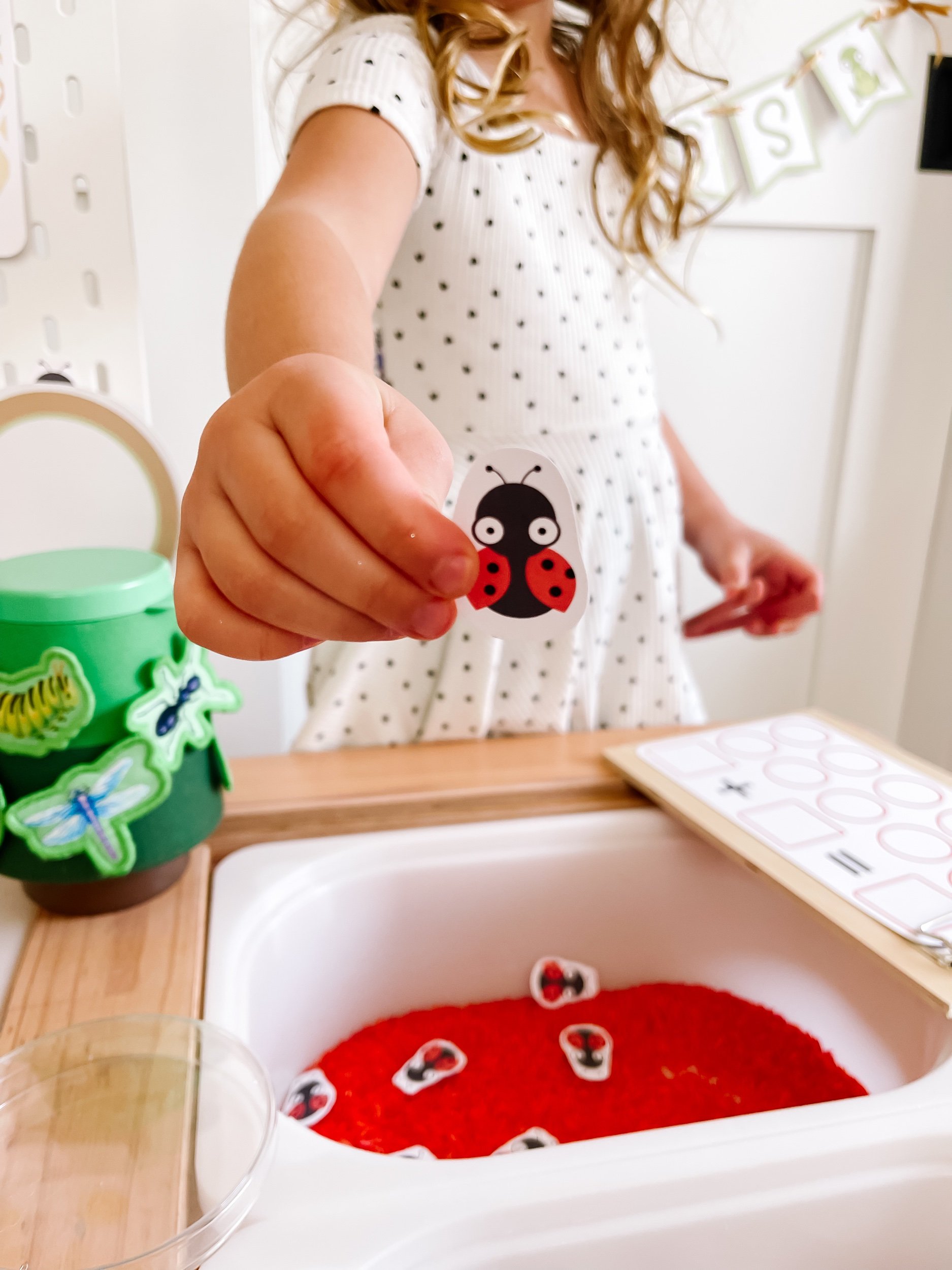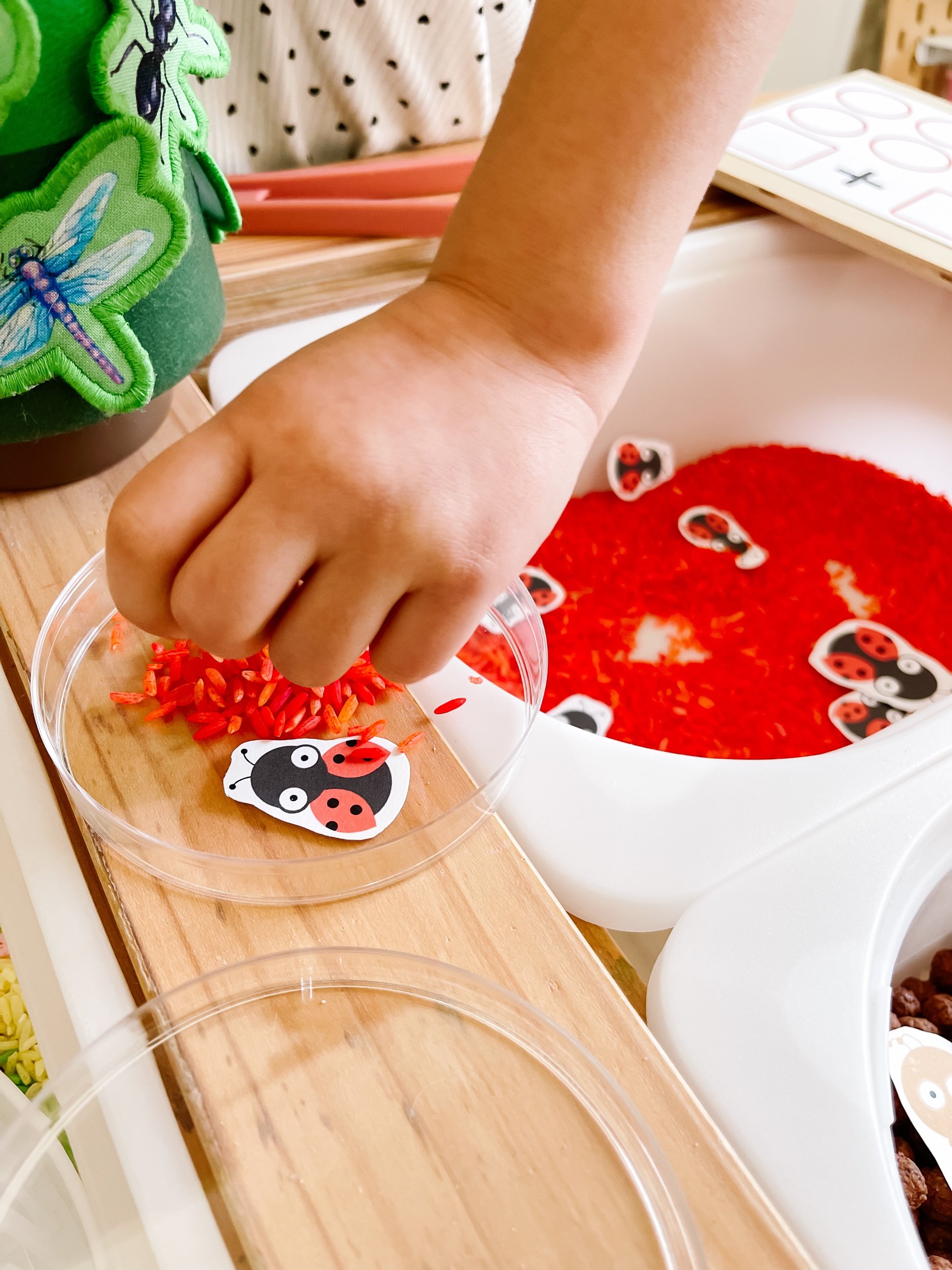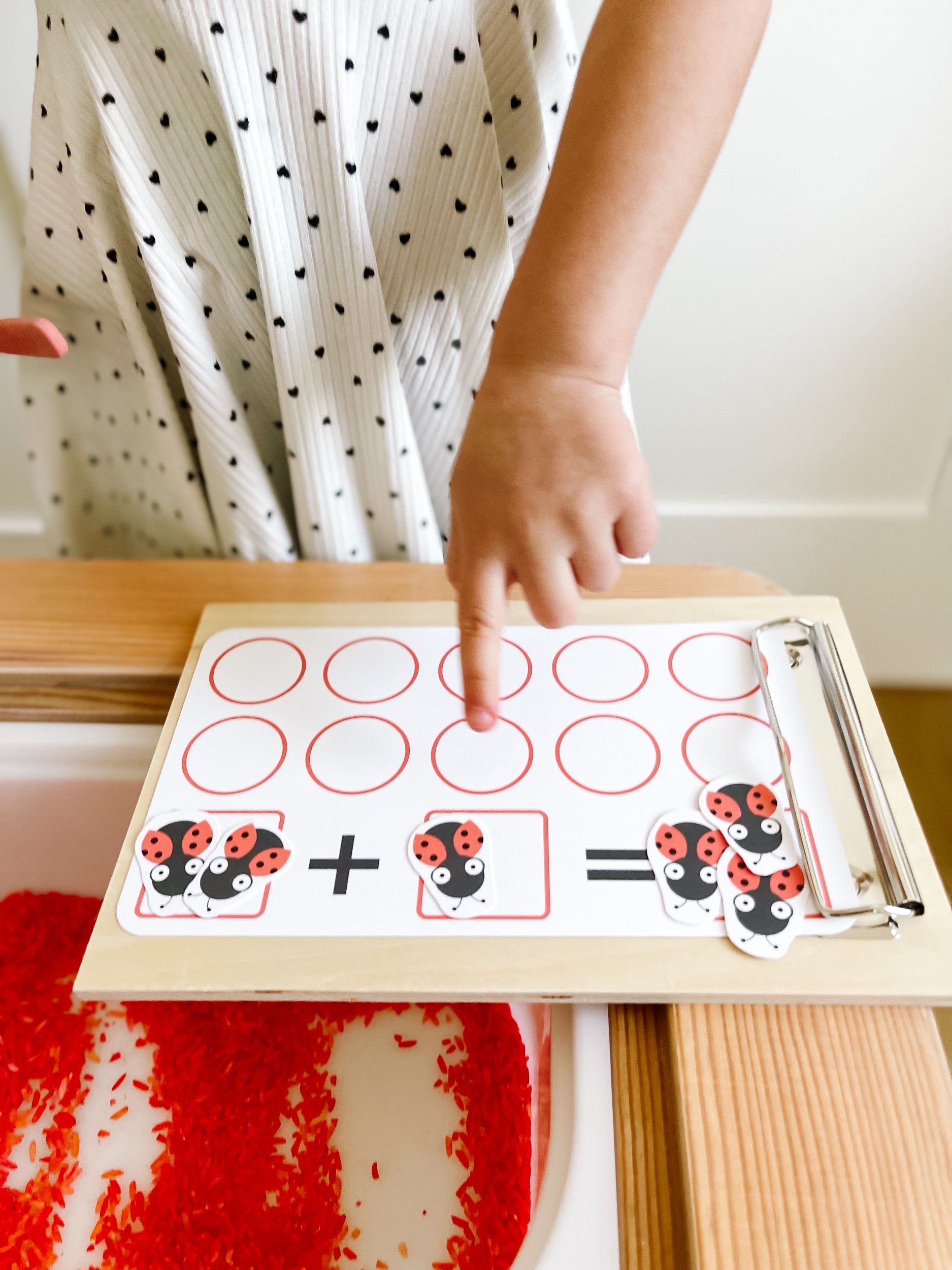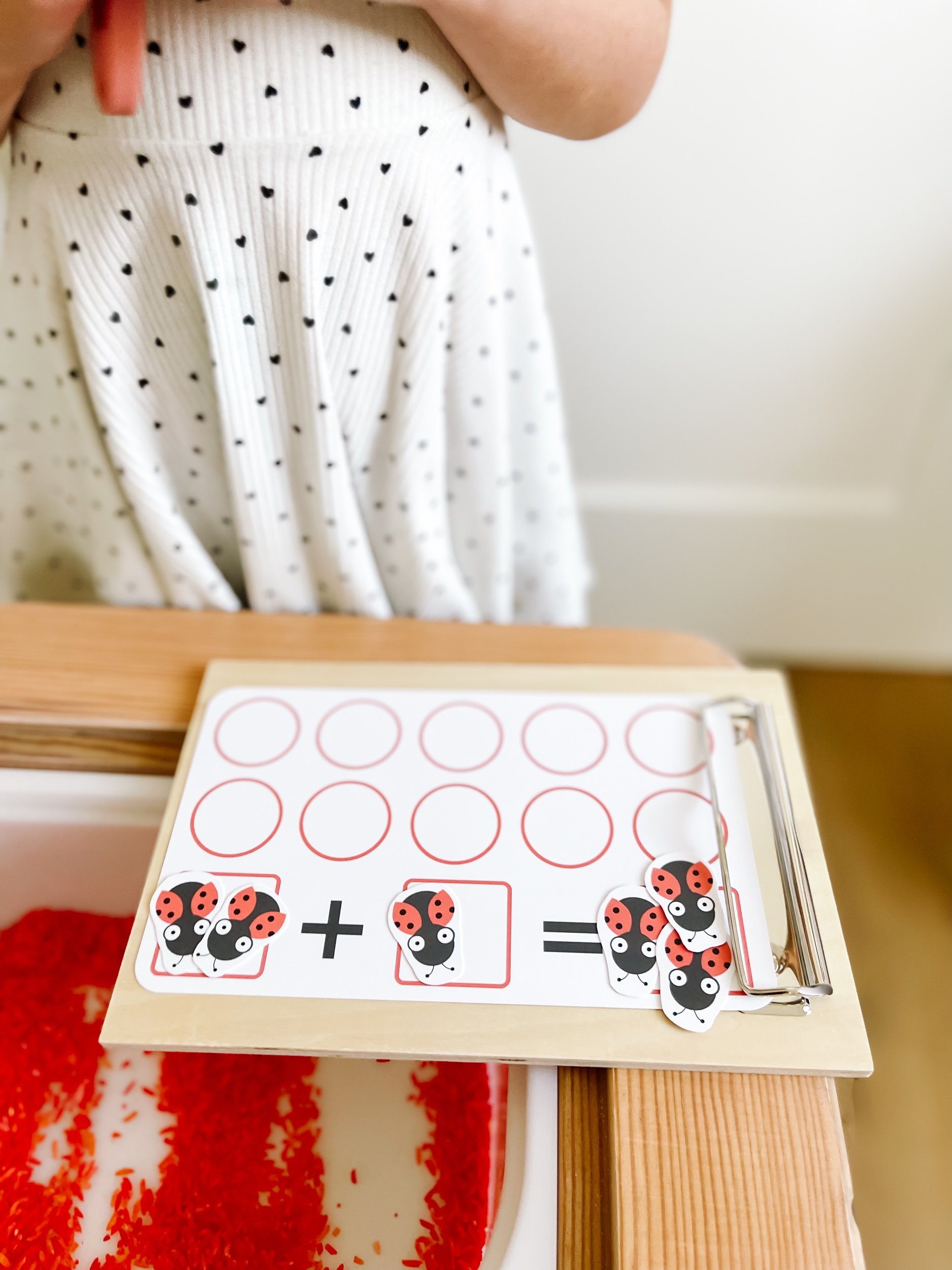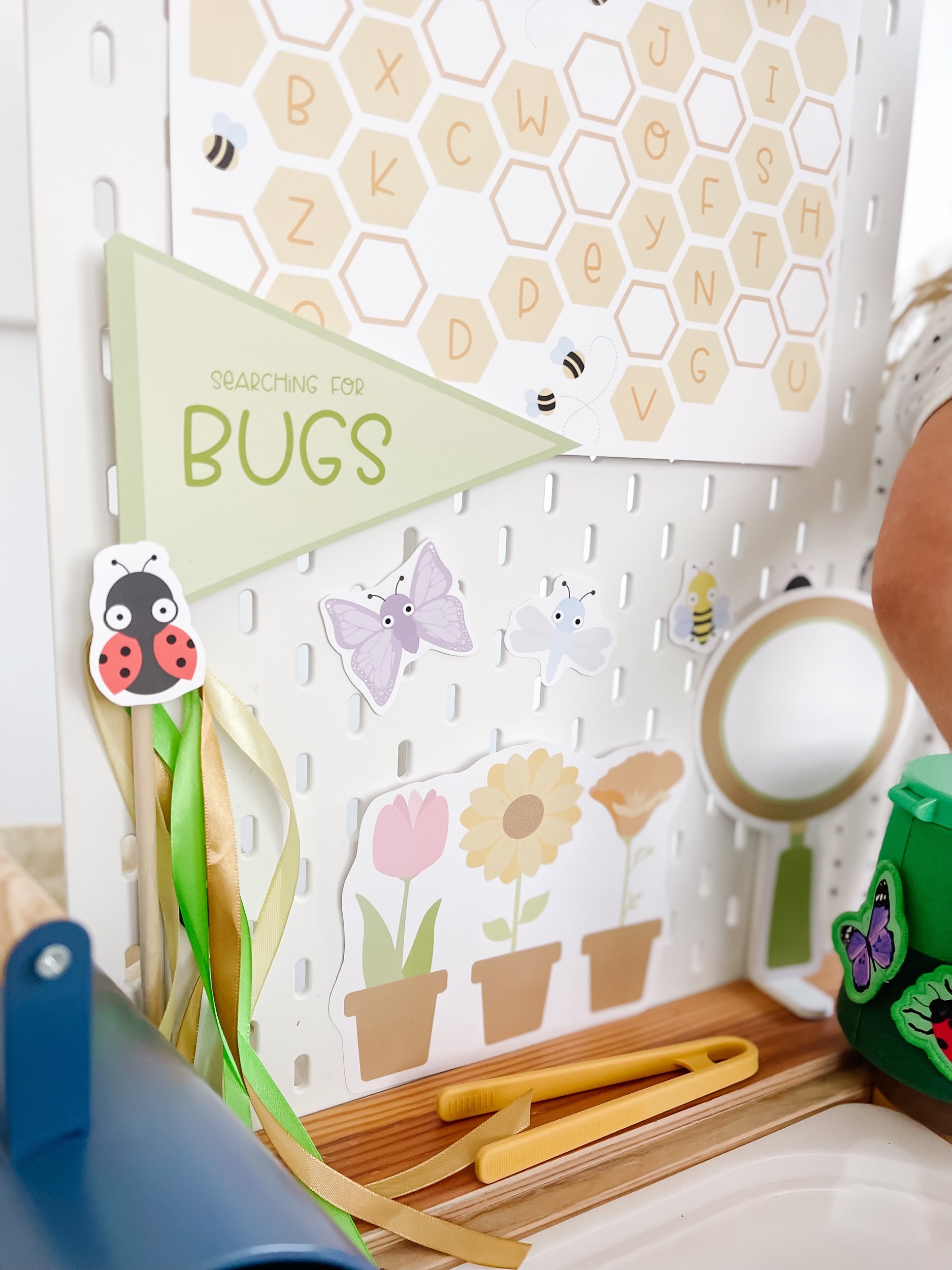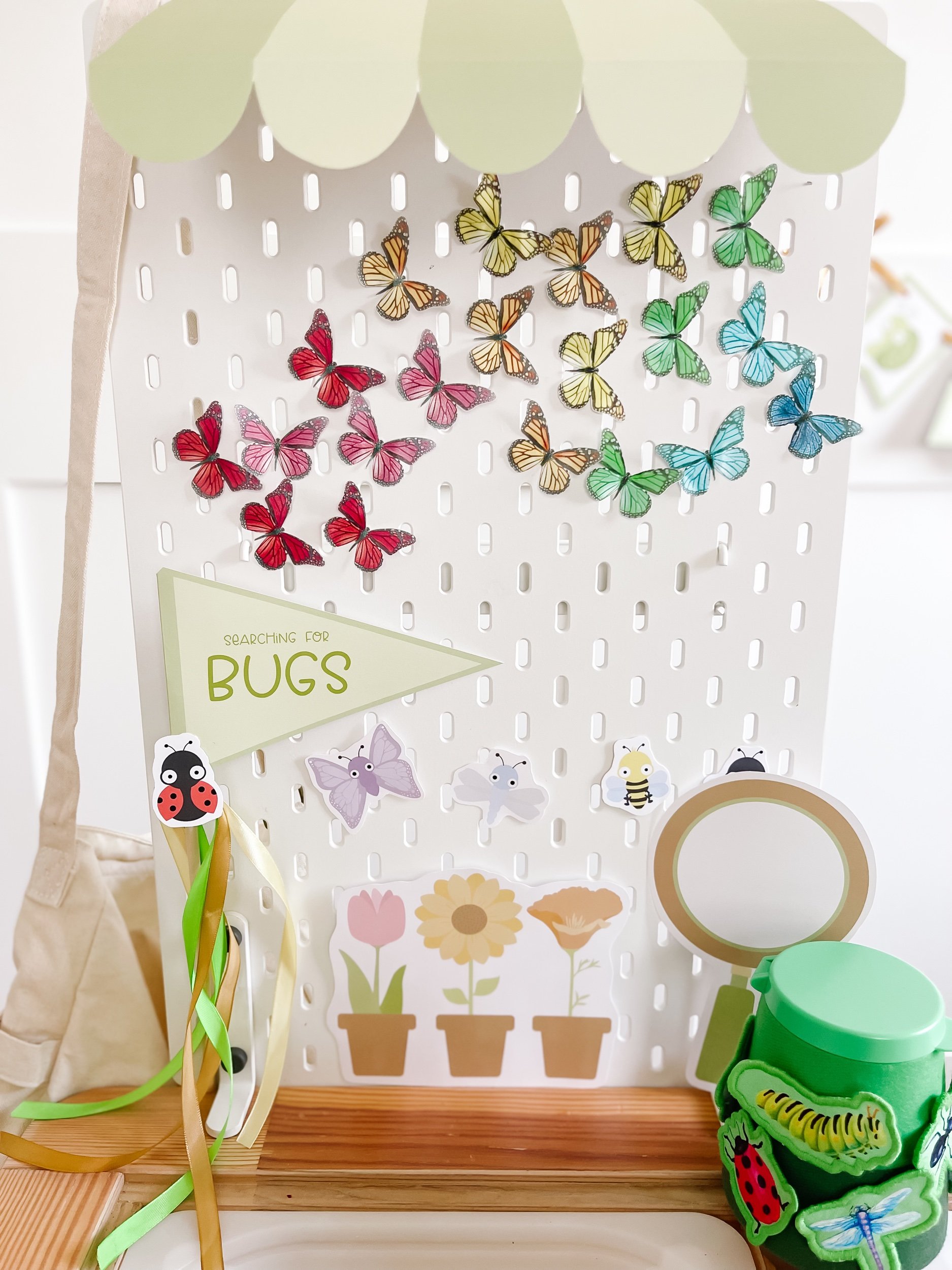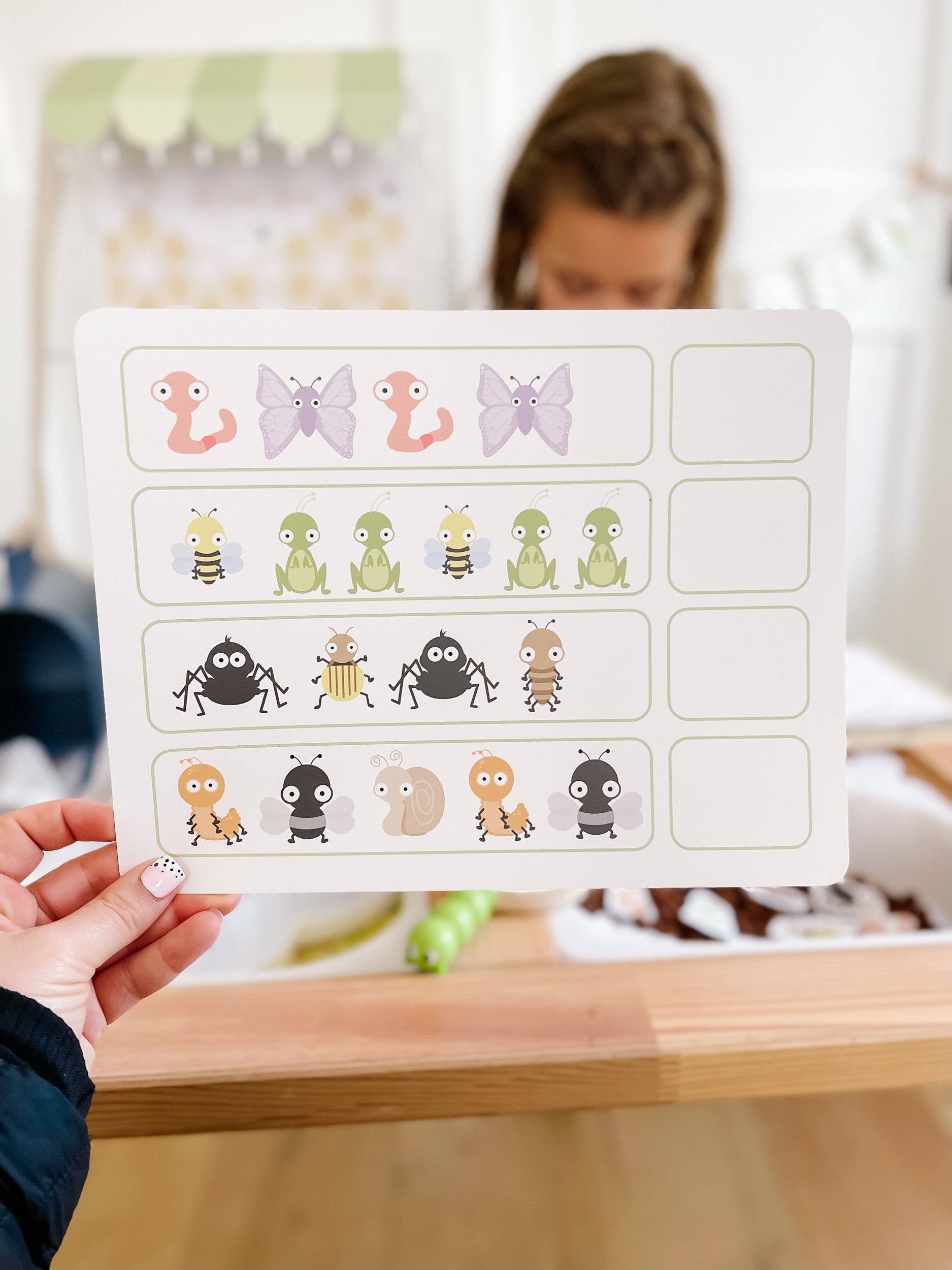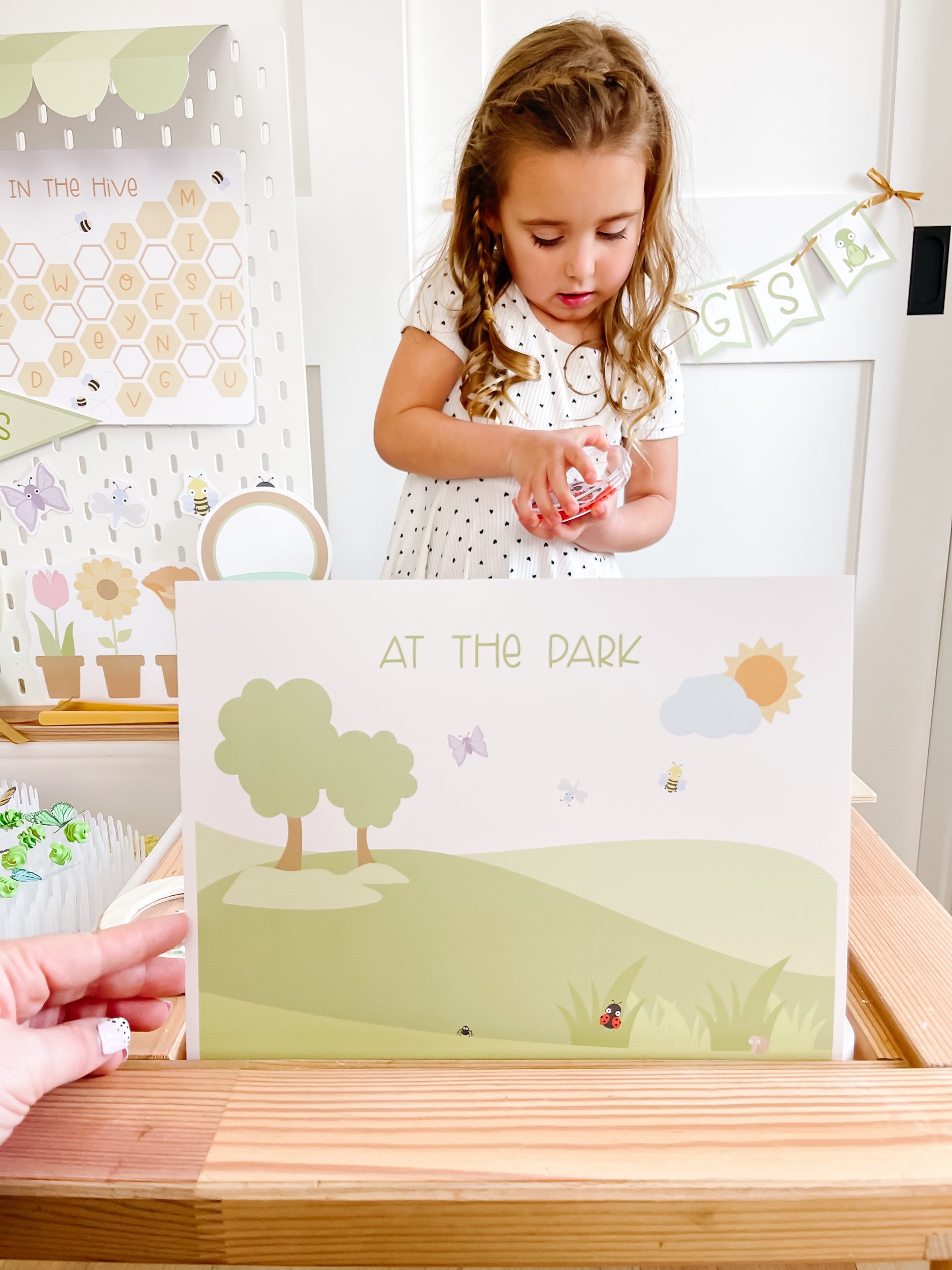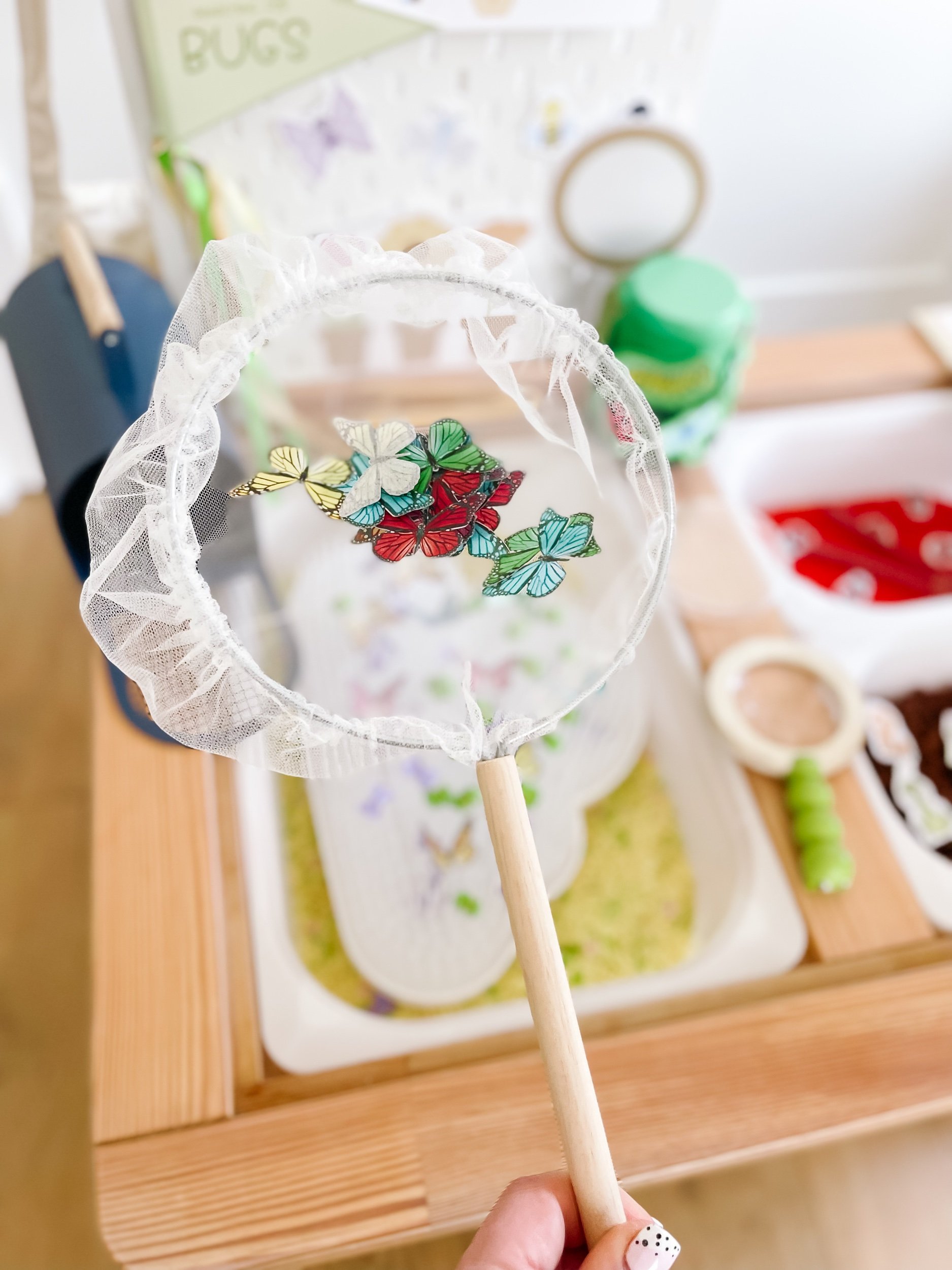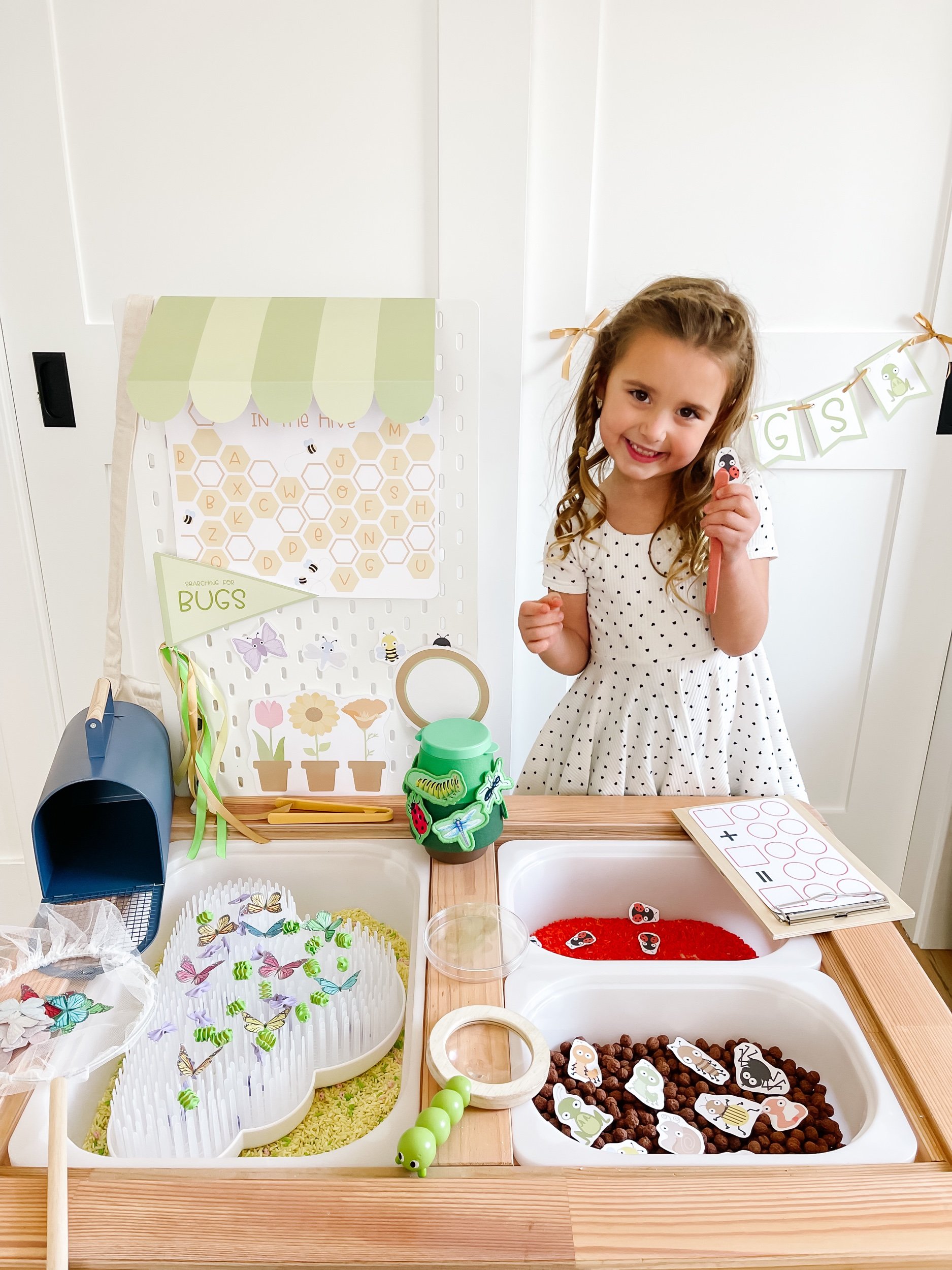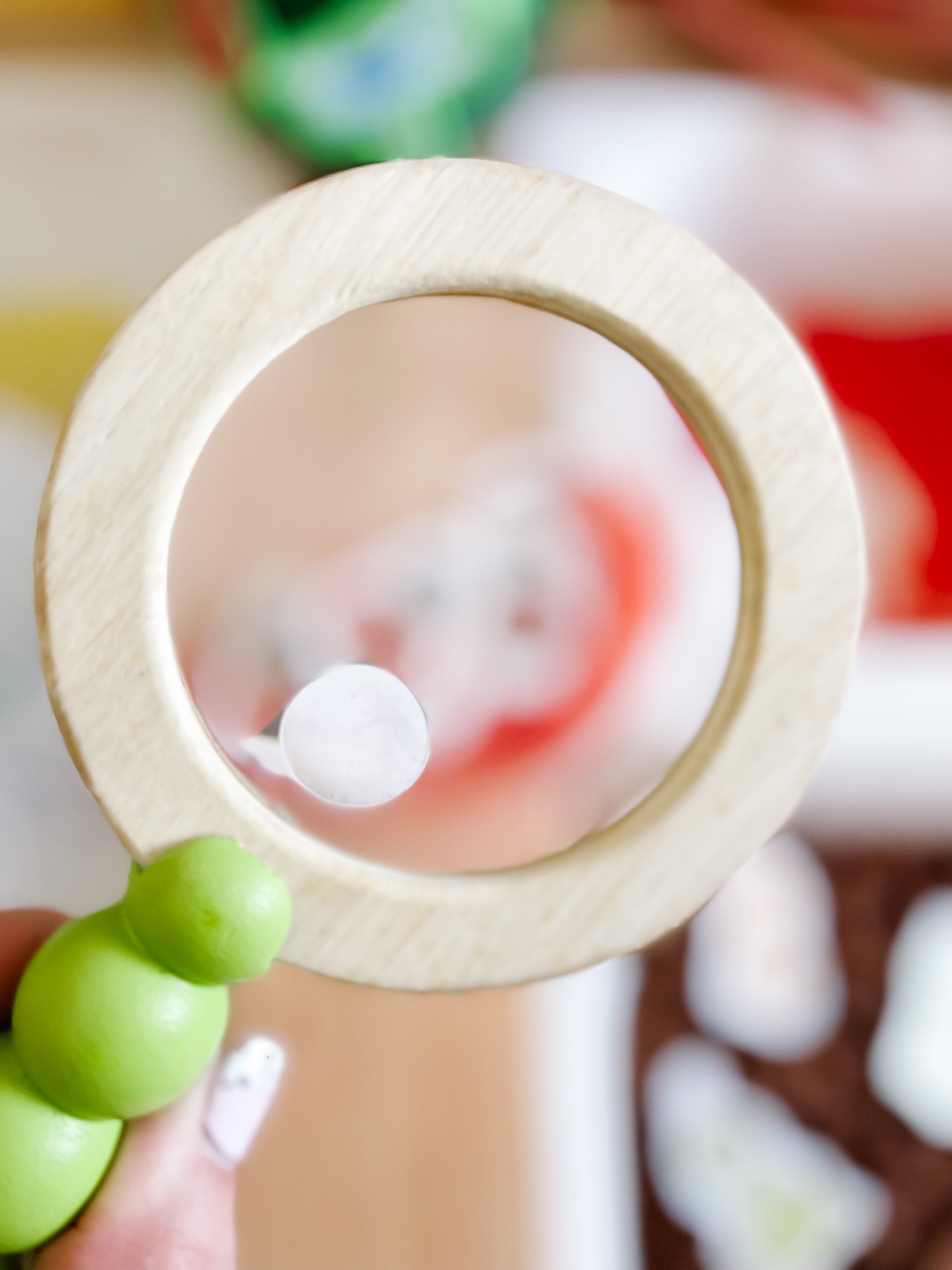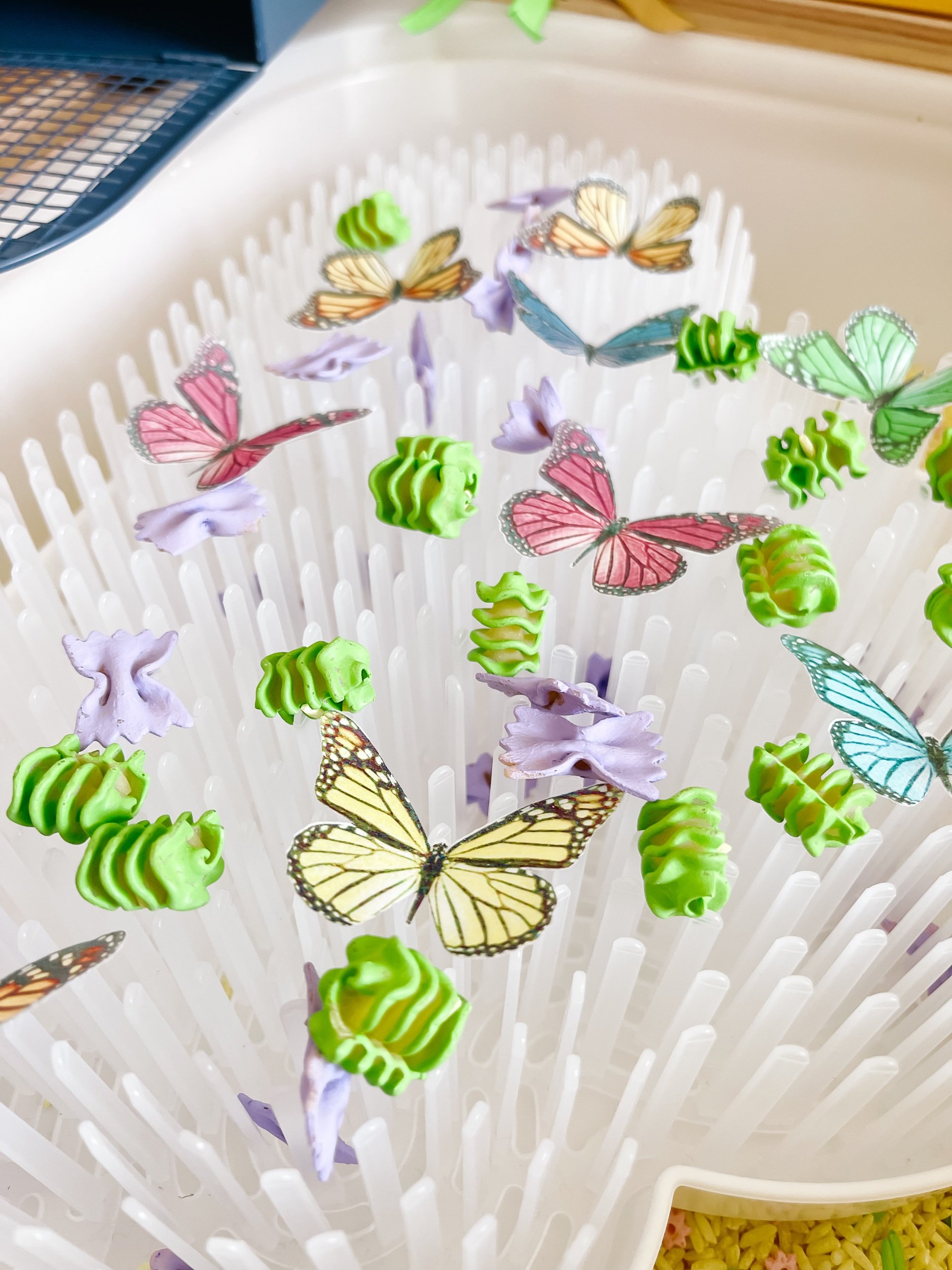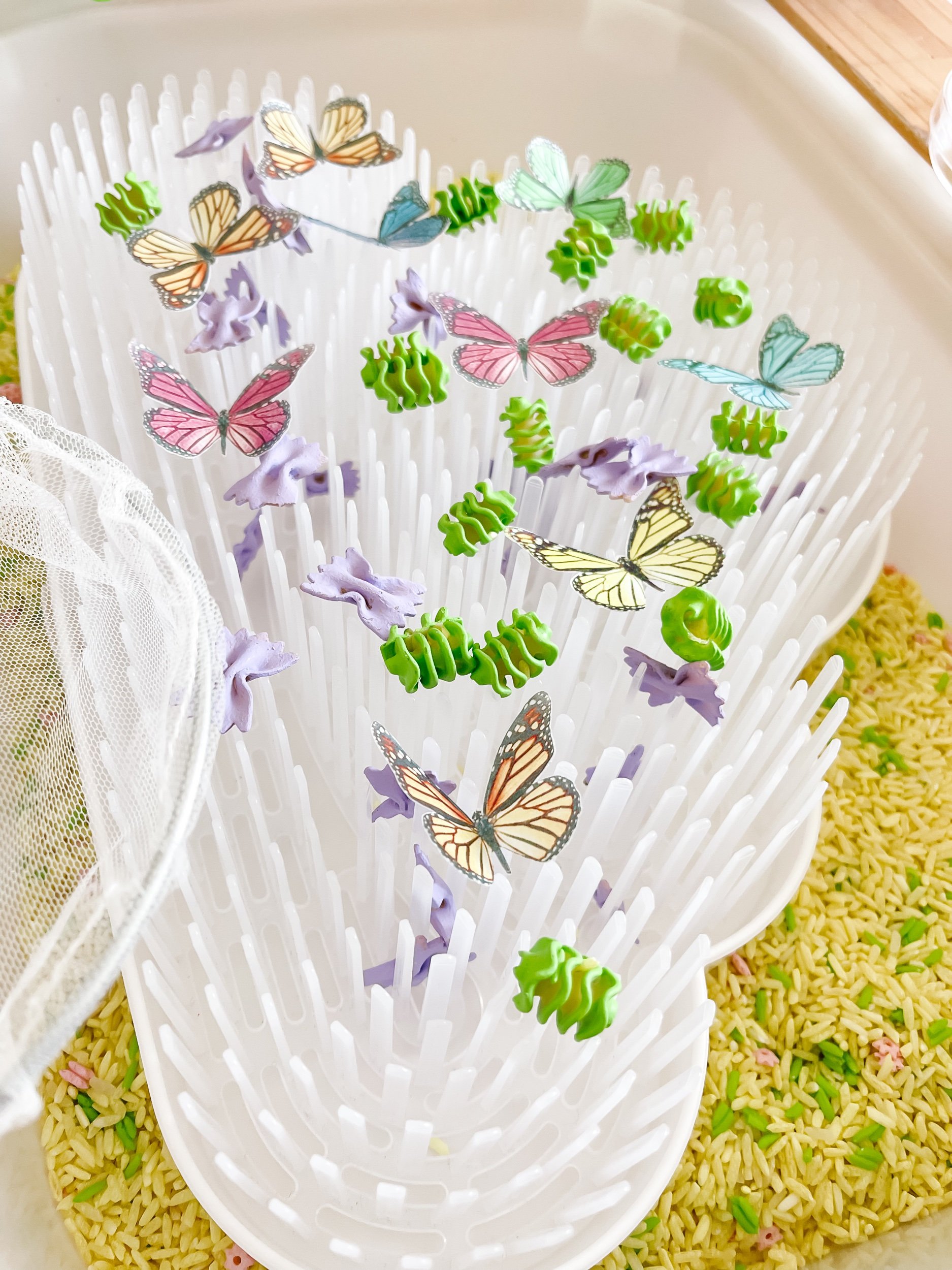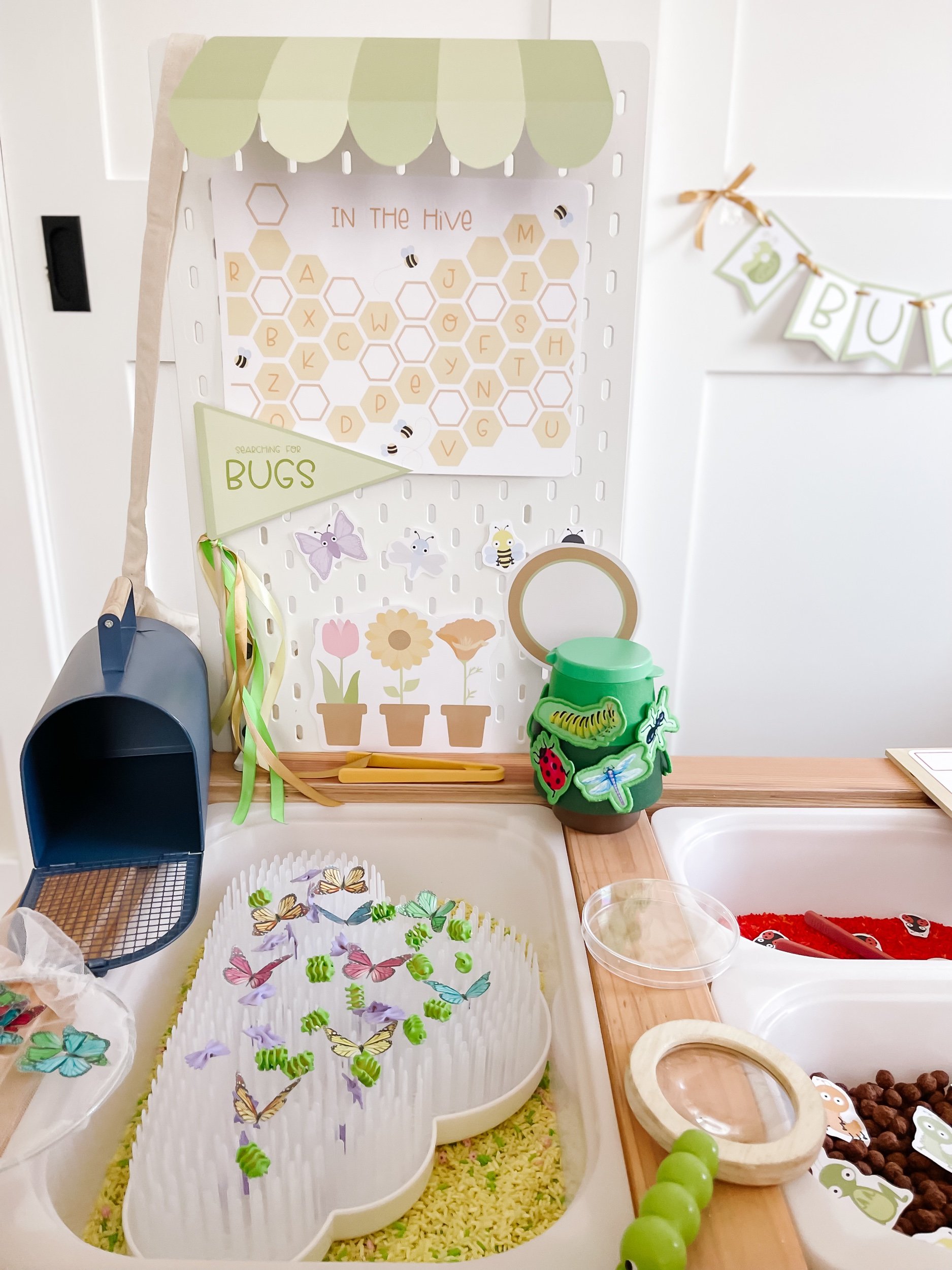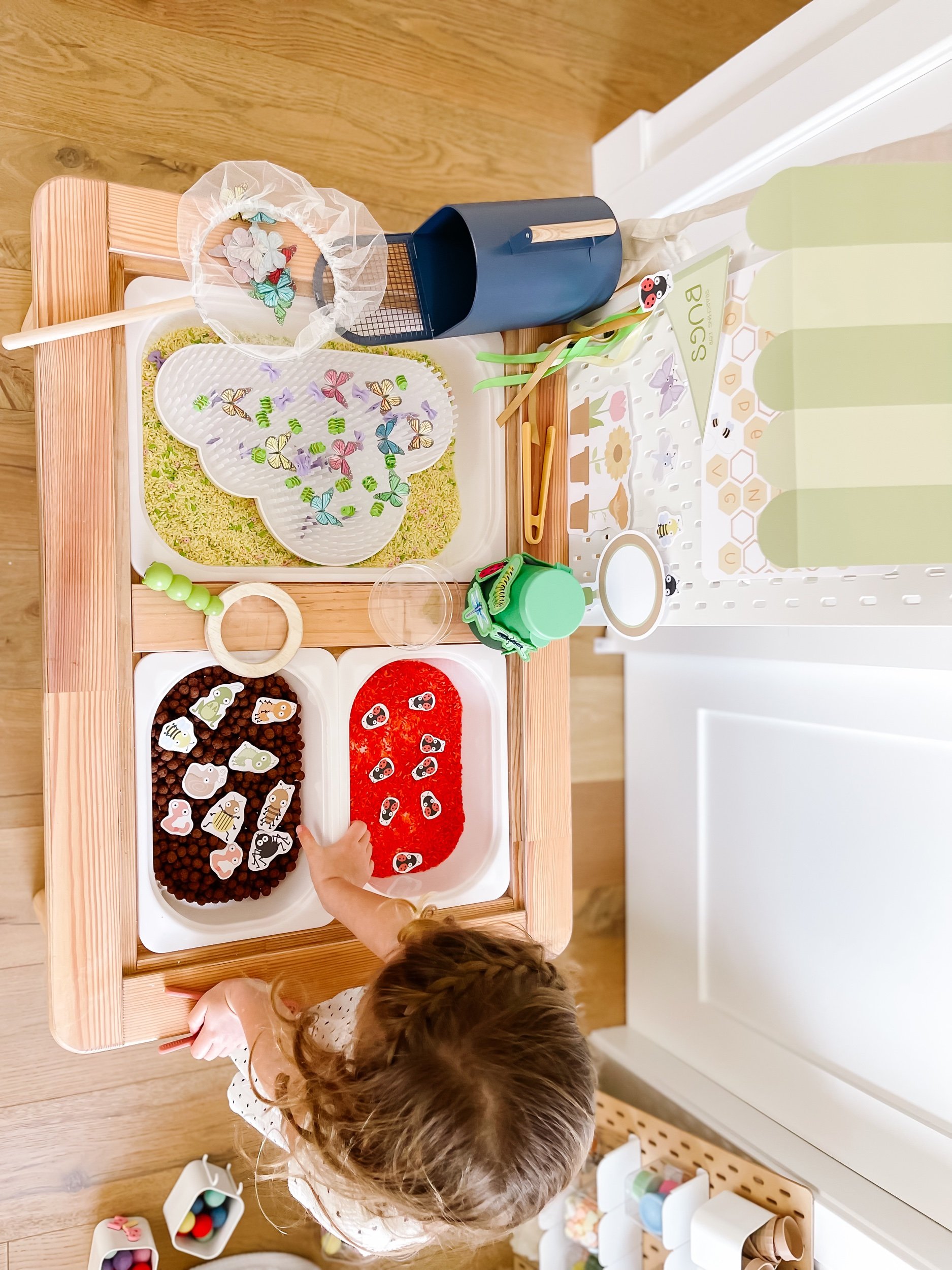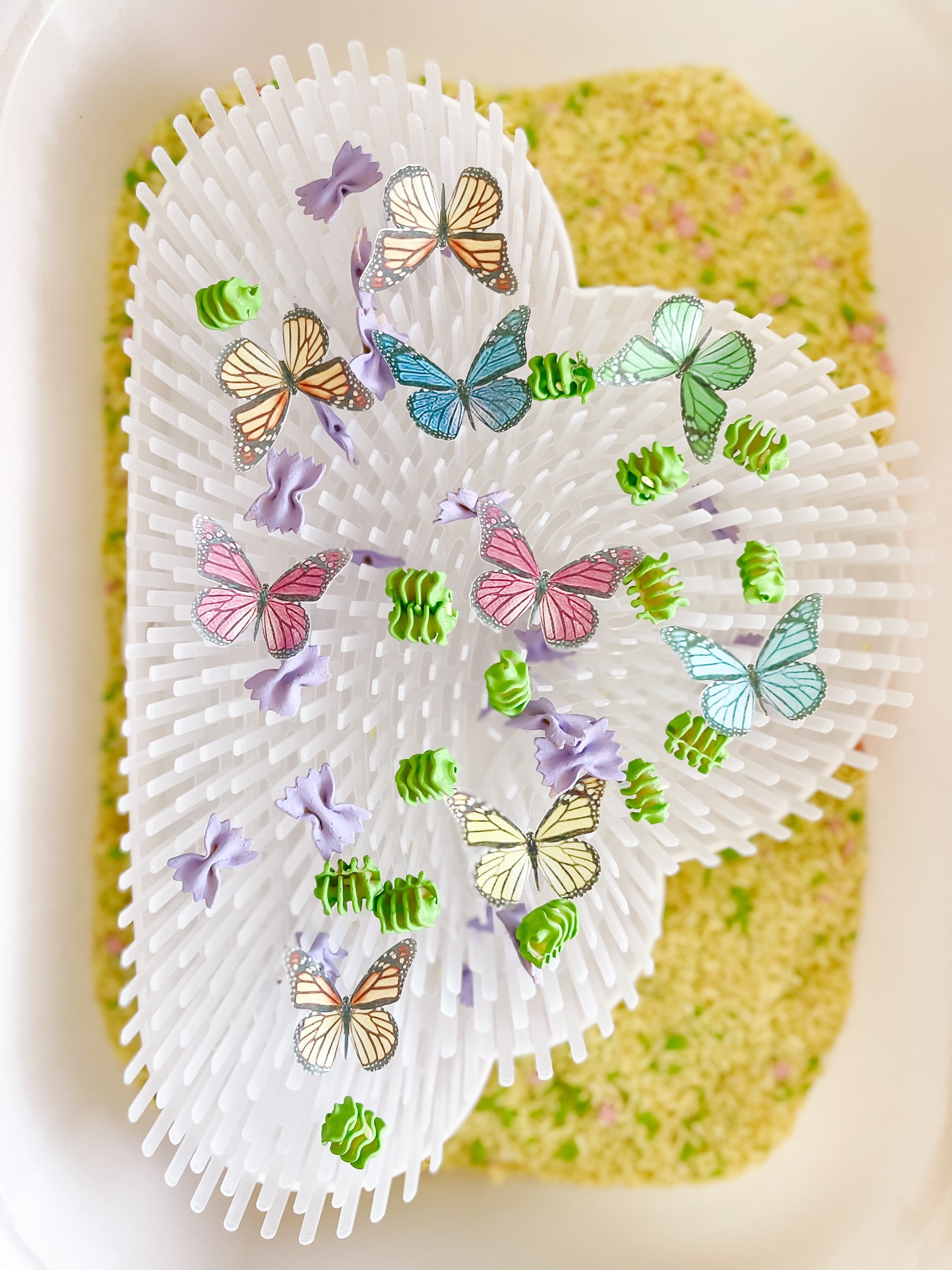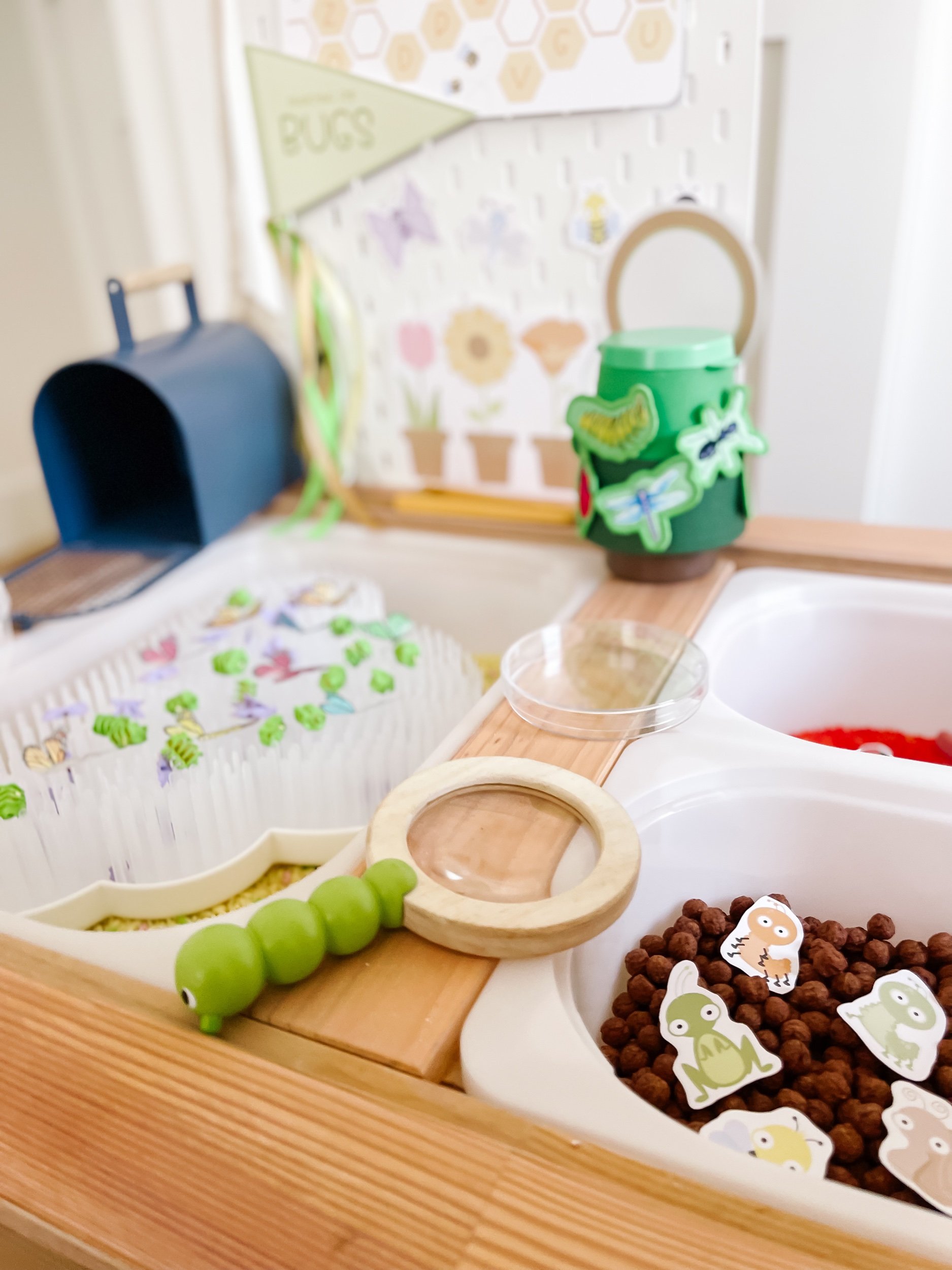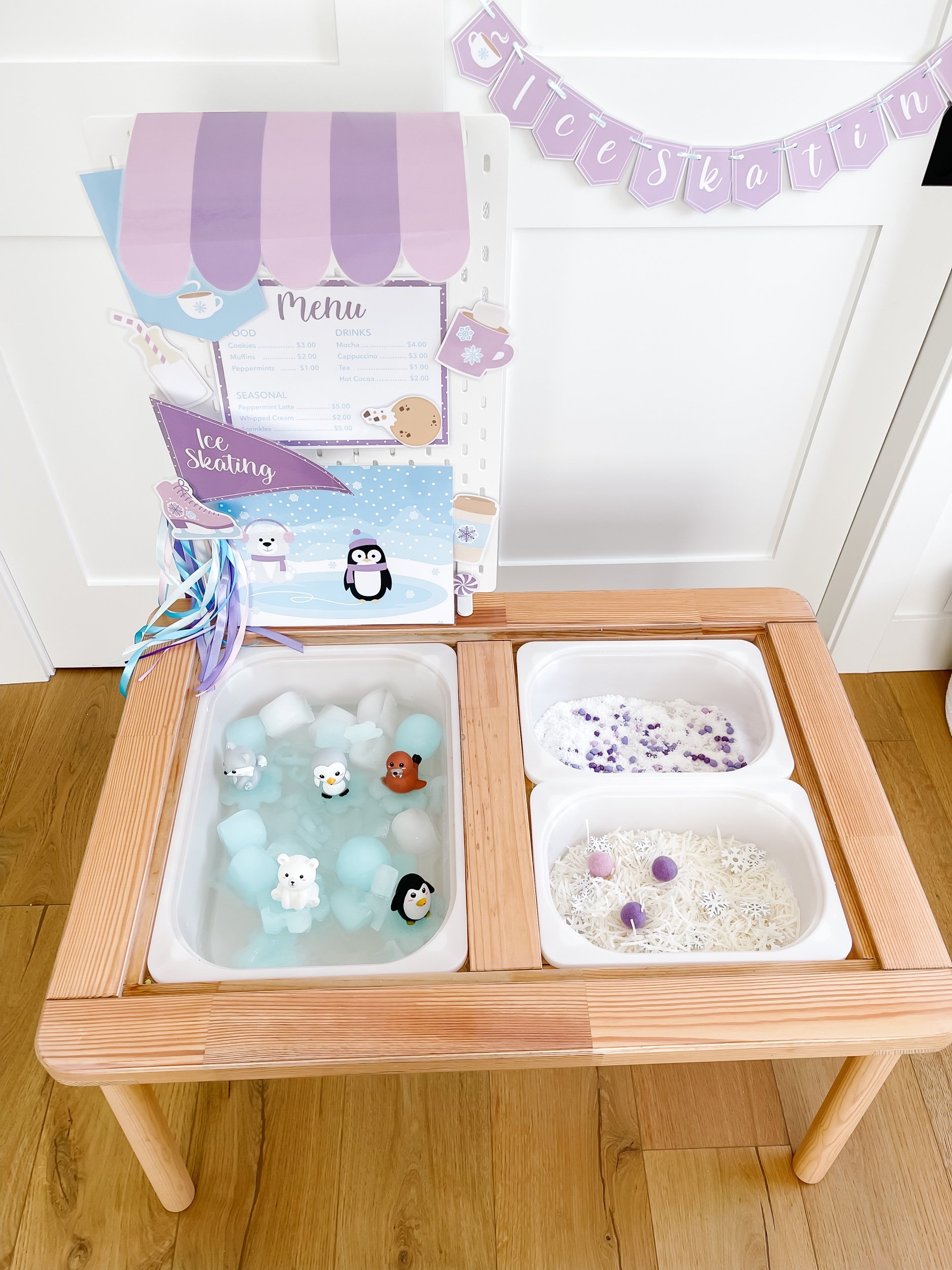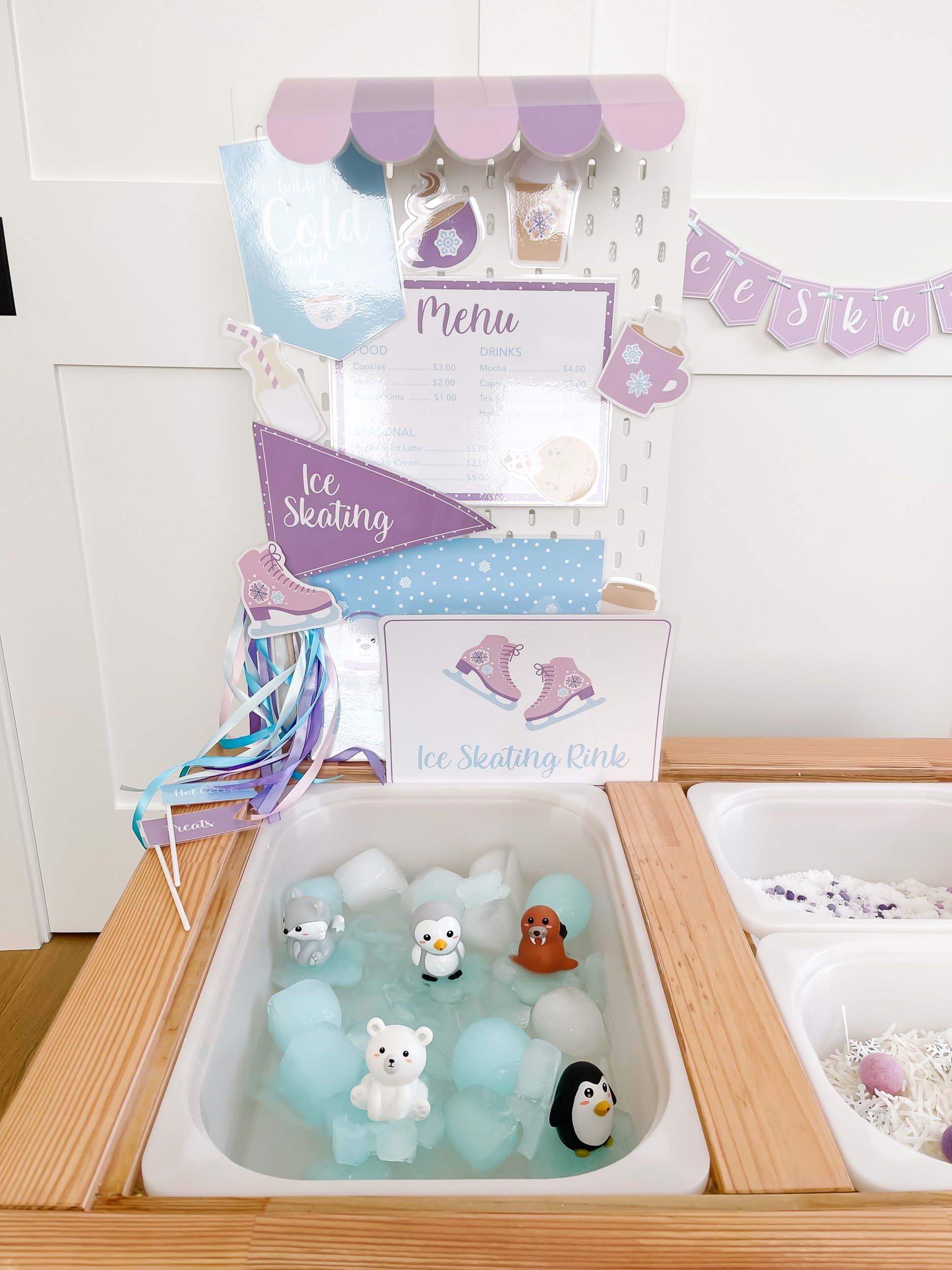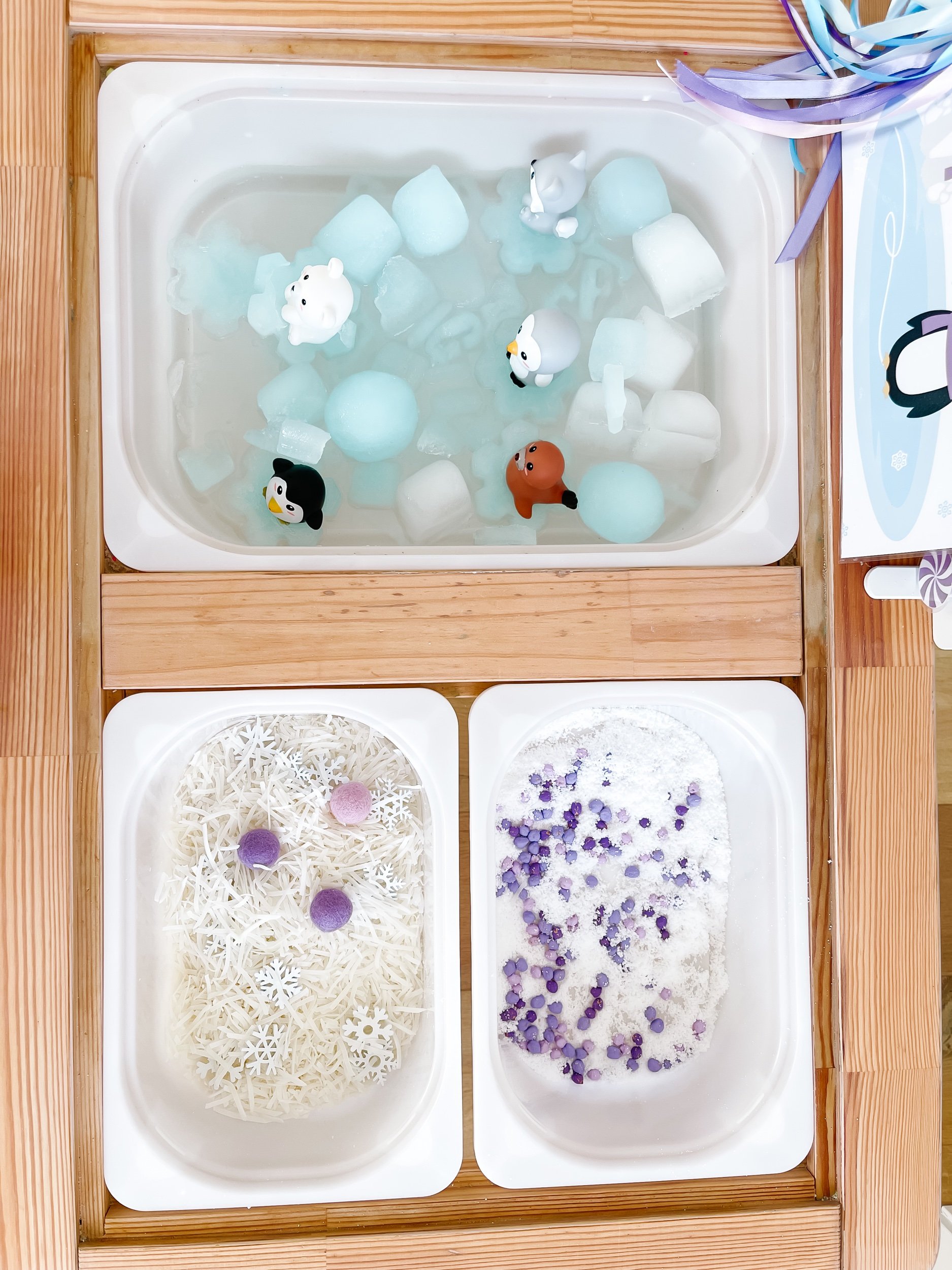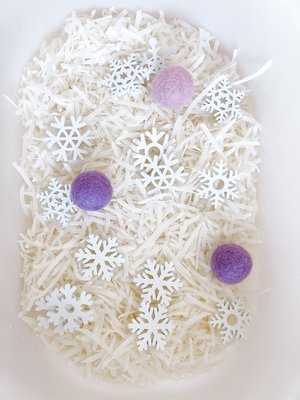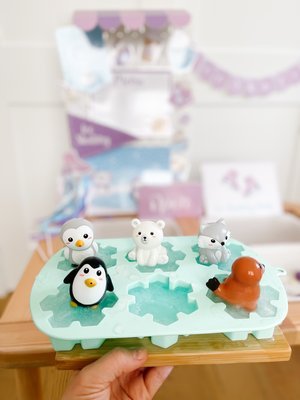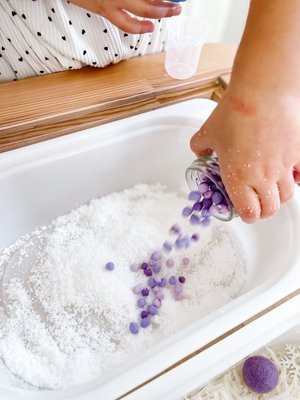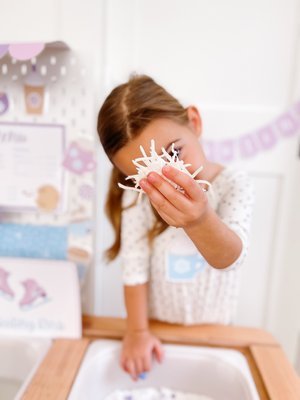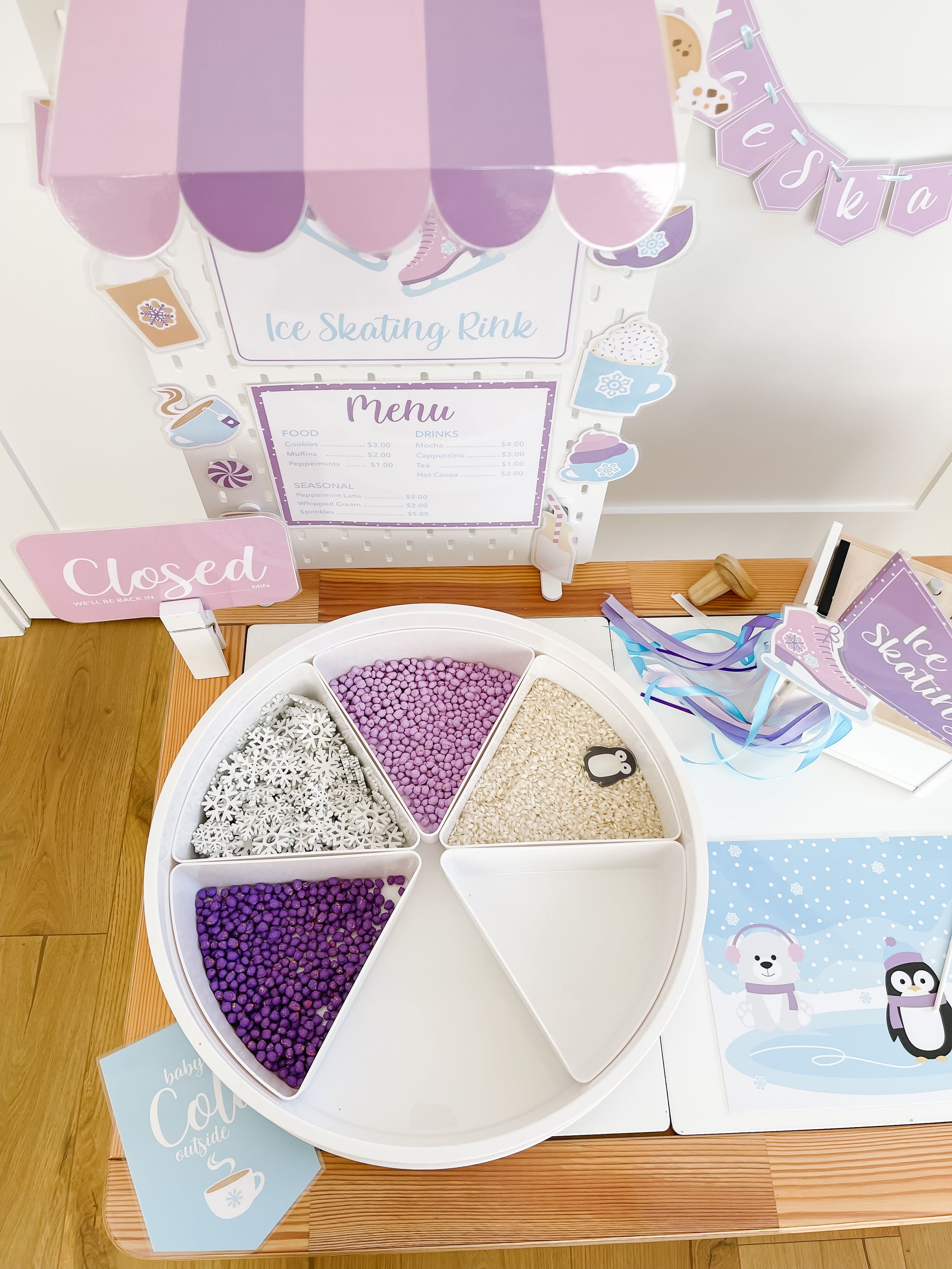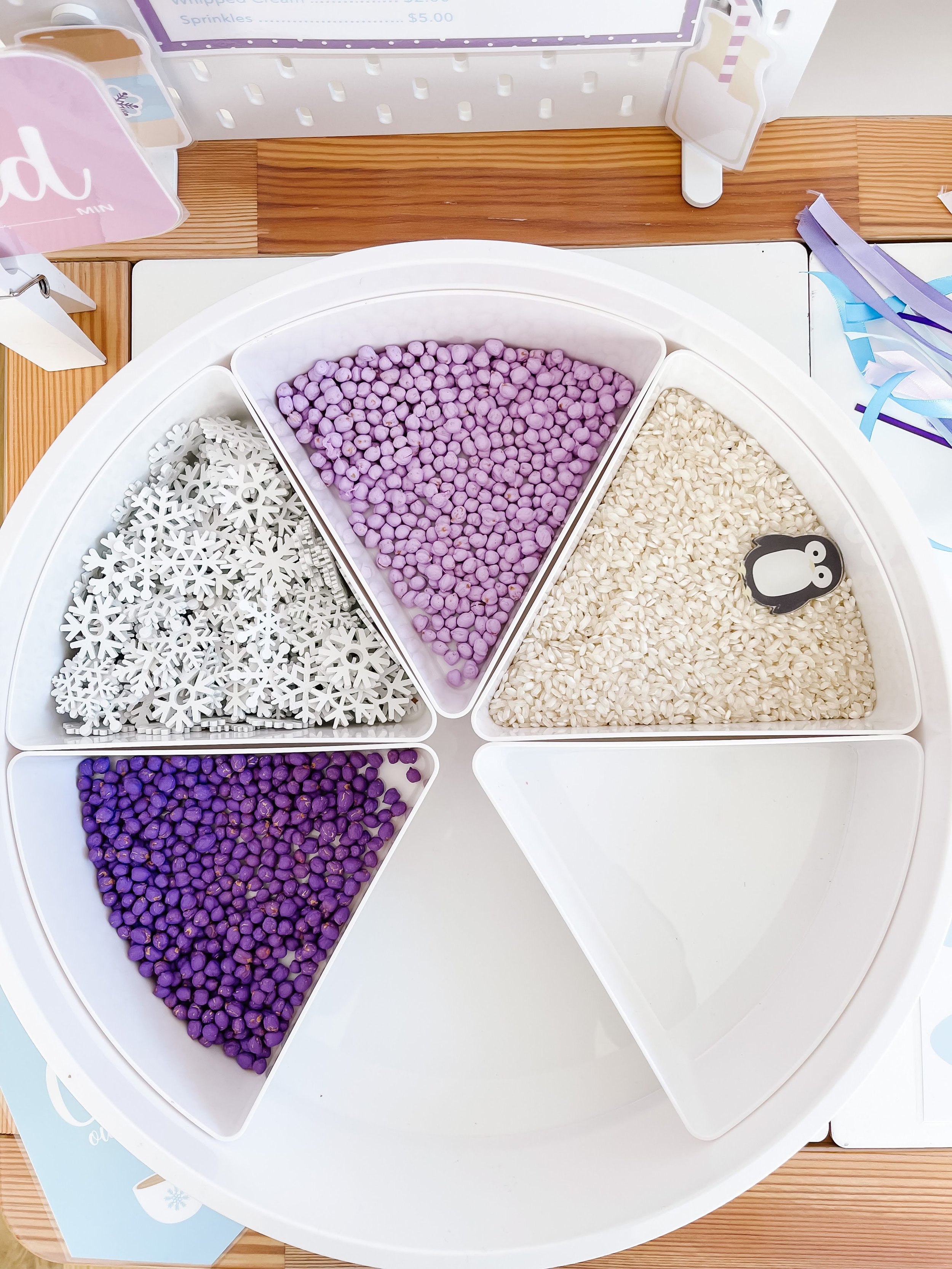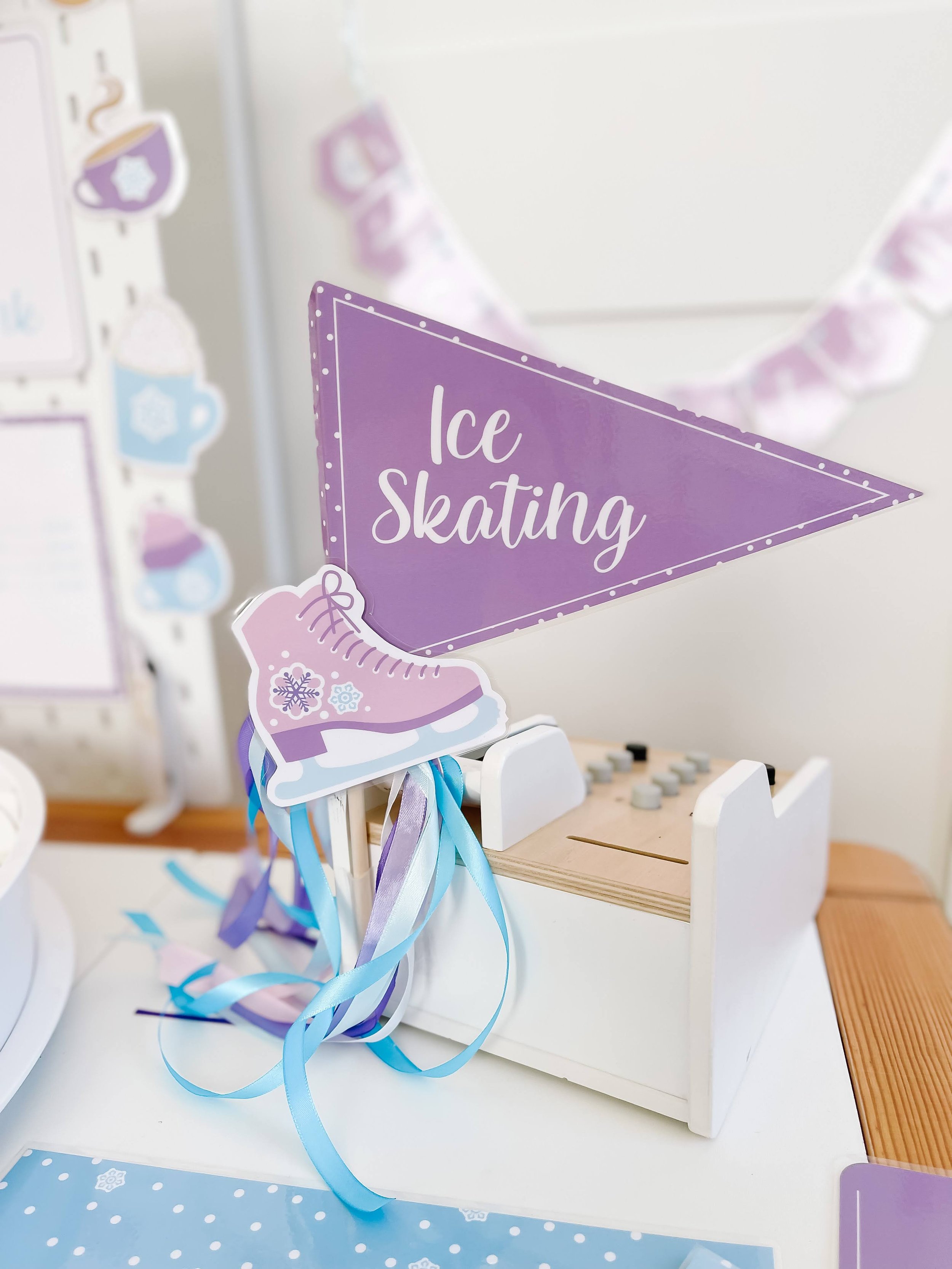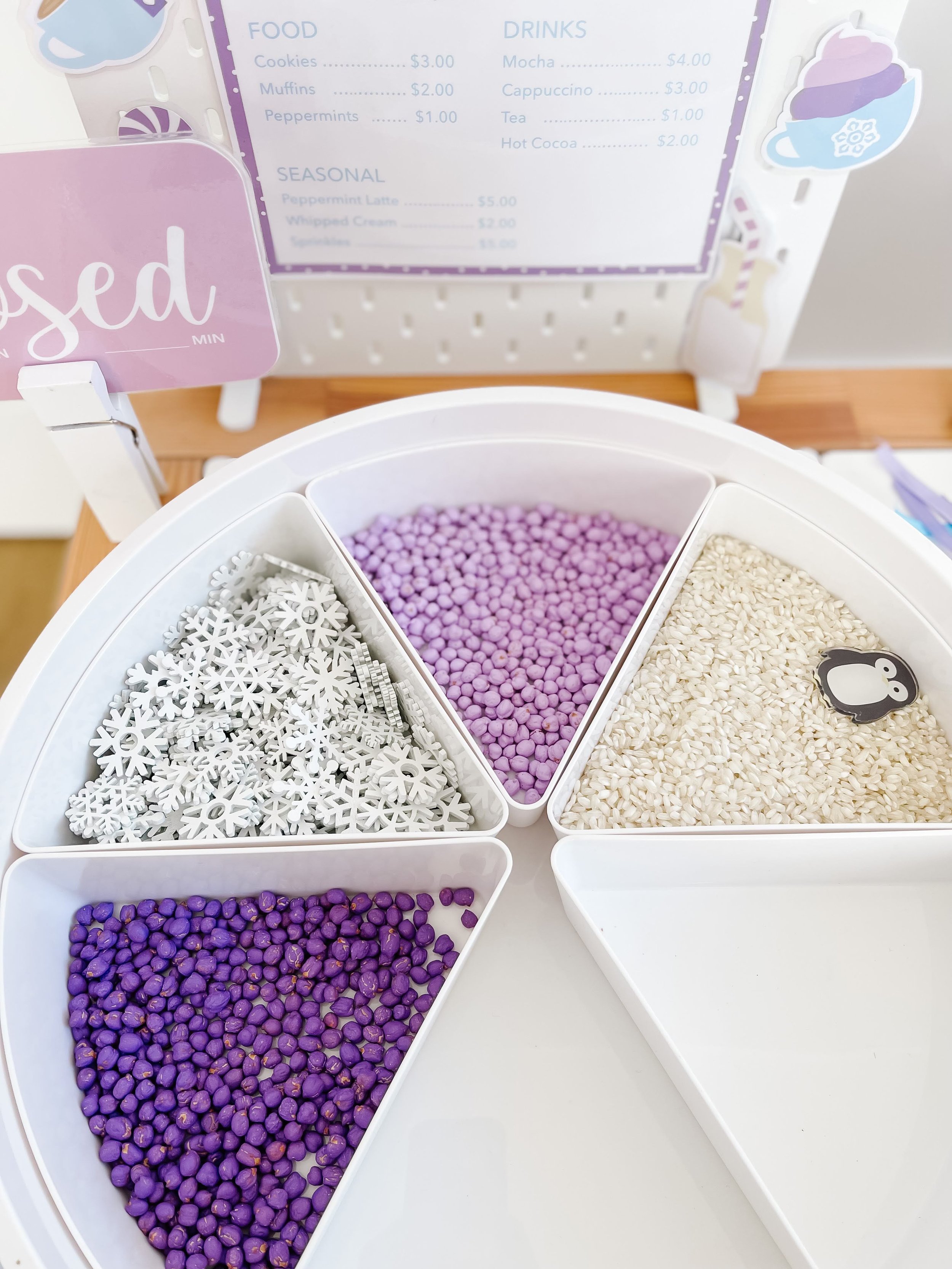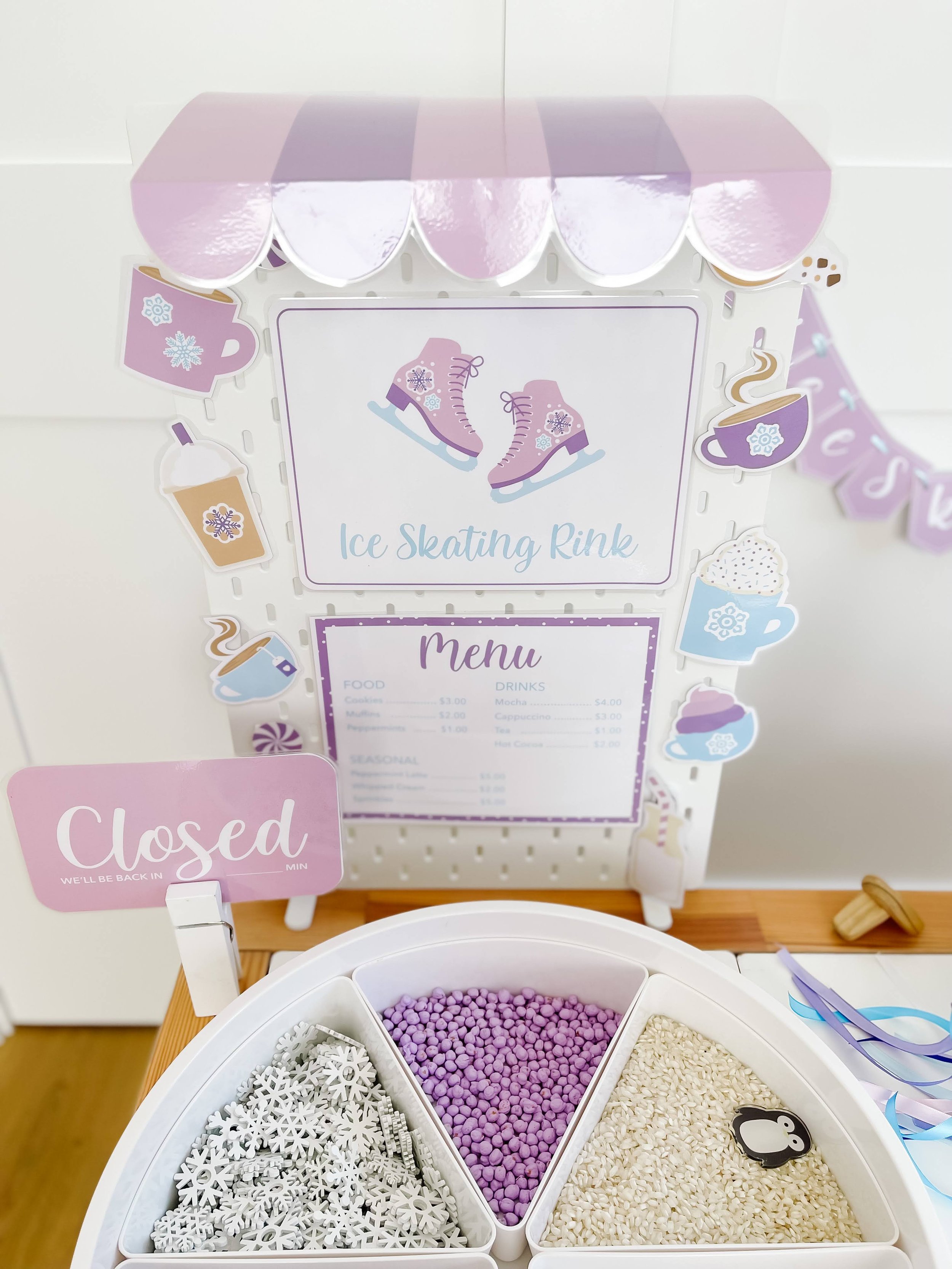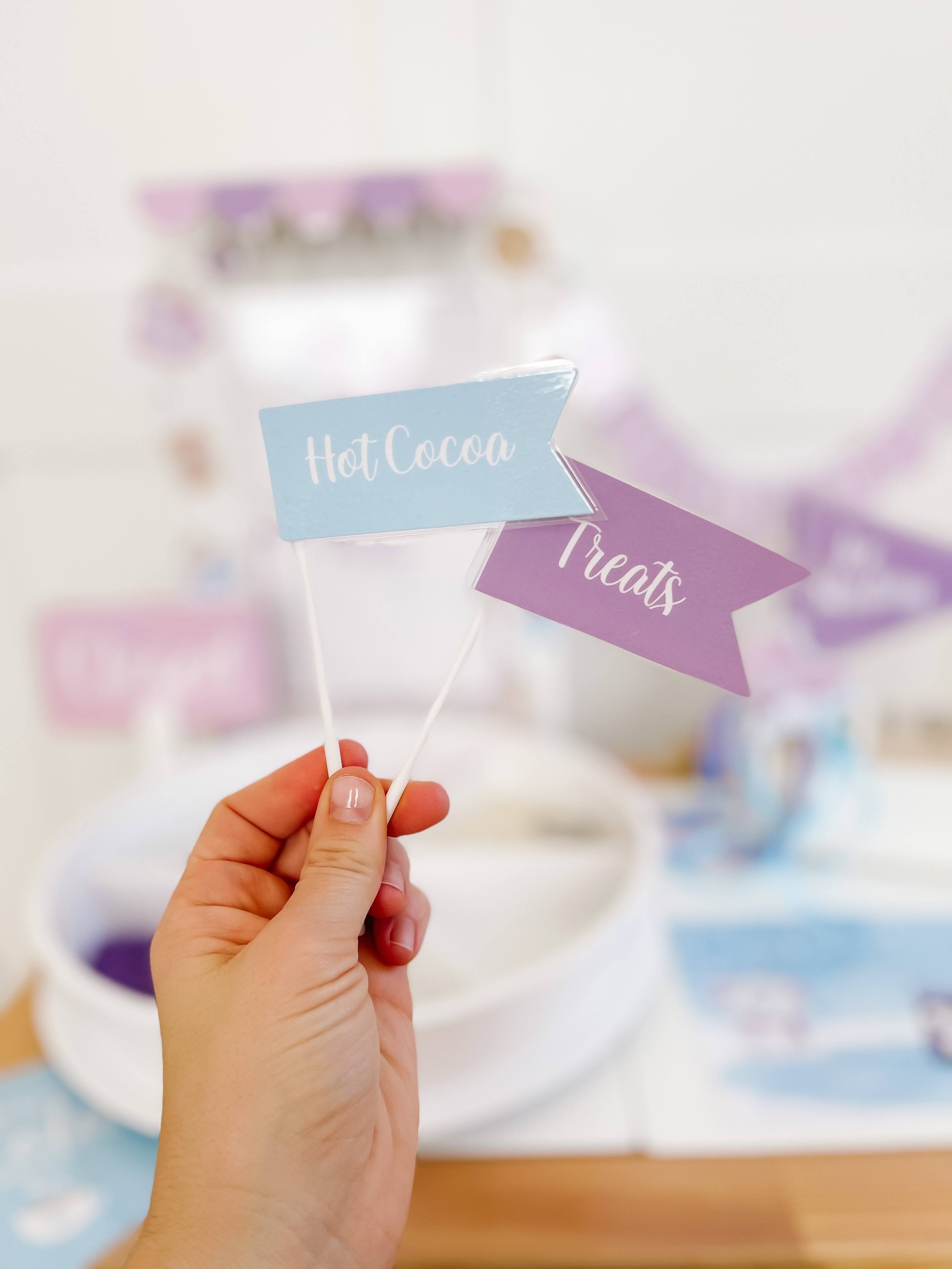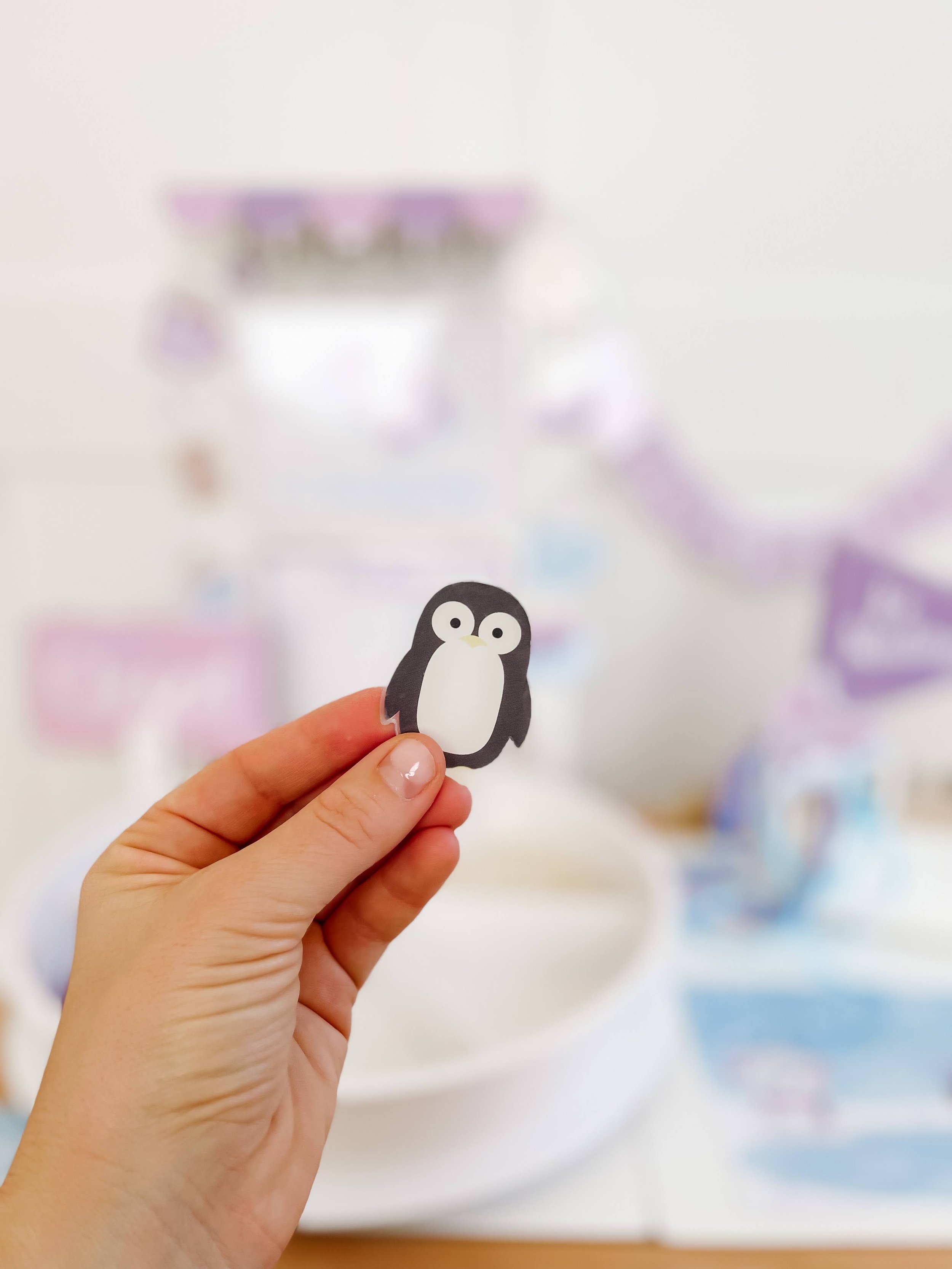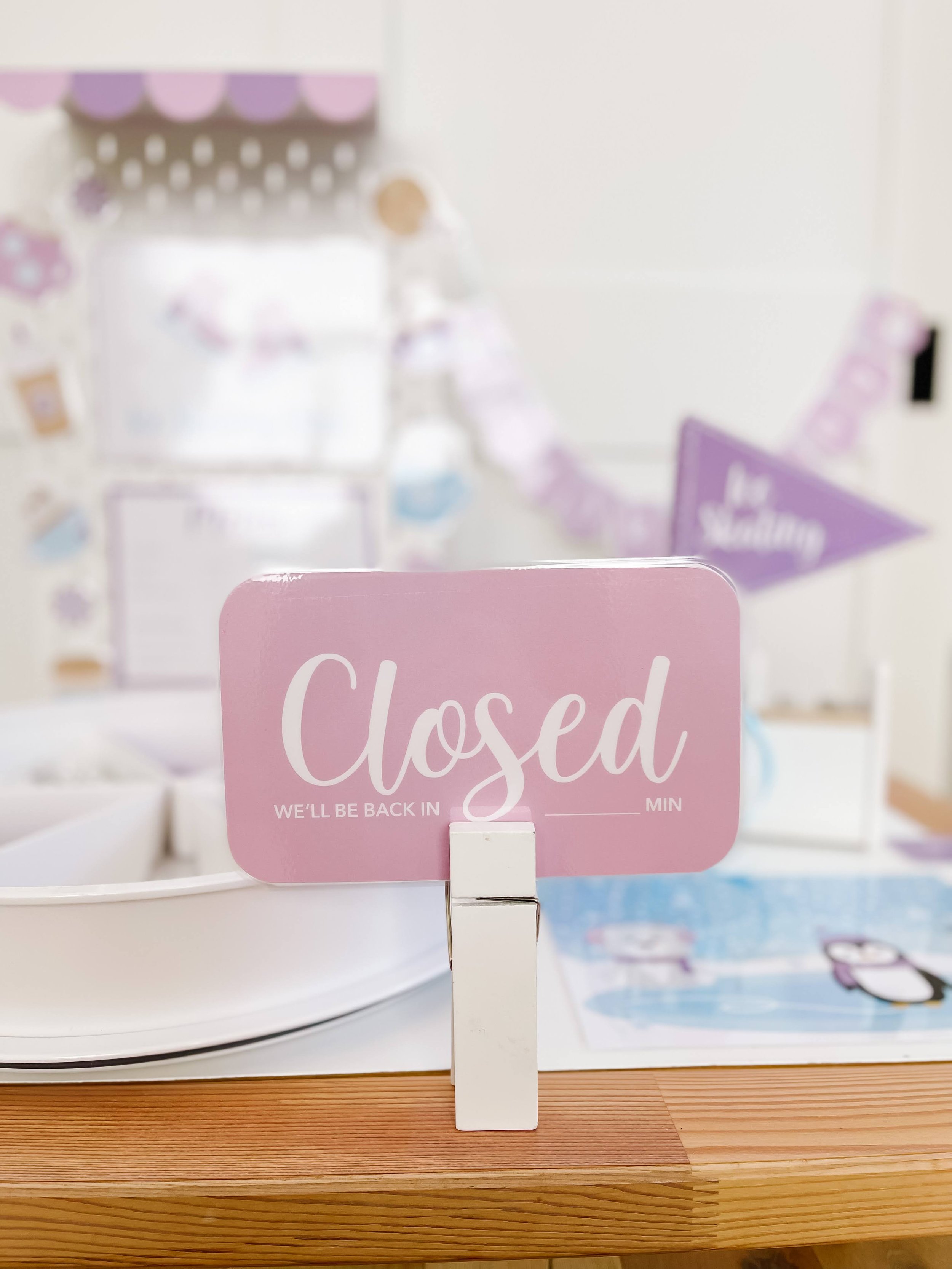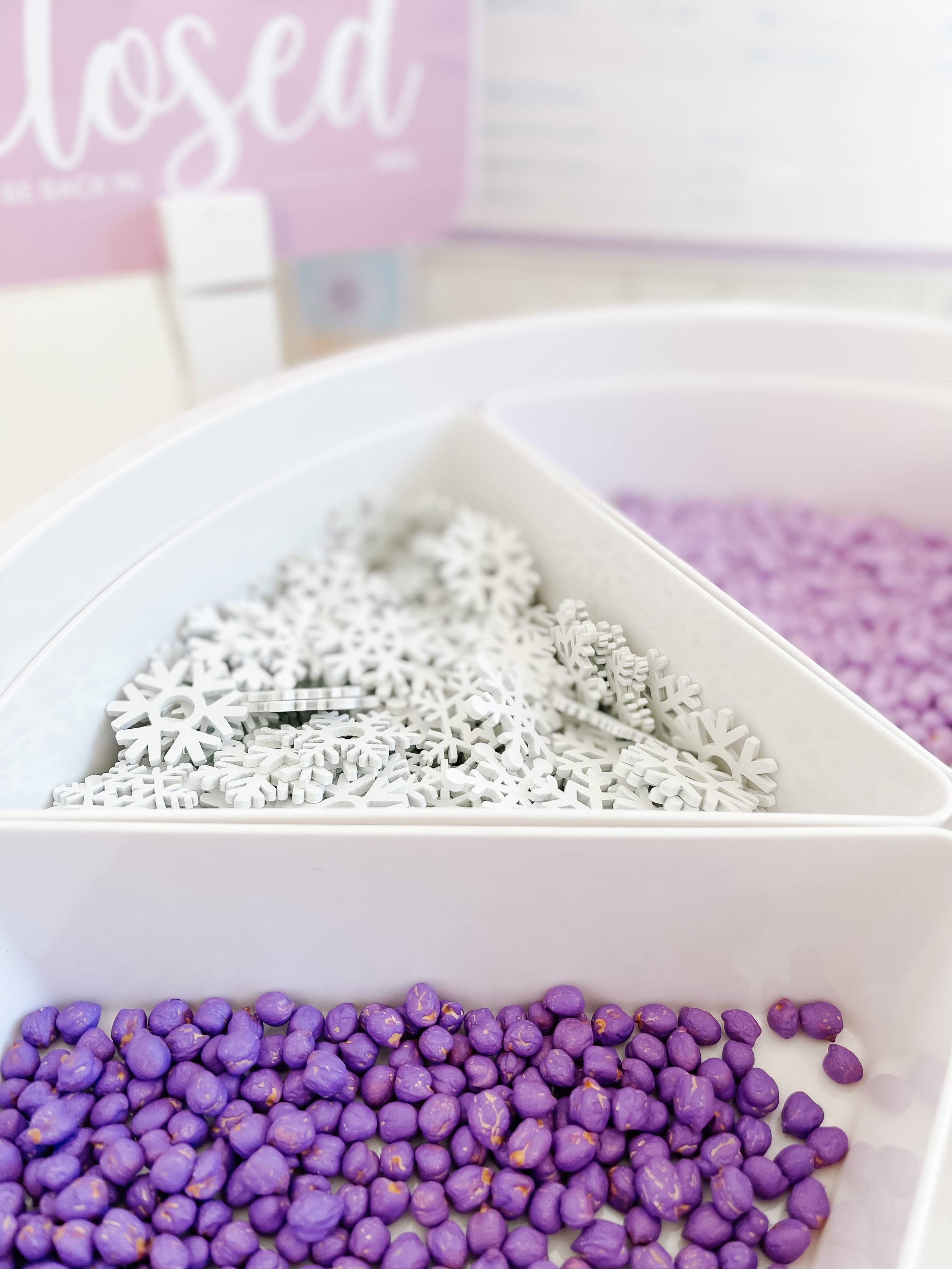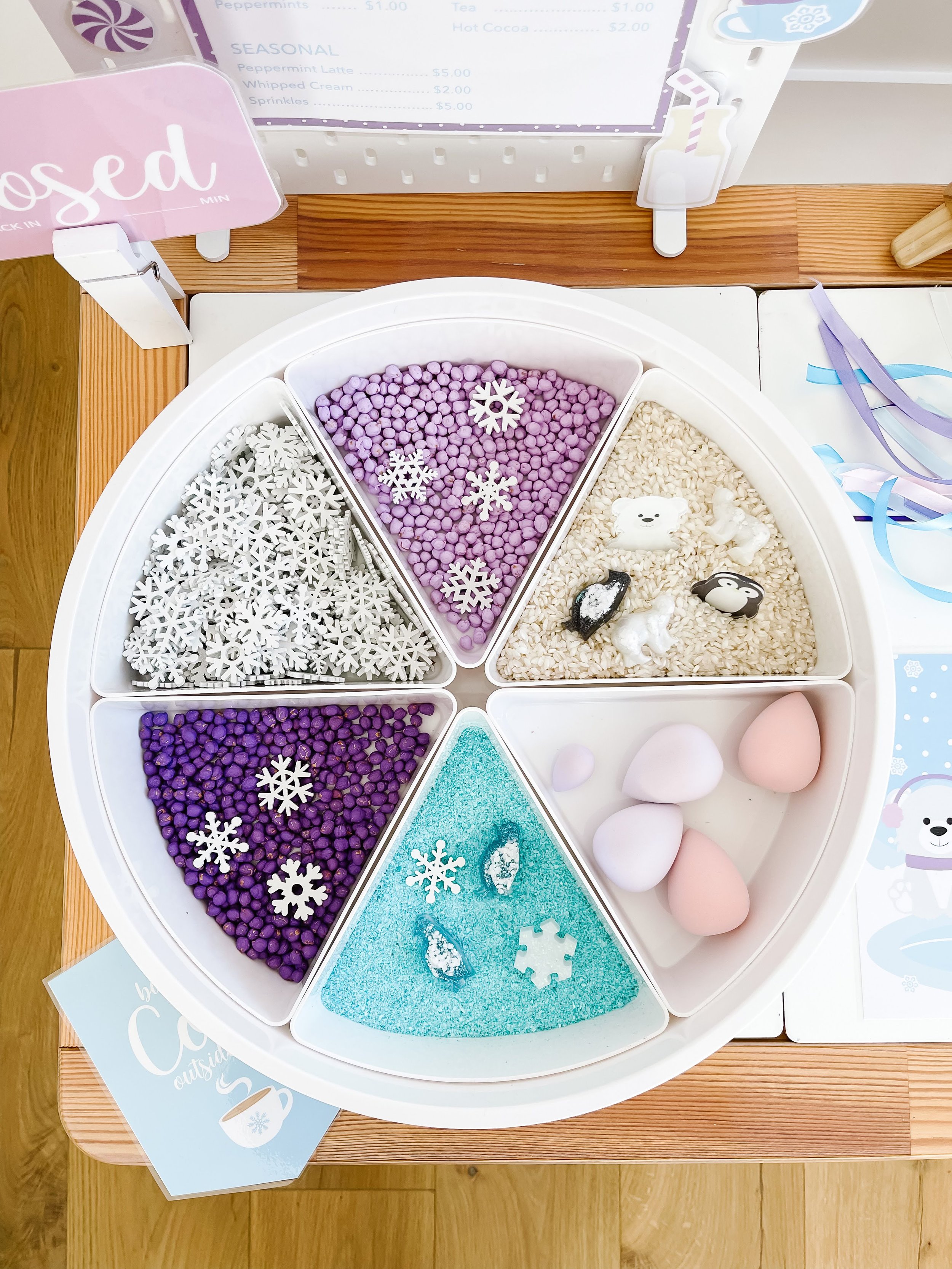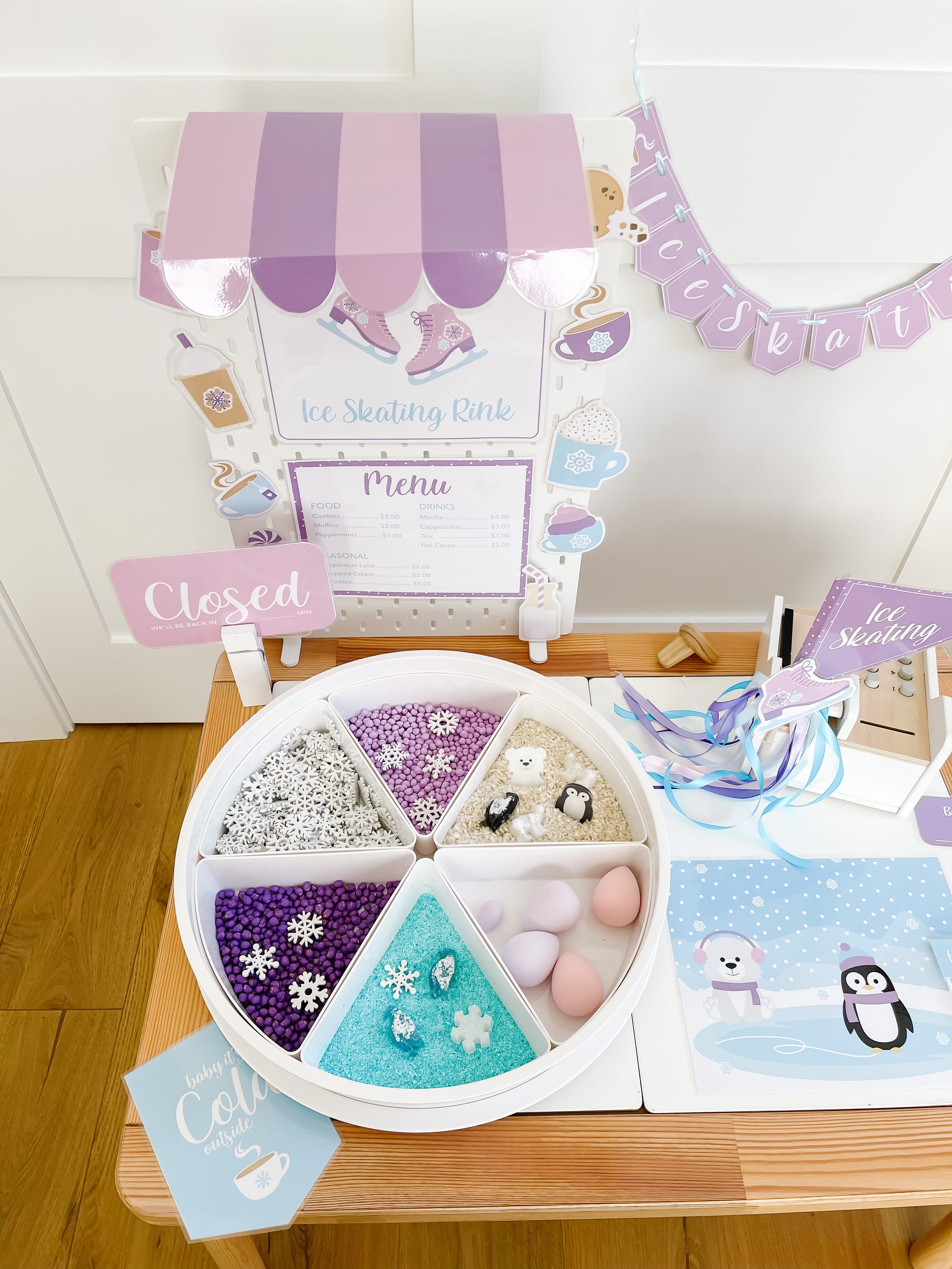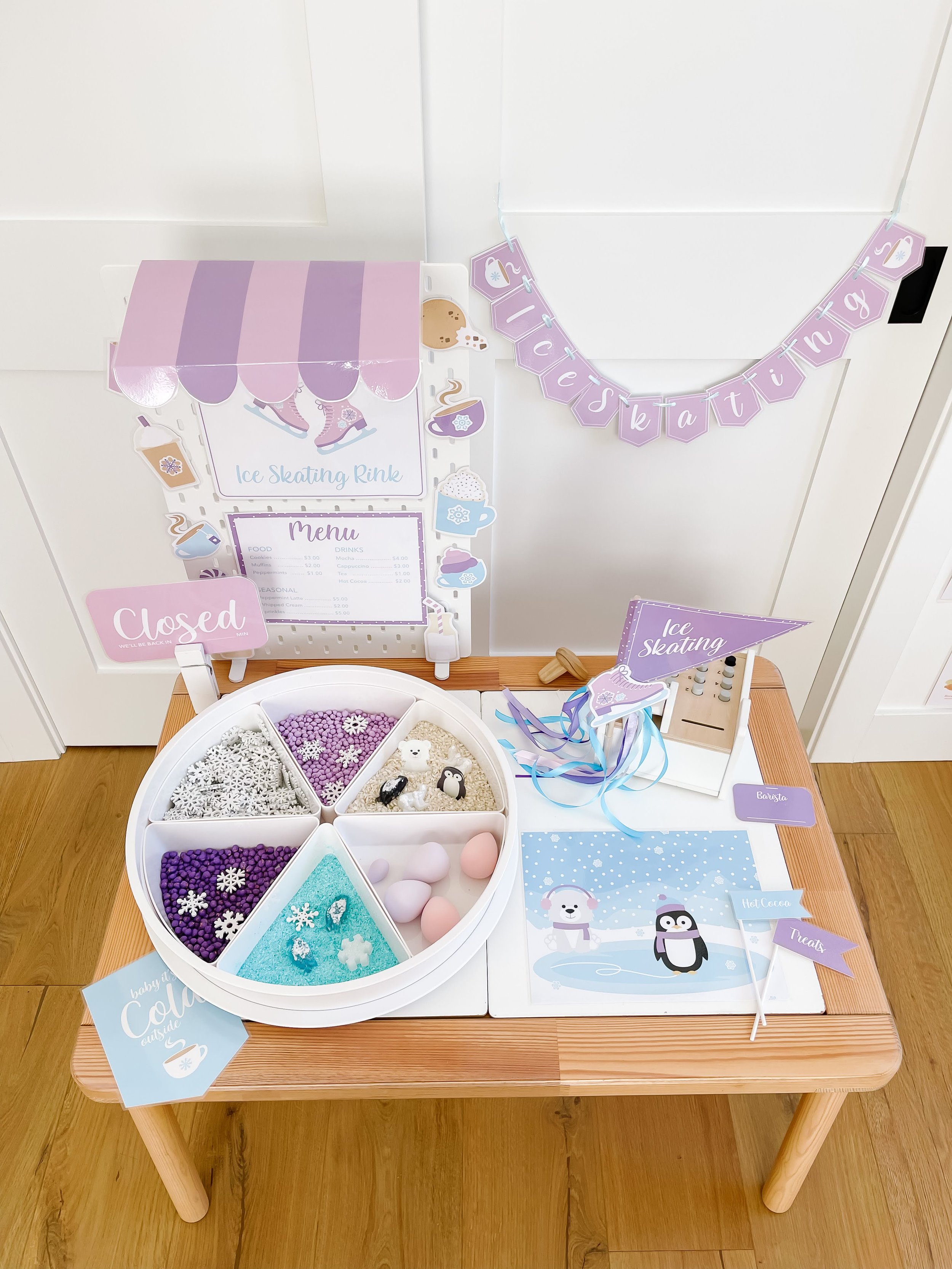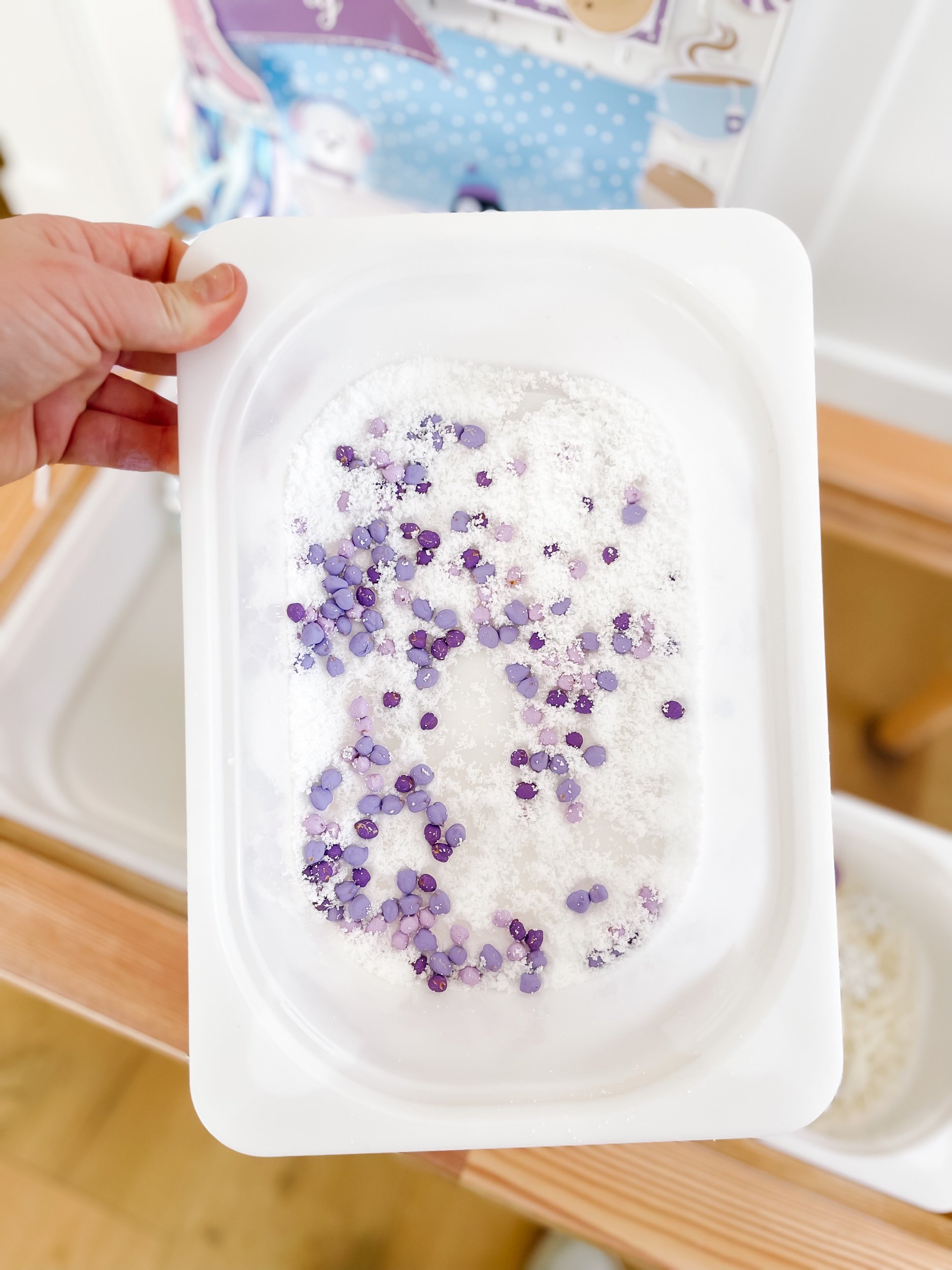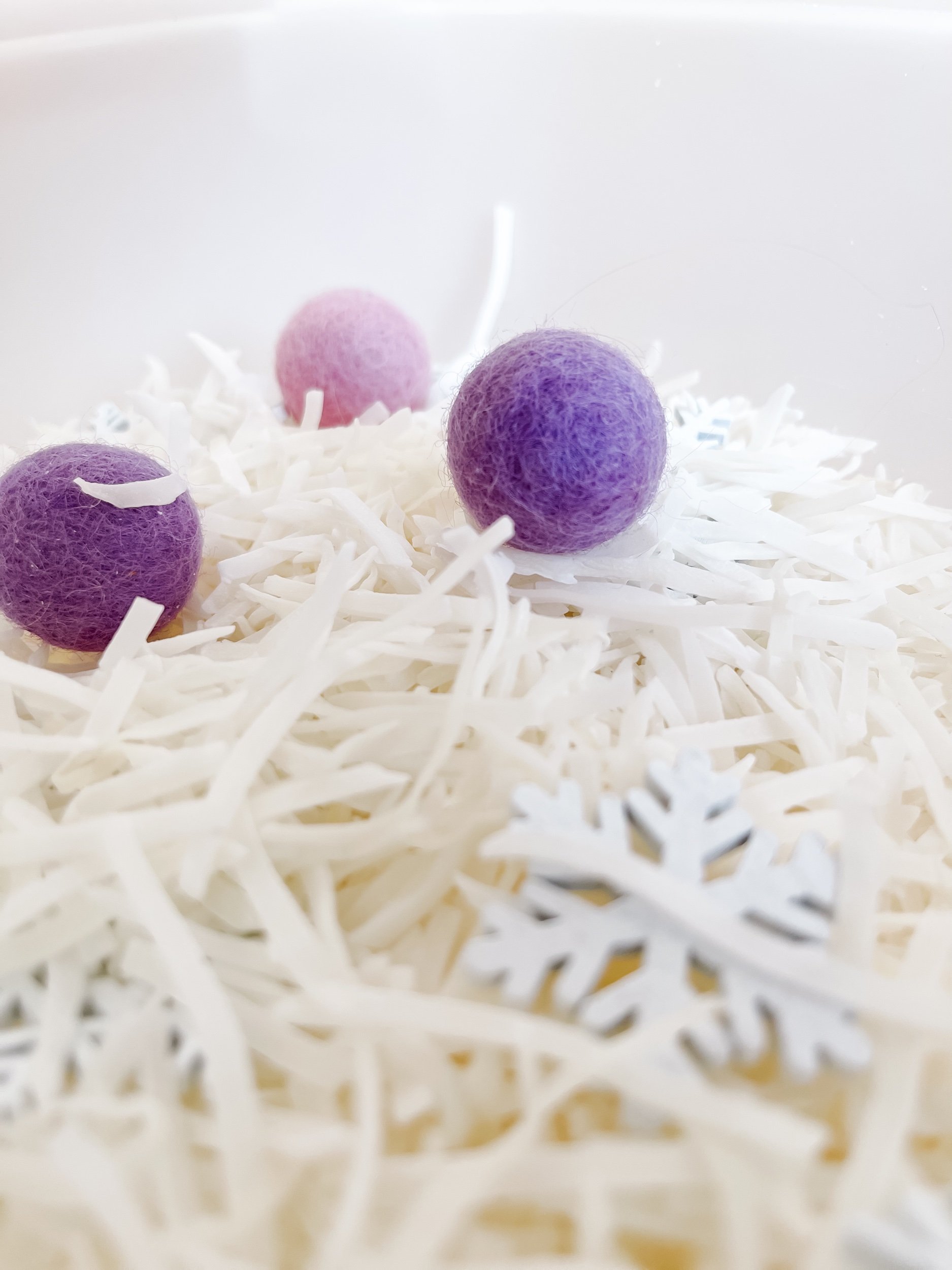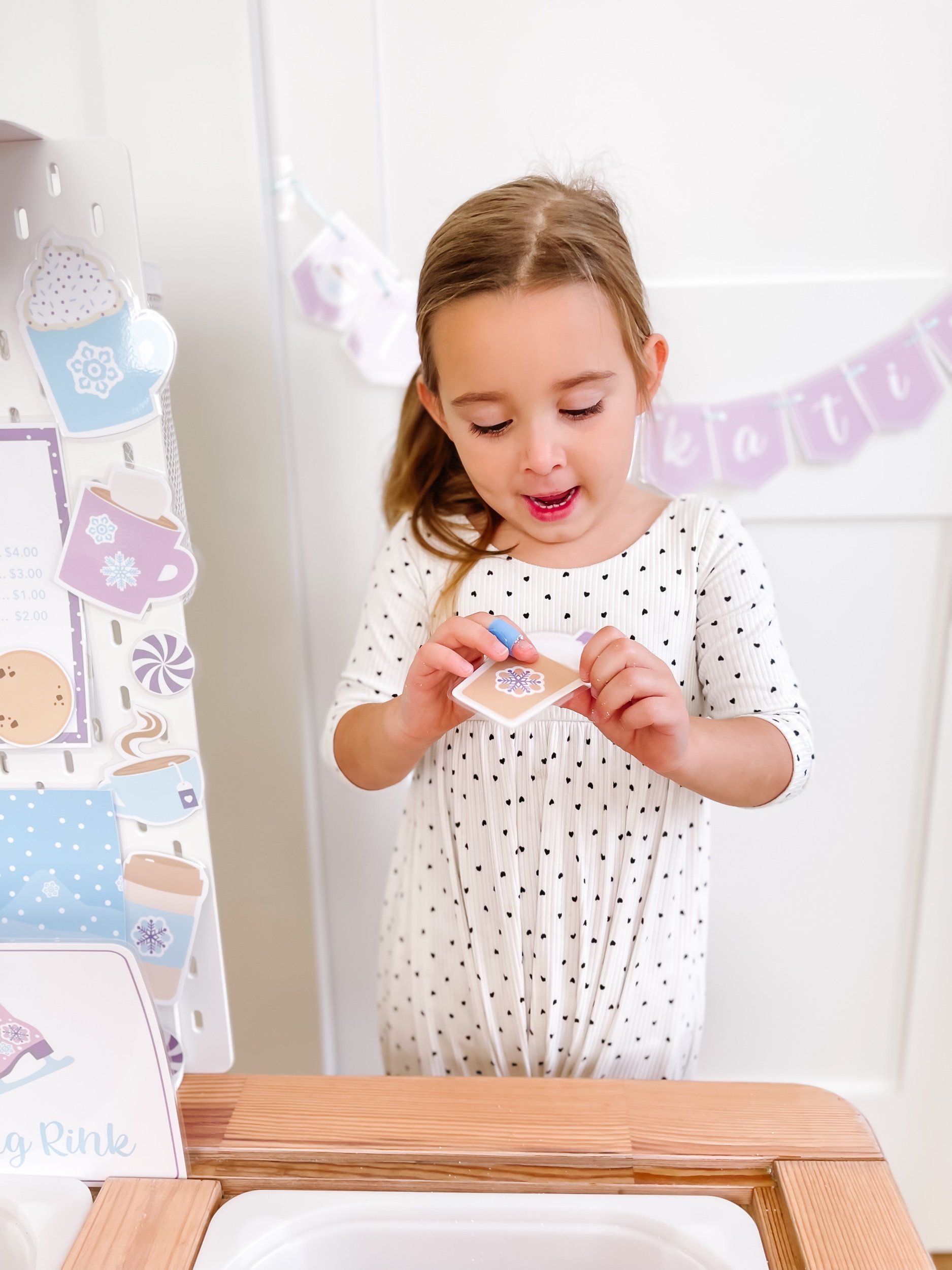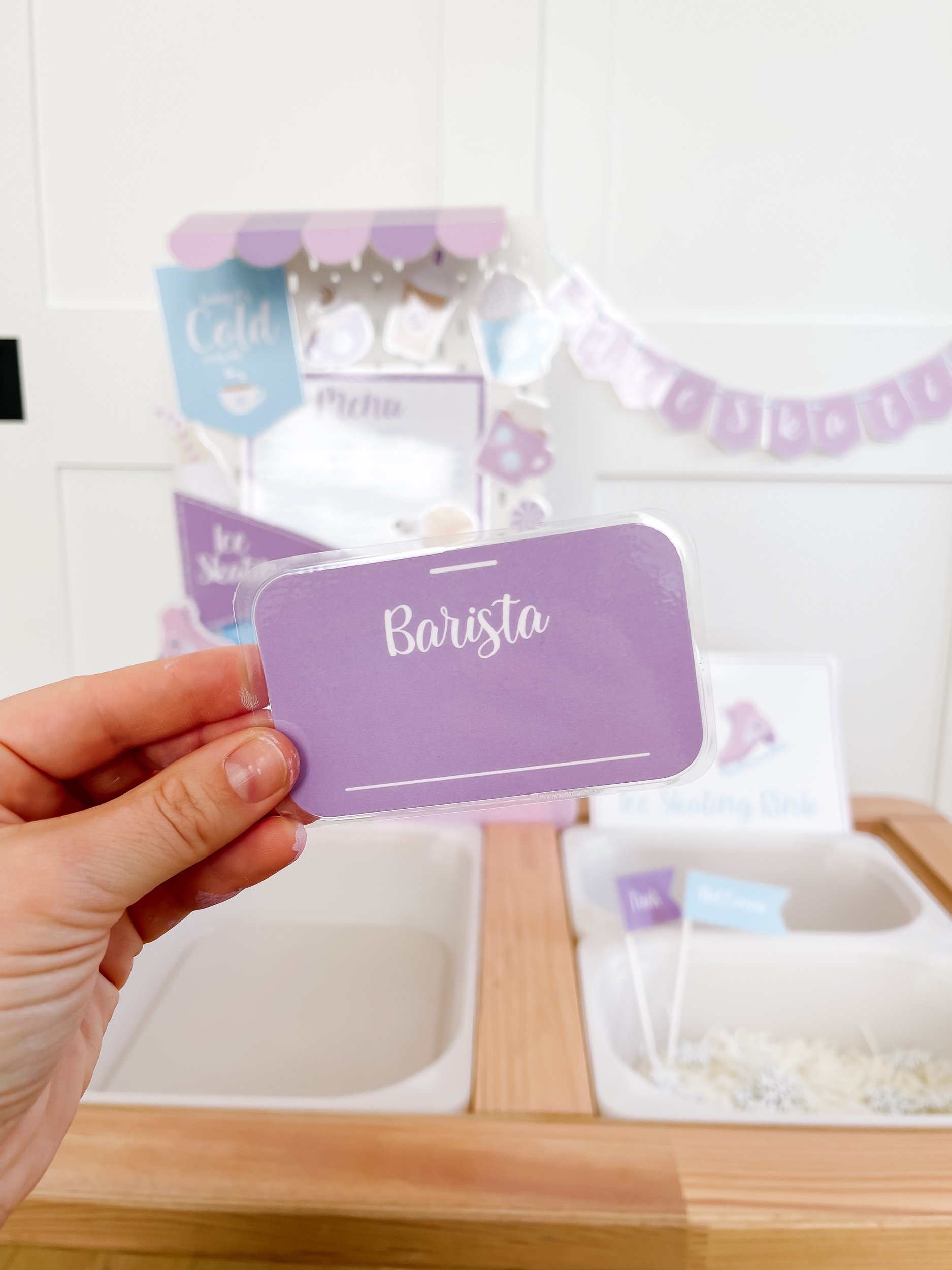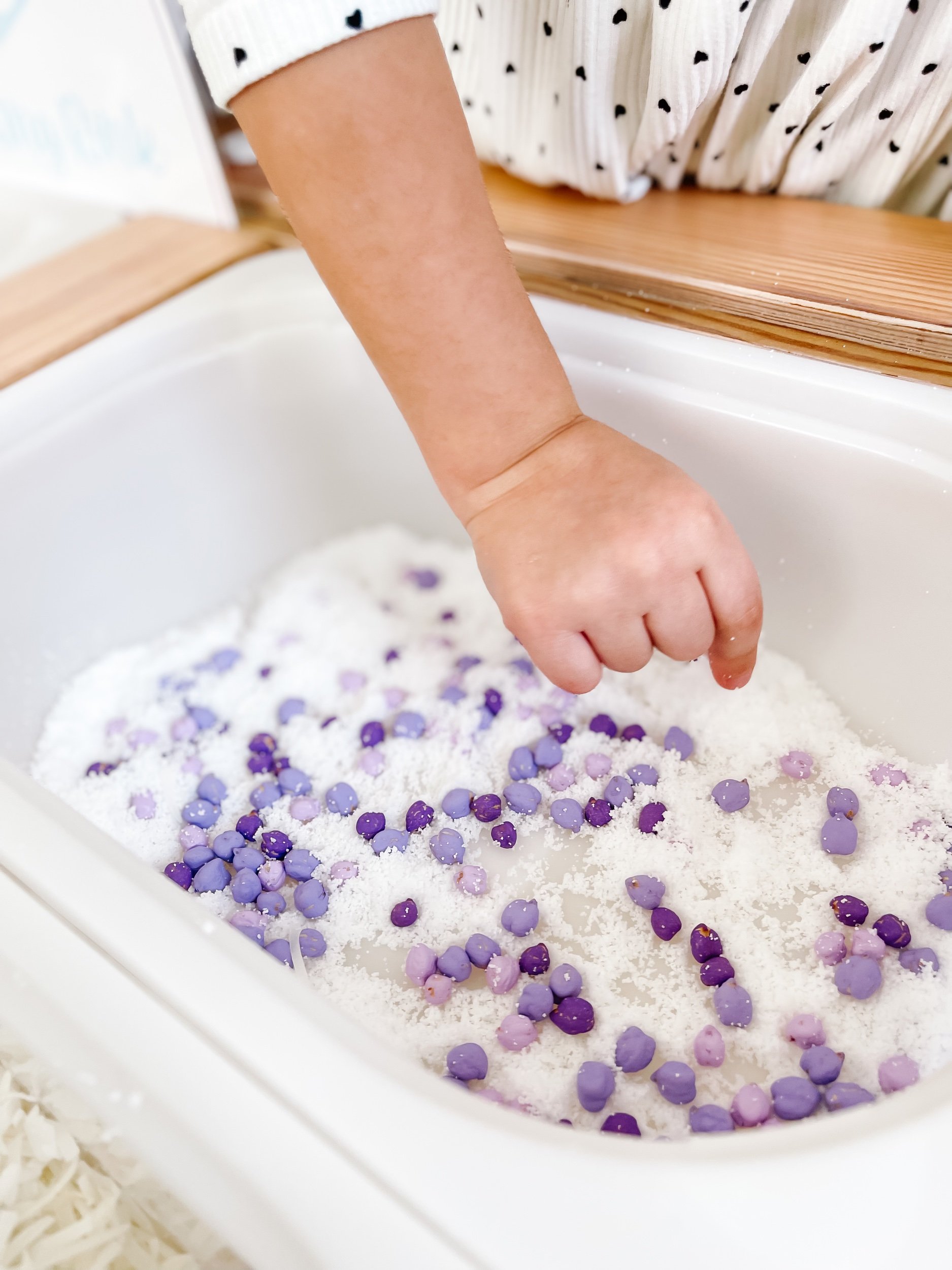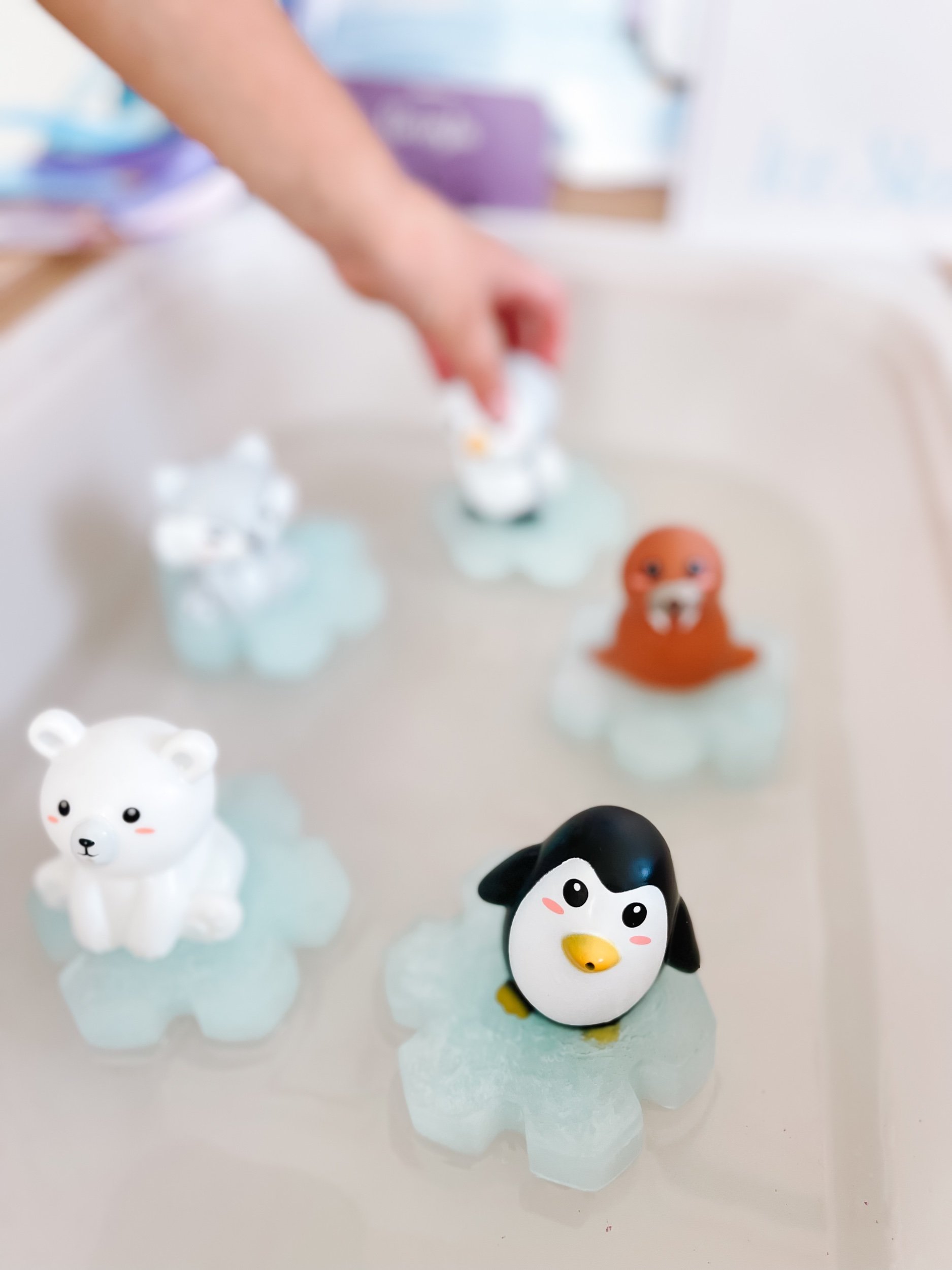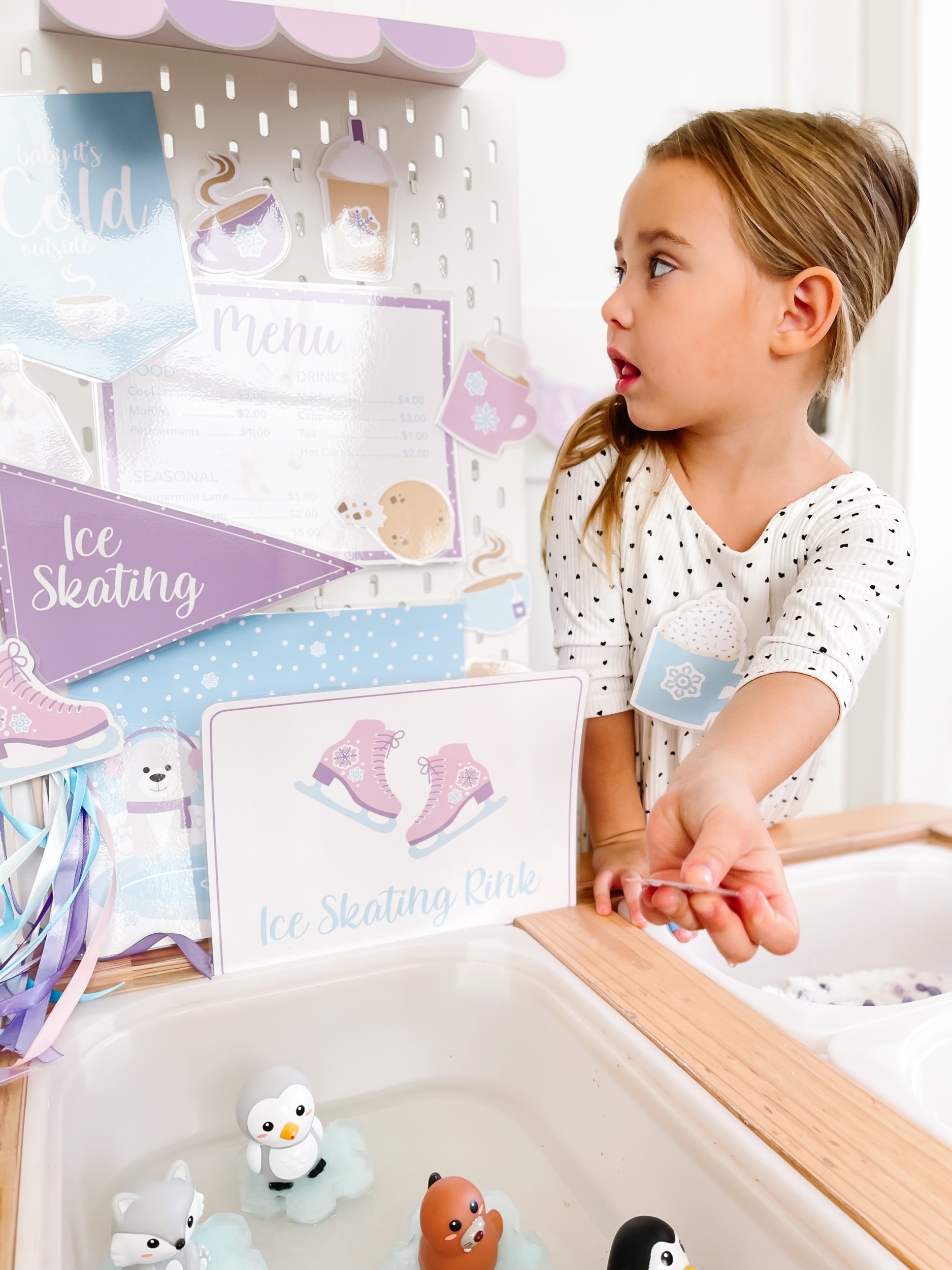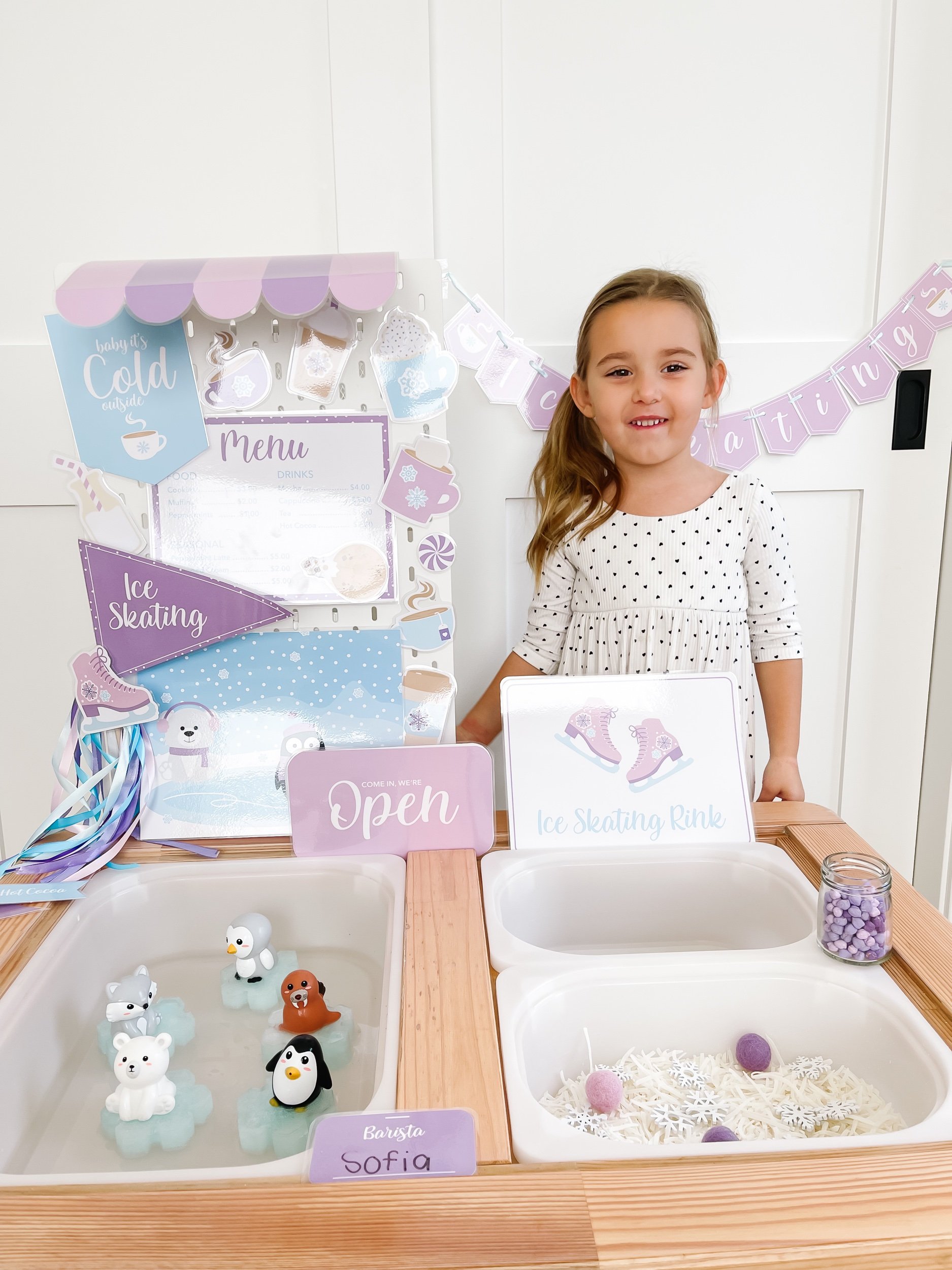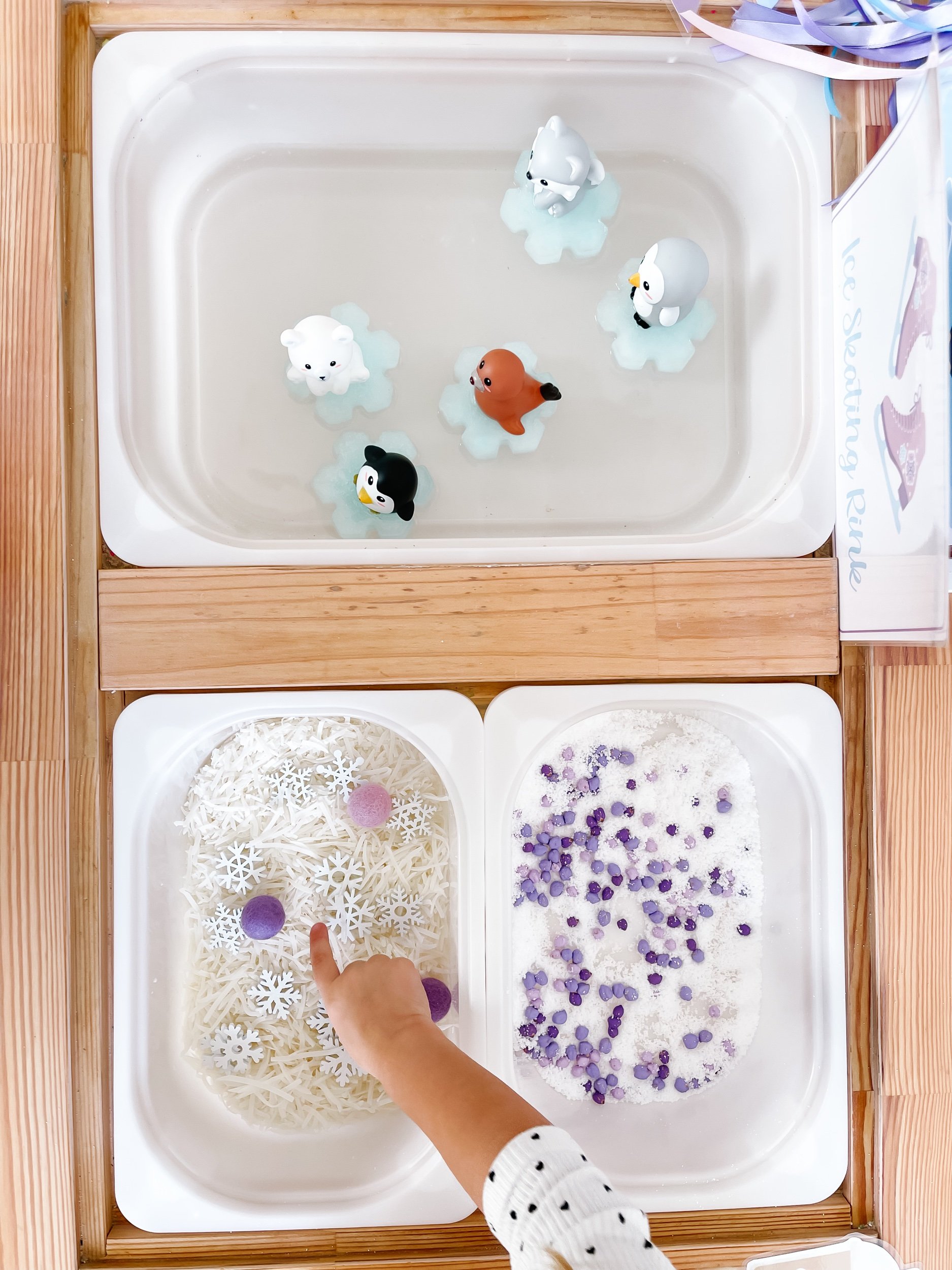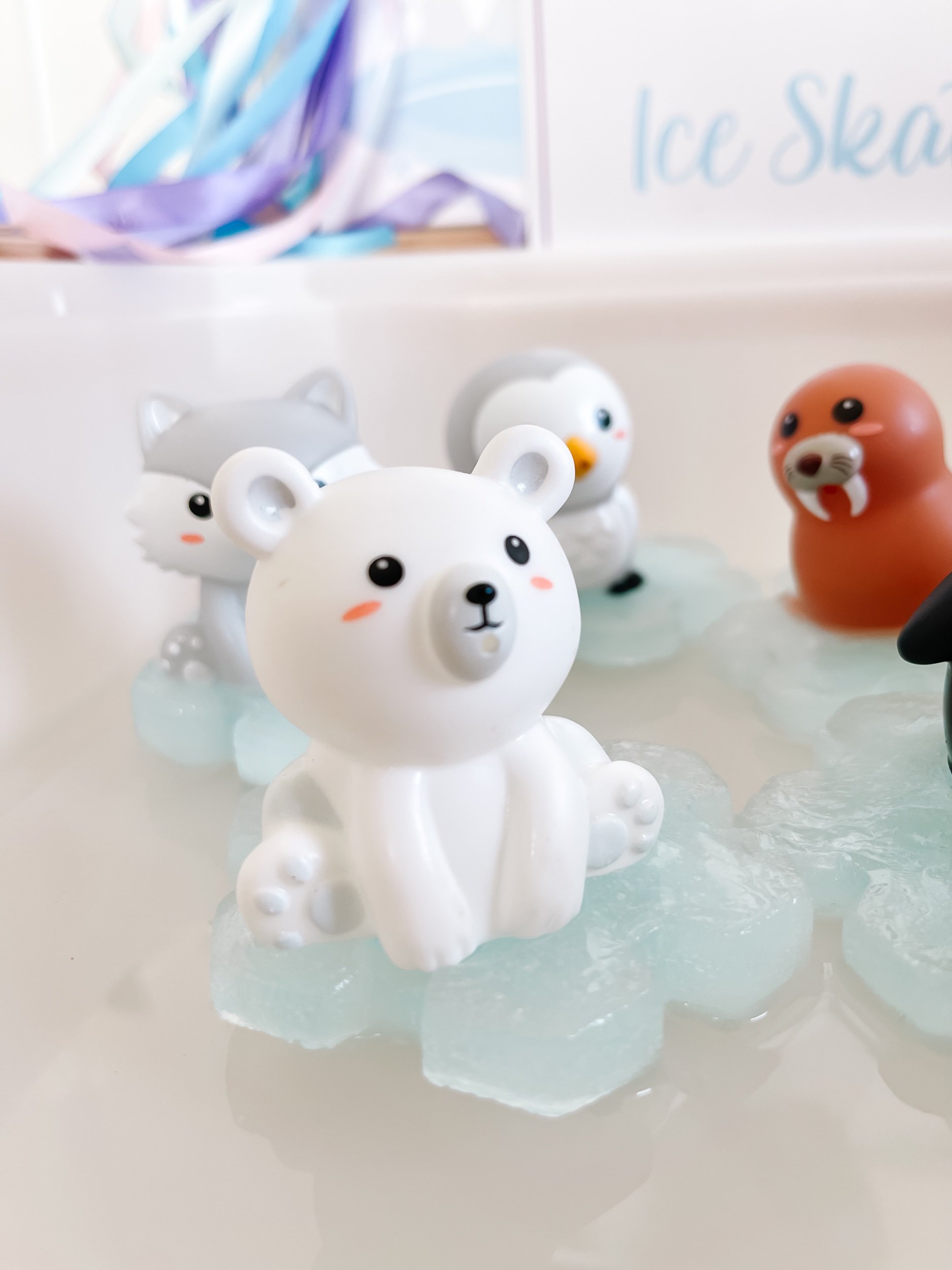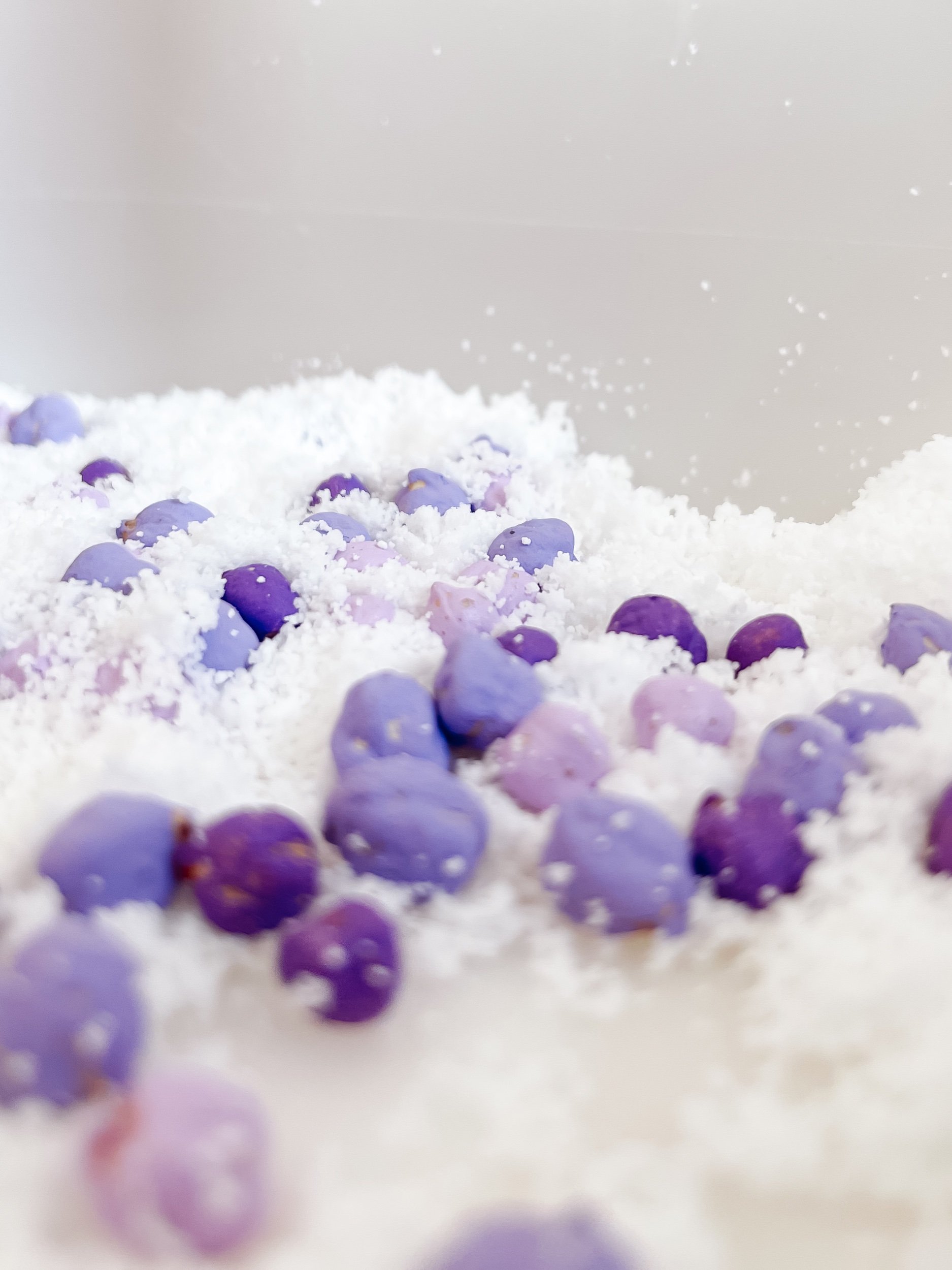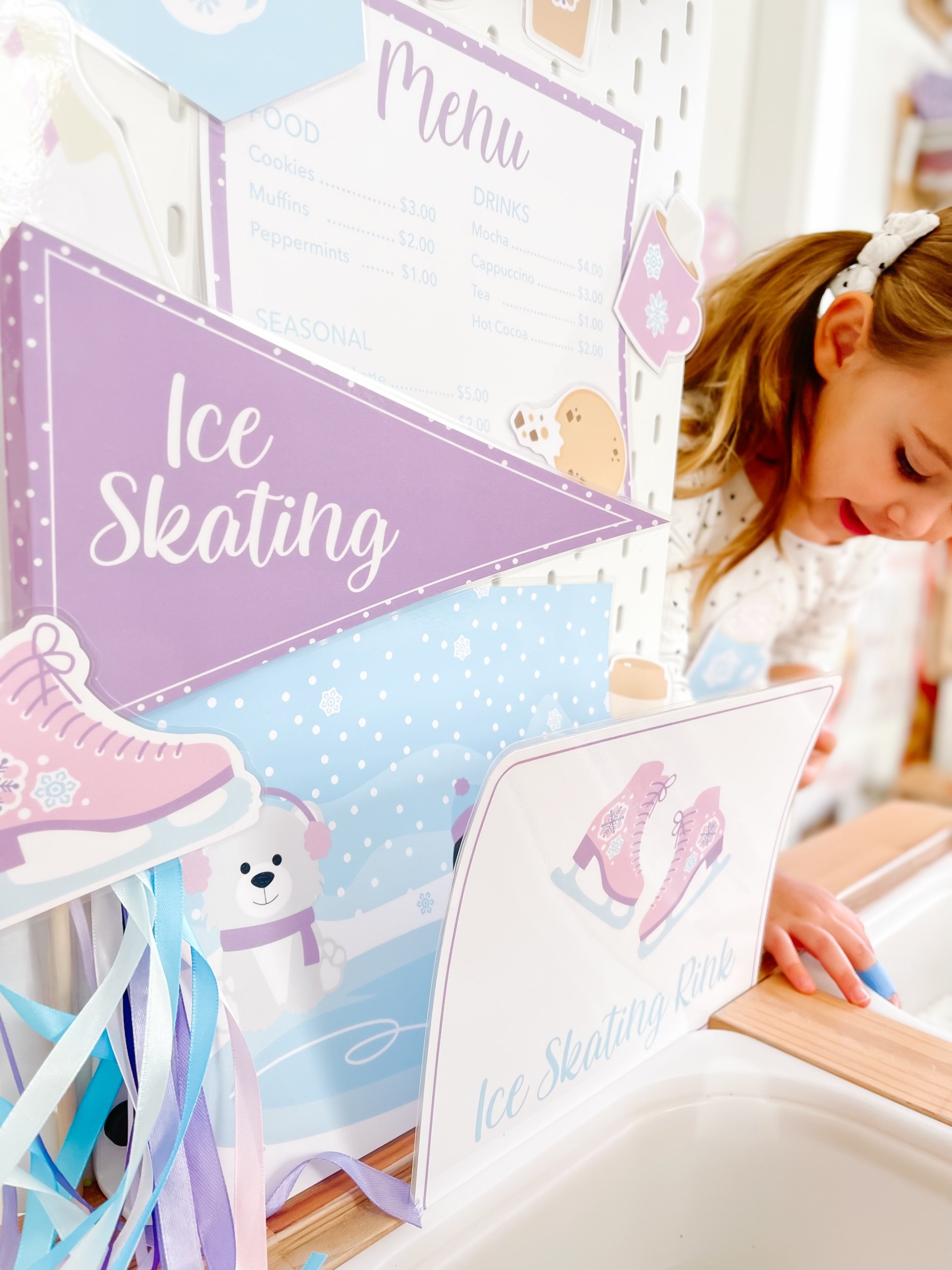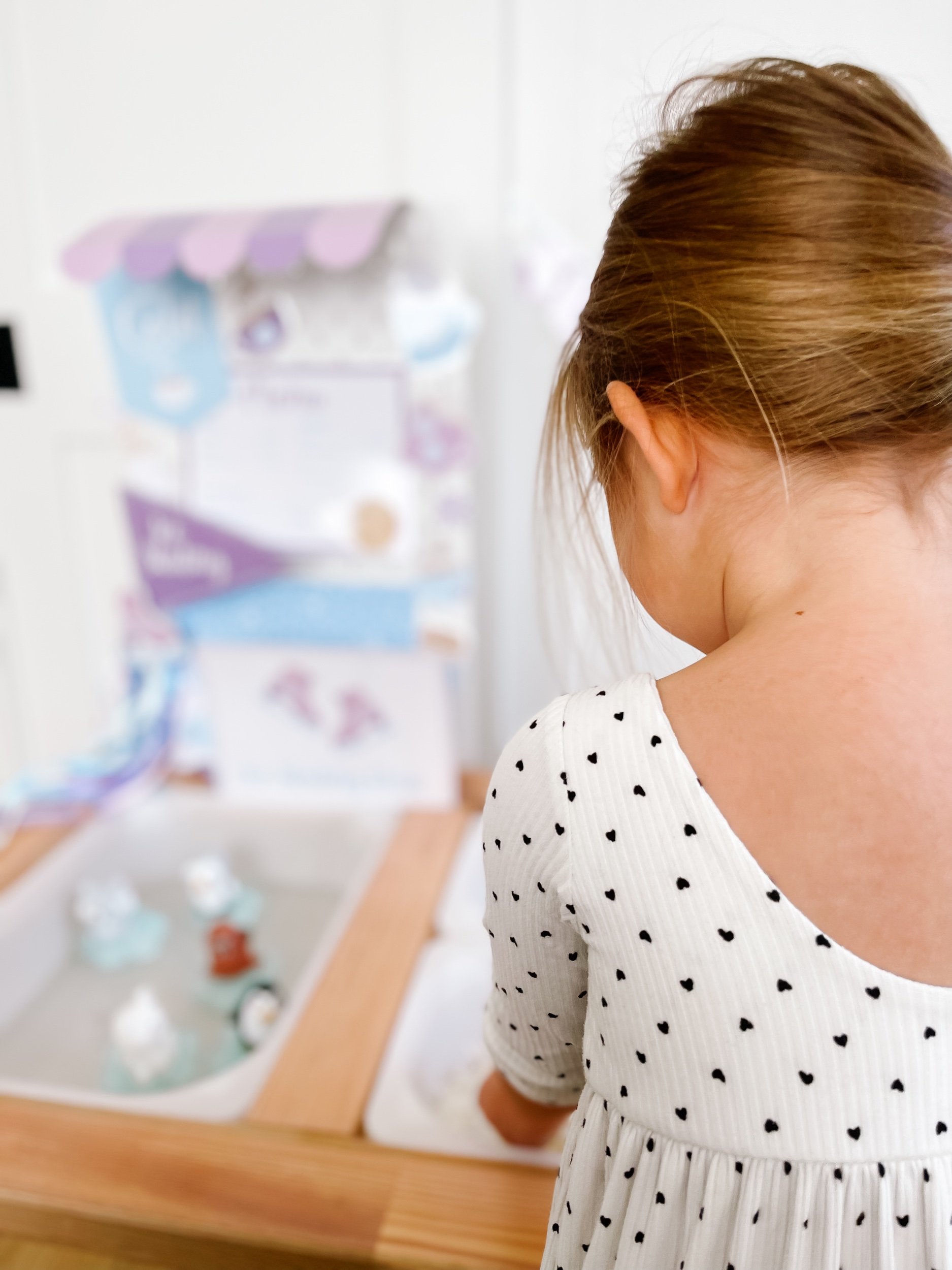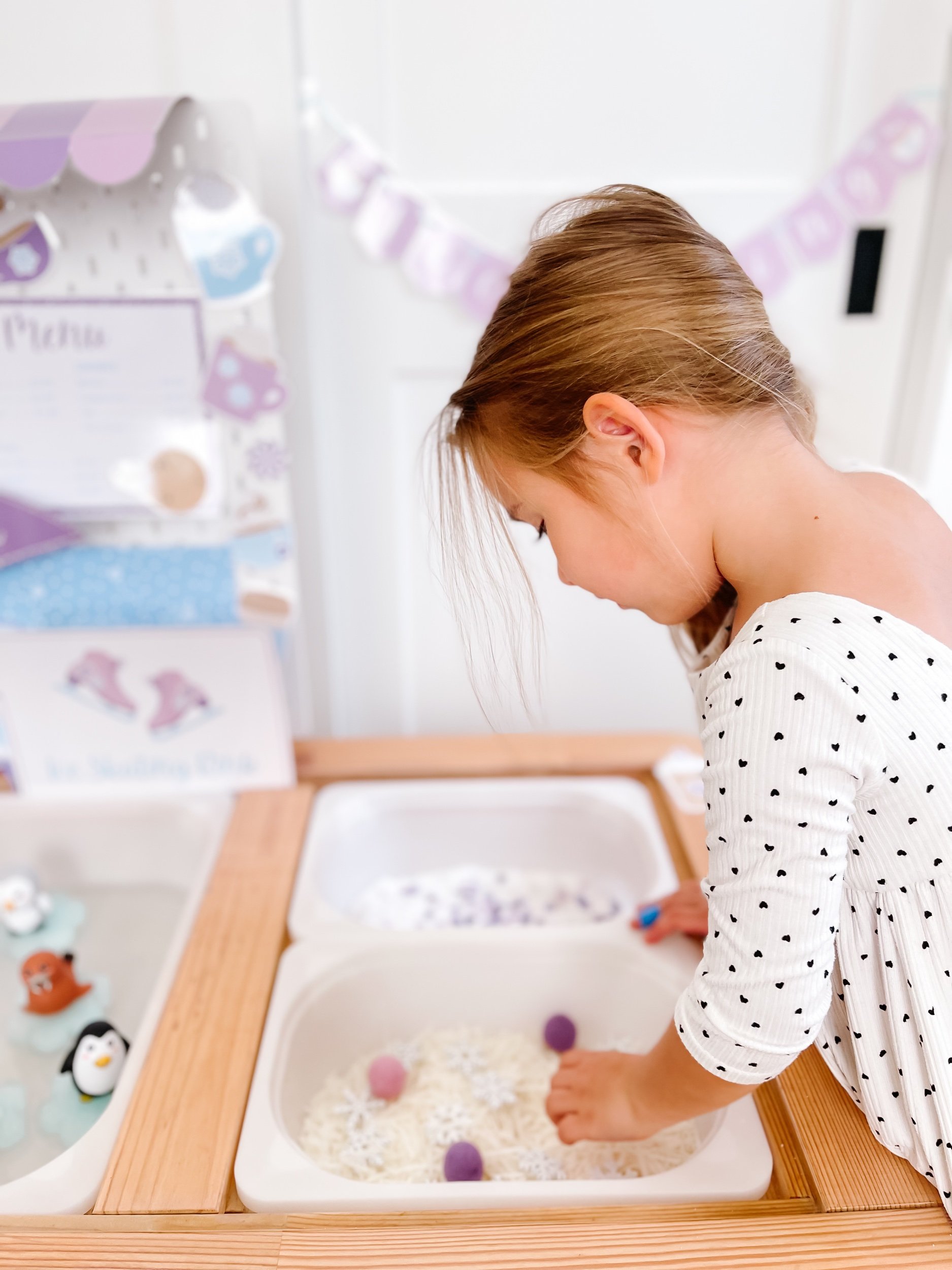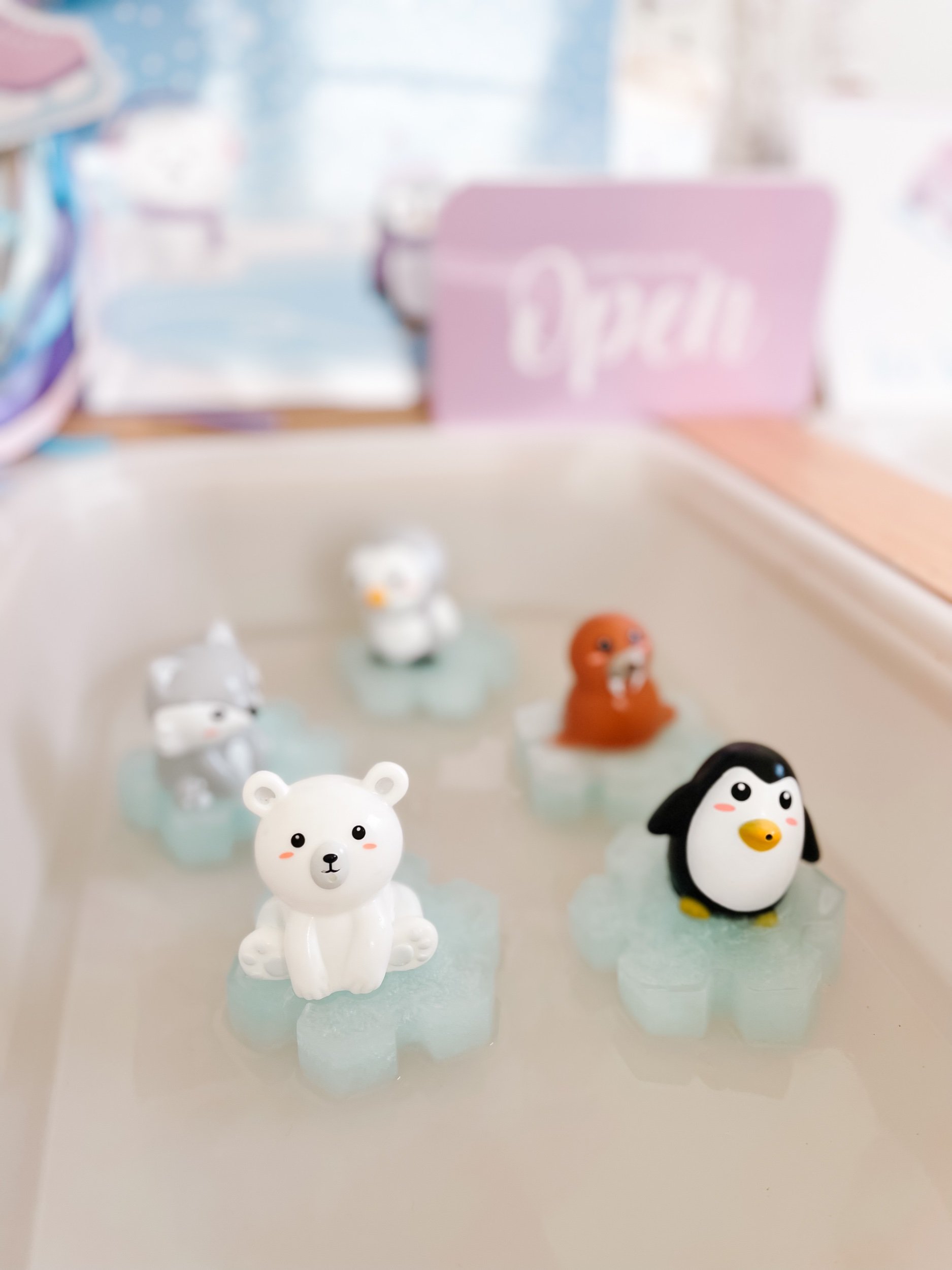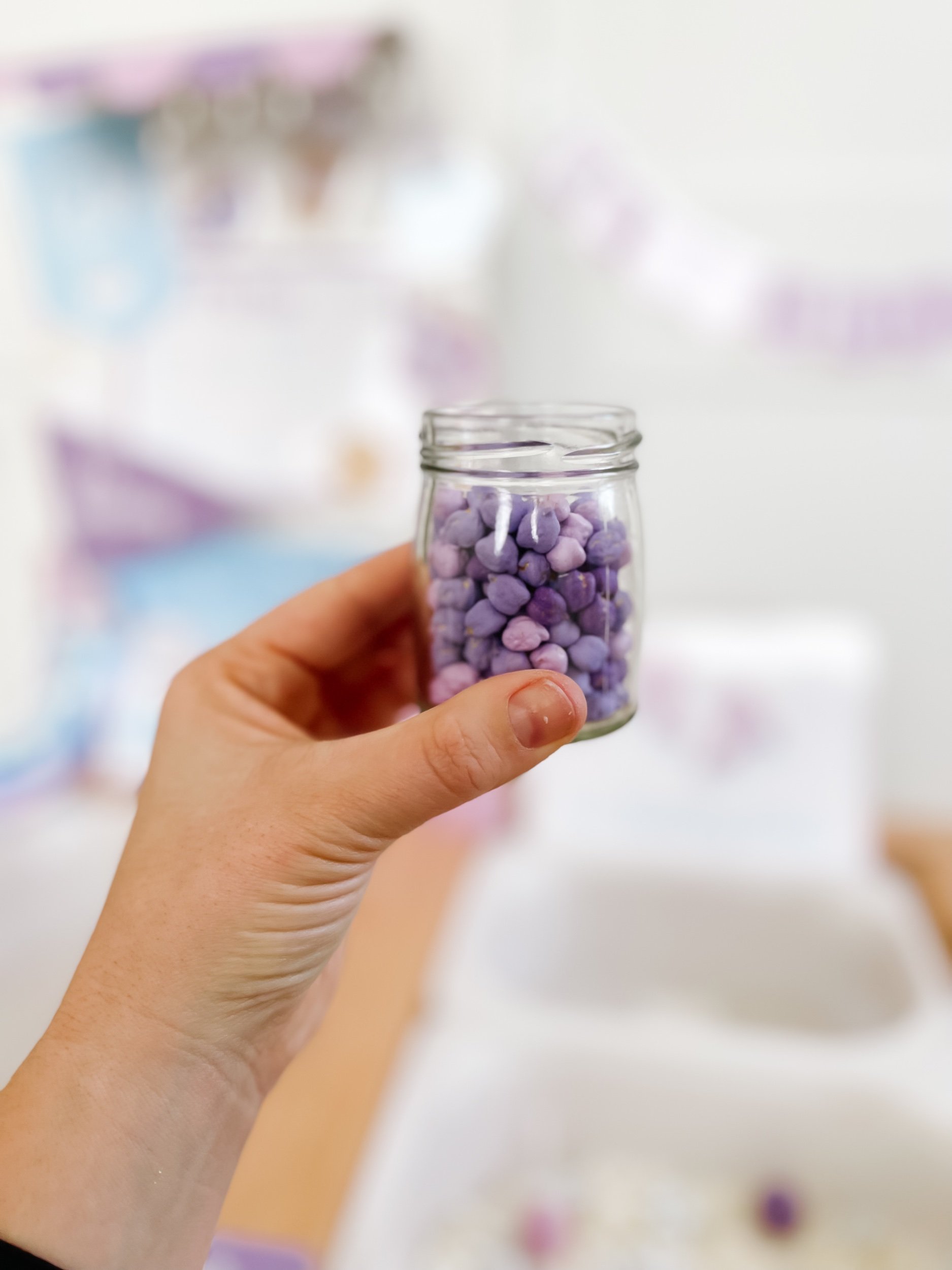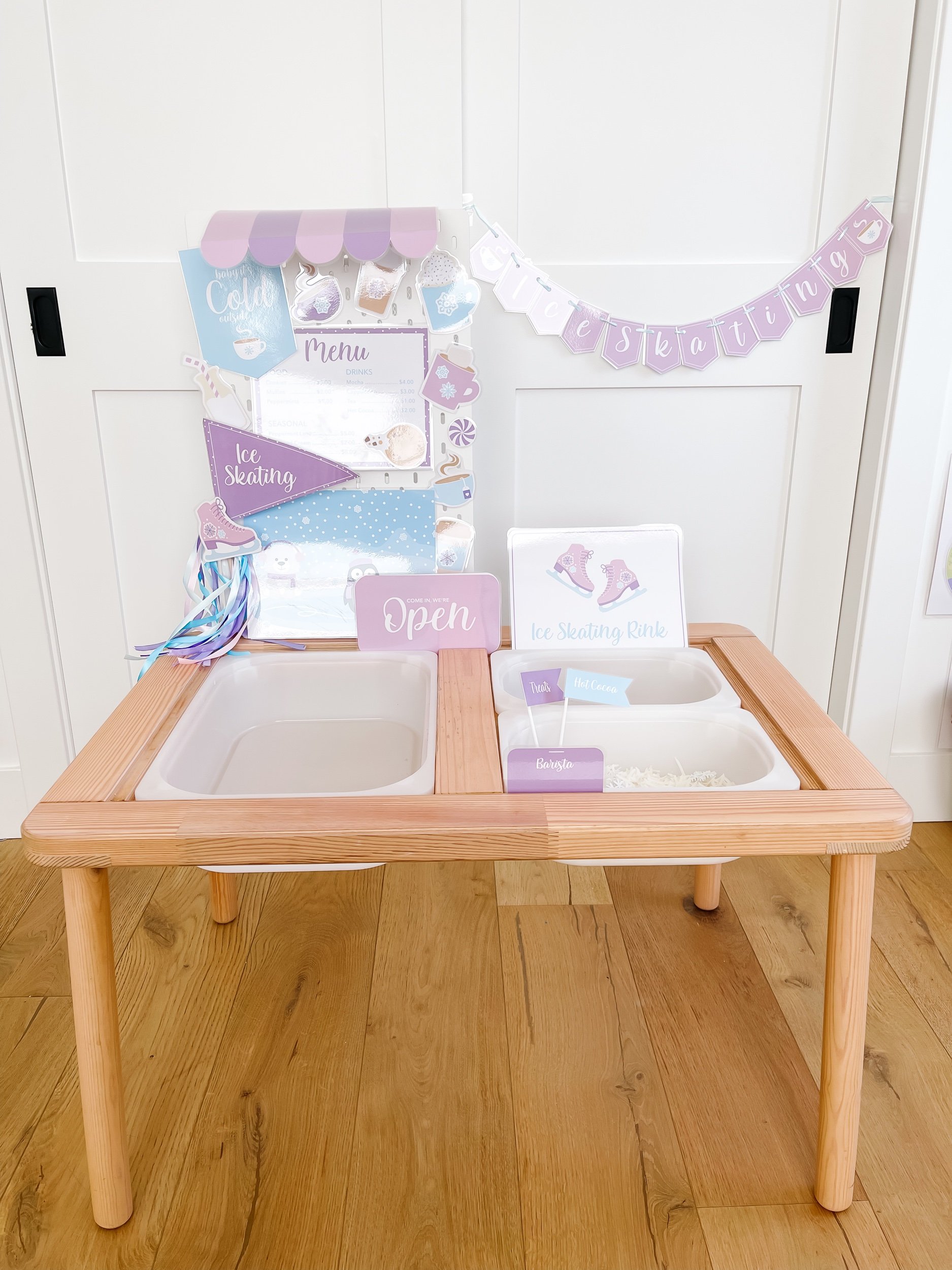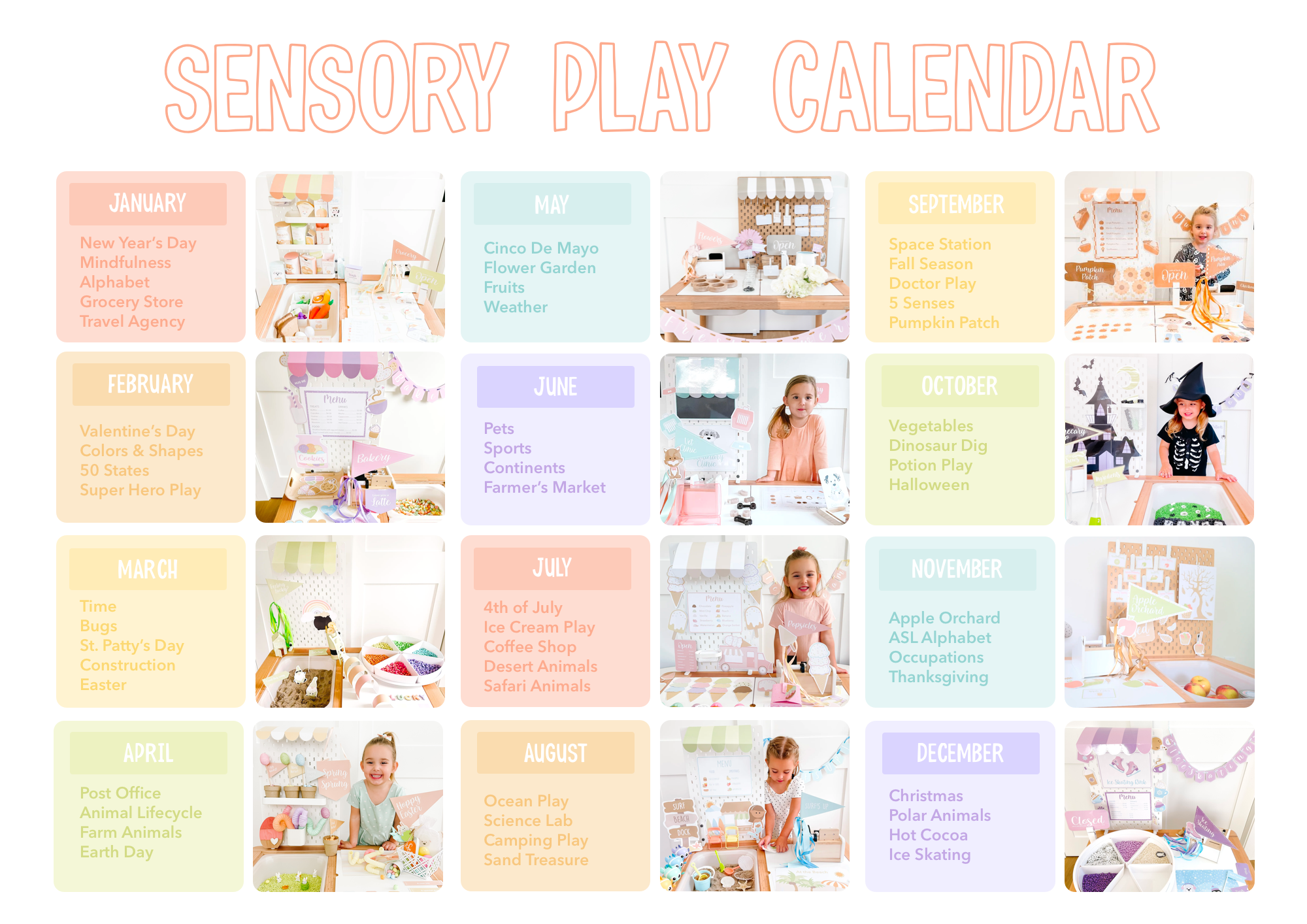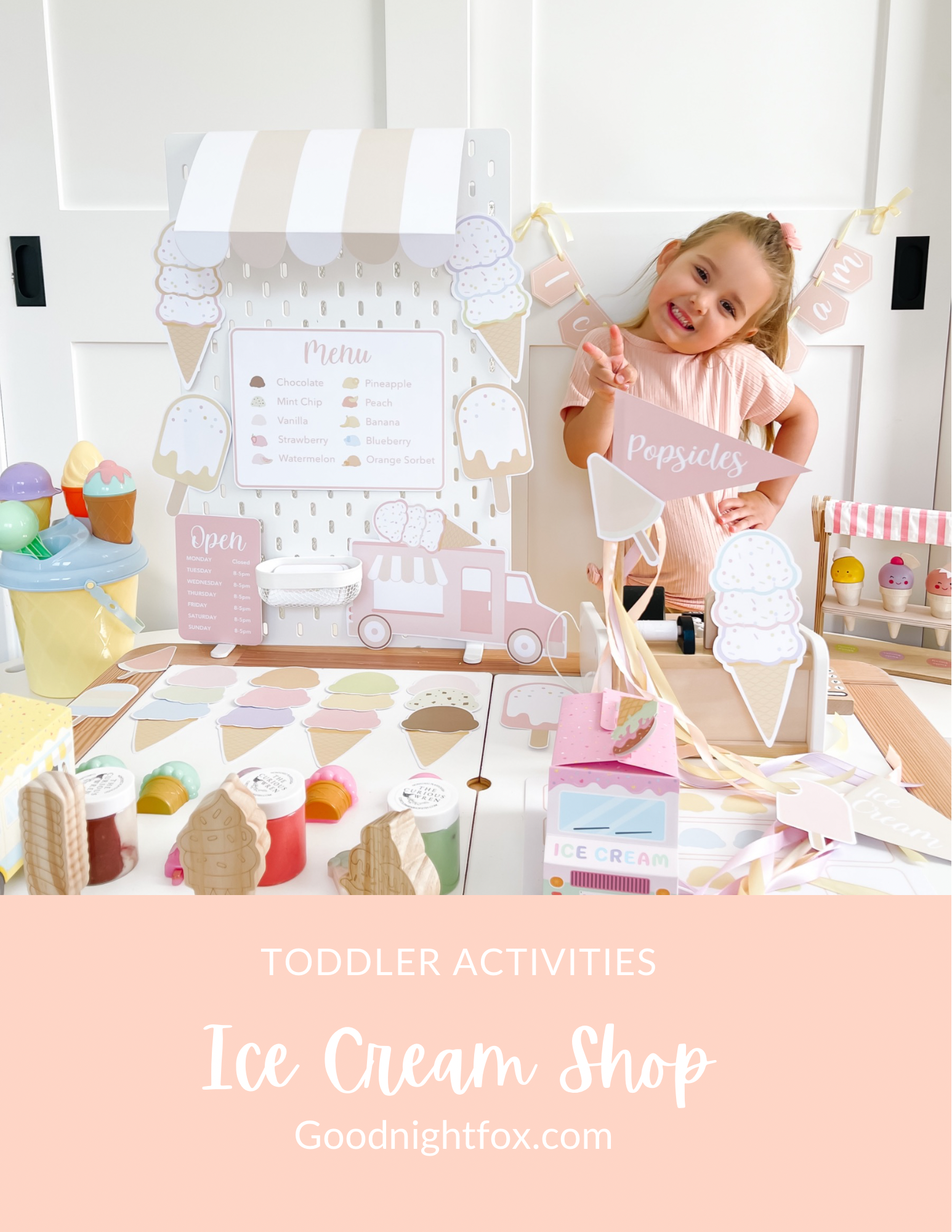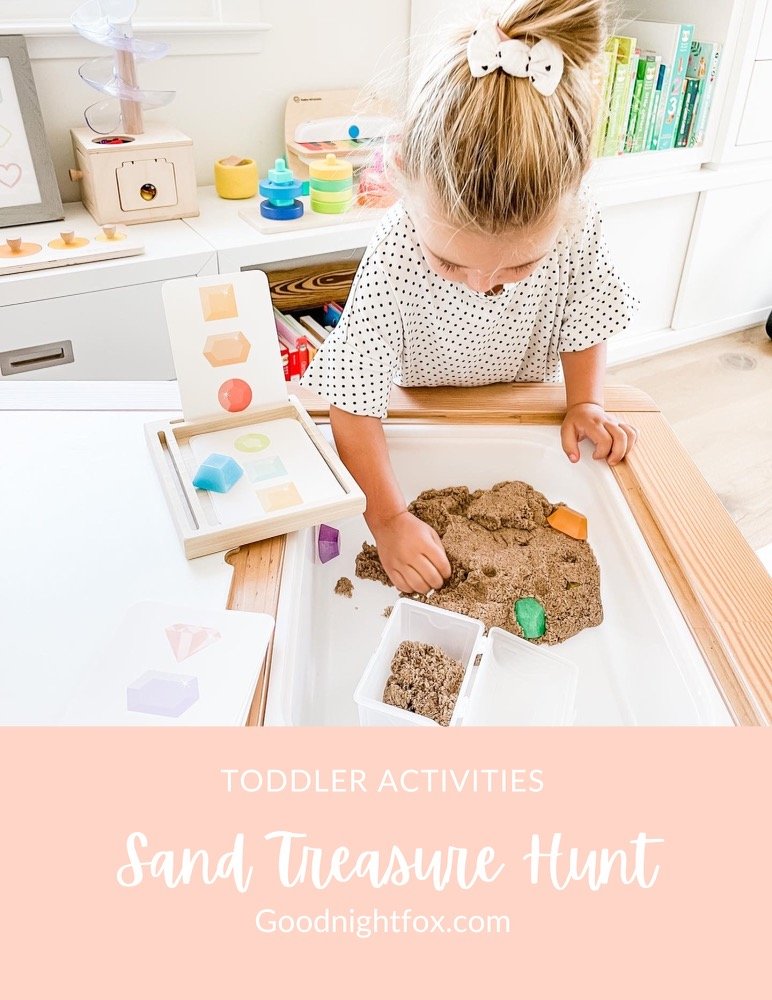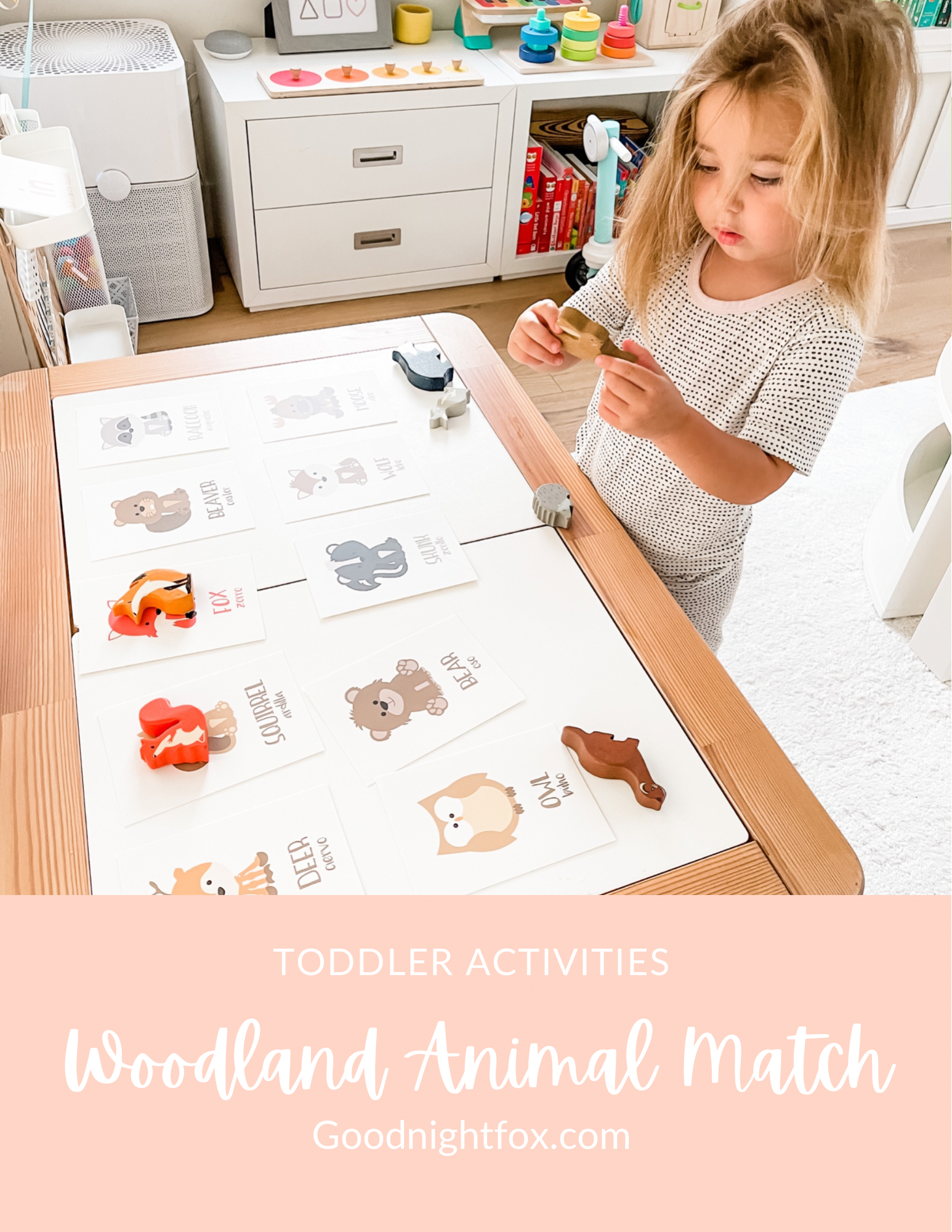We’re back for a another year of fun-filled play! This year’s sensory play calendar is completely digital. But it’s packed full of amazing sensory play setup ideas. As a reminder, each sensory play setup includes 3 sensory bins with ideas for all age groups. Each setup includes a taste safe option for younger kids. And of course, to make non-taste safe fillers baby friendly, I highly recommend the ziploc bag method.
Before you begin, and if you’re new to sensory play, check out this Beginner’s Guide to Flisat Table Sensory Play.
January SENSORY PLAY
We’ll kick the year off right by setting up our goals for the year, reflecting on the last year, and grounding ourselves in mindfulness practices. We’ll further our knowledge of the alphabet, build a grocery store, and create a travel agency!
New Year's Day:
Kick off the year off with the Happy New Year play setup. Use mirrors to discuss the importance of reflection and plan ahead for the goals your kiddo wants to accomplish for the year. Use the clock to discuss time and countdown on New Year’s Even.
Bin 1: Disco Mirror Balls
Bin 2: Mirrors & Reflection
Bin 3: Shiny Silver Tinsel
SNOW CONE:
Let’s enjoy the cold weather and make snow cones! If you live in the snow this should be easy, but if not, we have the best snow cone machine ready for you!
Bin 1: Snow cone cup stacking
Bin 2: Snow cone color mixing
Bin 3: Snow cone making
BAKERY
What better way to celebrate the winter season than to stay home and bake! We’ll create the cutest little bakery for your smart cookie.
Activity 1: Real cookie dough play (taste safe)
Activity 2: Cookie baking
Activity 3: Bakery pretend play
Grocery Store:
Pretend play with common household chores, like grocery shopping, instills a great sense of responsibility and contribution. In this activity, we’ll venture to the grocery store, shop for regular household supplies, and use the cash register & pretend play money to check out.
Activity 1: Grocery Store Owner
Activity 2: Cooking a Meal
Activity 3: Cleaning up the shop
Travel Agency:
We’ll wrap January with a fun adventure around the world. We’ll setup a Travel Agency where your little learner can pretend to help customers book their next trip. Then they can take the plane tickets and travel to Paris and London to see popular sights.
Activity 1: Wool ball continent color matching
Activity 2: Rubber band stretch & play
Activity 3: Travel agency shop owner dramatic play
February SENSORY PLAY
February is shaping up to be fabulous starting with a yummy Valentine’s Day Bakery. We’ll make a pit stop to learn about shapes and colors, then on to learning about the 50 states, and wrapping the month with Super Hero play.
Valentine's Day:
In this activity, we’ll practice interactive skills while your little one gets to pretend to own their own bakery. At the bakery, they’ll get to take orders, serve customers, bake cookies, and take money or make change.
Activity 1: Heart-shaped cereal scooping
Activity 2: Bakery dramatic play with felt donuts & cookies
Activity 3: Sweetheart search and find with popcorn
Bee KEEPER
Let’s buzz into fun with this bumblebee sensory play setup for kids!
Activity 1: Bee wooden sorting trays
Activity 2: Bee hive slots
Activity 3: Taste safe panda puffs scooping
50 States:
Discover the USA through a printable United States map. Practice learning each of the 50 states and their capitols with a fun matching game. Cut out individual states and practice matching them to the map! We’ll use colorful wool/felt balls to practice color matching.
Activity 1: State Treasure Hunt
Activity 2: Capitals Match up
Activity 3: United States Puzzle
Super Hero Play:
In this activity, we’ll put on super hero masks and fly around the city fighting crime with our super hero powers like invisibility and telekinesis. This dramatic play is not only fun, but a great way to practice concepts like crime and public service. We’ll use a colorful chickpea sensory filler to hide and uncover super powers.
Activity 1: Chickpea scoop and uncover super powers
Activity 2: Role play super hero missions
Activity 3: Pattern matching activity
March SENSORY PLAY
March is going to be the best yet! We’ll start by learning about time and clocks, dive into the backyard to inspect some bugs, make a leprechaun trap for St. Patty’s Day, build a construction site, and of course celebrate Easter with a mini egg hunt.
VET CLINIC
In this activity, we’ll practice learning how to tell time, use a timer, or read a clock. Learning the concept of time and sequencing is essential to toddler learning and this lesson will help kiddos conceptualize time.
Activity 1: Resin dogs
Activity 2: Adoption Certificate
Activity 3: Vet treatment & intake form
Bugs:
Explore the world of insects with a sensory bug hunt in 3 fabulous sensory materials: Pluffle, Chickpeas, and a pretend play dirt. A great way to practice insect names and explore natural habitats of some of the smallest creatures.
Activity 1: Pinch bugs in grass
Activity 2: Bugs in dirt search and find
Activity 3: Bee alphabet, ladybug counting, & pattern worksheets
St. Patty's Day:
Craft a sensory rainbow and pot of gold for St. Patrick's Day. This fun leprechaun trap setup includes a rainbow bridge, ladder, hat, pot of gold and rainbow and a foldable leprechaun cottage. Setup on the Flisat table along with sensory fillers like rainbow chickpeas and magnetic sand.
Activity 1: Leprechaun Trap
Activity 2: Color sorting Chickpeas (or cereal)
Activity 3: Learning money/coins
Construction:
Building, bulldozing, digging and excavating are great ways to explore sensory play materials like kinetic sand, play doh, rocks, and sensory play mud. This activity kit includes everything you need to create the perfect construction zone for your little one to enjoy.
Activity 1: Construction Water Play or Large Rocks
Activity 2: Taste Safe Construction with Cheerio Sand and Cocoa Dirt
Activity 3: Magnetic Sand & Chickpeas
Easter:
Easter is the perfect opportunity to celebrate spring flowers and baby animals. This printable activity kit includes everything you need to make a sensory bin egg-hunt. Paired with a green rock-grass bin full of bunnies and carrots is the perfect small world play setup.
Activity 1: Foam egg chutes w/ Fidget tubes
Activity 2: Small world bunny play
Activity 3: Miniature Easter egg hunt
Activity 4: Jello Easter Eggs
April SENSORY PLAY
Let’s celebrate spring with some amazing new activity setups. We’ll start with a trip to the post office, we’ll learn about the various lifecycles of animals and plants, travel to the farm to meet some chicks and cows, and wrap up with an Earth Day celebration.
Post Office
Head to the post office for this practical real world dramatic play. Take packages at the check out counter, sell boxes and stamps. Discuss the concept of the mail and post office and teach basic concepts of shipping and packaging.
Activity 1: Weighing & Measuring Boxes
Activity 2: Packing Boxes with Foam Balls
Activity 3: Stamping & Mailing Letters
Animal Lifecycles:
Animal & plant lifecycles are a great way to explore how things grow and change over time. Using our circular lifecycle cards, we’ll use lifecycle of chicken, lifecycle of a flower, and lifecycle of a butterfly to explore how animals change over the course of time.
Activity 1: Tapioca rainbow lily pads (taste safe)
Activity 2: Lifecycle wooden rounds
Activity 3: Insect cutters & snow play doh
Farm Animals
In this activity, we’ll explore the farm with sensory bins filled with toy farm animals, oatmeal and corn kernels. This activity kit comes with writing exercises, matching activities, along with a foldable barn and animals to play with.
Bin 1: Peas & Steel Cut Oatmeal Corn Field
Bin 2: Chocolate pudding & Rolled Oatmeal Pig Pen
Bin 3: Scooping & Feeding Corn Kernels
Earth Day:
We’ll use Earth Day to practice sorting recyclable materials into their appropriate bins. We’ll discuss how the Earth is our precious home and we have to take care of it by using renewable energy, cleaning up trash, and using sustainable practices.
Activity 1: Trash Sorting
Activity 2: Ocean Clean Up
Activity 3: Land Form Identification
May SENSORY PLAY
There’s so much to celebrate in May from Cinco De Mayo to Mother’s Day and with spring in full season, it’s time for our senses to bloom.
Cinco de Mayo: (Coming SOON)
Celebrate with a sensory fiesta and build a taco truck play setup to learn Mexican cuisine. We’ll use black beans and rice as our sensory fillers for this fun play setup. You can even add chips for an extra tasty snack!
Activity 1: Building Tacos
Activity 2: Scooping Chips (taste safe)
Activity 3: Taco Stand
Flower Garden:
For our Flower Garden & Flower Market activity, we’ll bring to life the beautiful colors and scents of the nature around us. We’ll use brown chickpeas as our sensory filler and scoop and fill pots with play dirt while we plant printable flowers. We’ll do a petal counting activity along with pretend seed packets, checkout counter, and more!
Activity 1: Scooping Cereal Dirt (Taste safe)
Activity 2: Planting and Watering Seedlings
Activity 3: Flower Petal Puzzle
Fruits & SMOOTHIE SHOP:
For this activity, we’ll use fruit scented doh, fruit cards and build a smoothie shop to learn mixing flavors and fruits. For a taste-safe alternative, you can use real fruits to mix and mash together!
Bin 1: Fill the cups
Bin 2: Mix fruit flavored playdohs
Bin 3: Counting fruit erasers/felt fruit
Weather:
For our weather station activity, we’ll be learning about weather patterns, temperature, and how weather changes during the seasons.
Bin 1: Weather Sensory Bottles
Bin 2: Cloud Shaped Packing Peanuts
Bin 3: Rainbow Playdoh
June SENSORY PLAY
I’m so excited for June because we’ll be playing with pets! We’ll do a sports sensory play setup to celebrate Father’s Day, and learn about the continents and forms of transportation. We’ll wrap up our June sensory play ideas with a fun little Farmer’s Market.
Pets:
We’ll use our adoption clinic to explore the world of pets and pet care. We’ll use peanut butter cocoa puff balls cereal as our sensory filler to practice scooping and counting as we feed our pups out of their bone-shaped bowl.
Laundry:
For this activity, we’ll enjoy a sensory sports day with textured balls and sports-themed play. We’ll use our sports flashcards and matching erasers to do a matching activity.
Bin 1: Wool Ball Sorting & Matching
Bin 2: Clothes pins sorting
Bin 3: Cheerios
Donut Shop
For this activity, we’ll explore the world, all 7 continents, as well as passports for global travel.
Bin 1:
Bin 2:
Bin 3:
Farmer's Market:
We’ll set up a sensory farmer's market with felt play fruits and vegetables to sell. Complete with play money and signage, we’ll bring to life the world’s cutest little farmer’s market.
Bin 1: Silicone Fruits & Veggies
Bin 2: Pasta & Grains Bin
Bin 3: Cash Register & Play Money
July SENSORY PLAY
Summer is the perfect seasons for sensory play. We’ll celebrate Independence Day with a bbq cookout, build an ice cream truck, sip some cool summer coffee, visit our desert animal friends in the sweltering heat, and make a trek out to the safari to learn about some new animals.
4th of July:
In this activity we’ll have a pretend cook out, celebrate the stars & stripes of the American flag, and we’ll practice learning our 50 states on a map of the United States.
Bin 1: American Flag Fruit Bin (Taste safe)
Bin 2: Red, White, and Blue Sushi Rice
Bin 3: Pretend Play BBQ Setup
Ice Cream Play:
In this activity, we’ll make a taste-safe ice cream sensory play doh. Each colored scoop will bring joy to tiny faces while we’re practice owning an ice cream shop and putting smiles on customer’s faces. We’ll use this opportunity to practice all kinds of flavors!
Bin 1: Taste safe ice cream play doh recipe
Bin 2: Regular playdoh ice cream cone building
Bin 3: Ice cream pattern matching
Lemonade stand:
Enjoy the summer with a refreshing lemonade stand. Nothing brings me back to childhood like this fun sensory play activity.
Bin 1: Taste safe lemons in water bin
Bin 2: Yellow and pink wool ball sorting
Bin 3: Money & cash register stand owner play
Desert Animals:
Discover desert life with sensory sand and toy animals. We’ll create a small world desert animal play scene, learn new vocabulary words, a search and find matching activity and letter discovery.
Activity 1: Desert Animal Pattern Completion
Activity 2: Pasta Noodle Cactus Building
Activity 3: Kinetic sand hide & seek
Safari Animals:
For this activity we’ll go on a safari adventure to learn about safari animals and their natural habitats. We’ll even make a pair of toilet paper roll binoculars!
Activity 1: Toilet paper roll binoculars
Activity 2: Kinetic sand hide & seek safari animals
Activity 3: Safari animal masks play and match
August SENSORY PLAY
Let’s dive into summer with ocean themed sensory play that’ll have you wanting a trip to the beach! We’ll celebrate back to school season with a science lab setup, go camping, and dig for treasure.
Ocean Play:
For this activity, we’ll explore ocean life with a few sensory explorations. We’ll create a magnetic sand base coral reef to explore the ocean floor. We’ll create a jello-based ocean water to float our sensory fish in.
Activity 1: Kinetic Sand Beach & Blue Chickpeas
Activity 2: Painted Pasta Coral reef ocean floor
Activity 3: Swimming fish in water
Science Lab:
We’ll bring to life the science laboratory with our science themed printable play setup. We’ll use the Lovevery Beaker set to practice pouring and mixing various colors to practice learning about primary and secondary colors.
Activity 1: Primary Color Mixing
Activity 2: Water, Baby Oil, & Alkaseltzer Lava Lamps
Activity 3: Pouring & Mixing with Bath Salts
Camping Play:
We’ll use one of my all time favorite sensory fillers — S’mores Granola — to build a forrest floor for our woodland animals to go camping. We’ll use a camp site map, camper, badges, and s’mores to explore the great outdoors.
Activity 1: Build a Campfire
Activity 2: S’mores Granola search & find woodland animals (taste safe)
Activity 3: Pretend Camping w/ Lovevery Camper Van
Fire Station
Get ready for some fun filled play putting out fire with our fire station sensory play setup.
Activity 1: Kinetic sand
Activity 2: Blue and orange/red chickpeas
Activity 3: Printable fire put out activity
September SENSORY PLAY
Septemeber has some of my all time favorite sensory play setups. From the amazing space station to woodland animals and everything in between, your kiddos will have a blast as the seasons change from summer to fall.
Space Station:
In this activity, we’ll explore the cosmos with 3 different space-themed sensory play bins. With our dramatic play, we’ll create a space station, command control board, and windows into outer space. Then we’ll make a moon landing bin, a galaxy bin, and a galaxy sensory bottle.
Activity 1: Moon landing taste-safe icing playdoh
Activity 2: Black bean & glow in the dark stars night sky
Activity 3: Space-themed bath bomb color explosion
Activity 4: Planet play doh balls
Bonus: Galaxy Sensory Jars
Ramen Shop
To celebrate the changing of the seasons, we’ll create a ramen shop setup!
Activity 1: Ramen shop dramatic play
Activity 2: Cooking pretend play
Activity 3: Taste safe cooked noodles, corn, hard boiled eggs
Doctor Play:
With our doctor play kit, we’ll encourage nurturing skills — pretending to be a doctor and taking care of patients in need. We’ll take X-Rays, apply bandages, fill out prescriptions cards and more!
Activity 1: Human body tray w/ frozen jello (taste safe)
Activity 2: Swaps, cotton balls, tongue depressor bin
Activity 3: Cooked egg noodles w/ red food dye (taste safe)
Spa Day Play
Pamper and play with our spa day sensory setup!
Activity 1: Laminate hands/toes for nail painting
Activity 2: Cucumbers in water (taste safe)
Activity 3: Parafin wax dip
Pumpkin Patch:
Let’s explore the pumpkin patch! From hay rides on tractors to sunflower patches. From scarecrows and wagons to pumpkins and pie. We’ll use our pumpkin patch dramatic play to create a world of fall. We’ll build a scarecrow, pick sunflowers and measure pumpkins!
Bin 1: Taste safe granola clusters
Bin 2: Build a scarecrow
Bin 3: Build a jack-o-lantern
OctobeR SENSORY PLAY
The perfect way to kick off fall with vegetable, dinosaur, and fun Halloween-themed activities.
Coffee Shop:
Create a world of coffee, tea, and pastries with this beautiful coffee shop cafe setup. We’ll practice social skills like greeting new customers as well as customer service, counting change and more!
Bin 1: Coffee beans
Bin 2:
Bin 3:
Dinosaur Dig:
Join us on a paleontology adventure with our dinosaur dig! We’ll use 3 different sensory play activities together to explore dinosaurs including fossils, bone digging site, and a ice dinosaur eggs.
Activity 1: Plaster Volcano and Dinosaur Pasta Filler
Activity 2: Salt Dough Fossils
Activity 3: Paleontologist Plaster Dig Site
Potion Play:
In celebration of Halloween season, we’ll pretend to be witches making magical potions and brews. We’ll use our potion mixing play setup to make combinations of various Halloween ghouls.
Activity 1: Black bean and dyed quinoa bin
Activity 2: Potion play
Halloween:
We’ll create spooky sensory Halloween decorations to build our haunted house and graveyard digging adventure with black & orange dyed quinoa.
Activity 1: Black bean and dyed quinoa bin
Activity 2: Potion play
November SENSORY PLAY
It’s time to give thanks for all we’ve been given this year and celebrate the fall harvest season.
Thanksgiving:
Practice fun skills and textures with this Thanksgiving meal, glue the feathers to the turkey, and writing down what we’re thankful for.
Activity 1: Build a Turkey Dinner
Activity 2: Bake a pie
Activity 3: Add feathers (tissue paper) to a turkey
Apple Orchard:
Learn all about apples with this apple picking, bobbing, leaf gluing, cider making activity. Pretend to own your own orchard and practice selling your goods.
Activity 1: Apple Seed Counting
Activity 2: Candy Apple Making (Taste safe)
Activity 3: Apple Pie Building
Pizza Shop
Let’s get messy with pizza sauce as we enjoy this fun-filled pizza play!
Bin 1: Pizza cut outs and assembly
Bin 2: Pizza owner cash register
Bin 3: Cooked noodles & taste-safe toppings
Dog Wash
This week we’ll be getting our hands wet giving a good shampoo to our furry friends. Join us for dog wash play!
Bin 1: Dog Food (taste safe cocoa puffs)
Bin 2: Soap/Bubble bath and sponges
Bin 3: Drying station w/ towels
Get the Flashcards | See Activity Details
December SENSORY PLAY
With the winter season upon us, it’s the perfect time to stay indoors and cuddle up with some cozy sensory play. Nothing could be more fun that celebrating the cold weather in the polar arctic in stark contrast with the cozy warm hot chocolate by the fire and baking in the oven.
Christmas Tree
Decorate a Christmas Tree, build a snowman, feed the reindeer and hang stockings over the fireplace with this fun play setup.
Bin 1: Hot cocoa
Bin 2: Build-a-snowman
Bin 3: Peppermint crush
Plus more great activities like feed the reindeer, decorate the Christmas tree, hang the stockings, and play gingerbread house.
Polar Animals:
Learn about the arctic with sensory ice and polar animal figures. As we hop from bin to bin, we’ll enjoy blue pluffle and teal chickpeas, practicing scooping and playing in different textures.
Activity 1: Snowflake Ice Cube Tray with Bath Toys
Activity 2: Blue Pluffle and Snowflake Dig
Activity 3: Acrylic Polar Animal Charms and Teal Chickpeas
Nutcracker Land of Sweets:
Make hot chocolate set up with edible cocoa puff cereal perfect for scooping and pouring. Practice counting with marshmallow and sprinkle toppings.
Activity 1: Painting wooden nutcrackers
Activity 2: Playing with play doh & trees
Activity 3: Gingerbread house building (taste safe)
Ice Skating:
This winter holiday inspired Ice Skating Rink will be a playful way to celebrate the season and wrap up our year of sensory play. Filled with wooden snow flakes, arctic animals, and colorful chickpeas, this setup is sure to delight the senses.
Activity 1: Frozen snowflake ice skating (taste safe)
Activity 2: Shredded coconut snow search and find (taste safe)
Activity 3: Fake snow scooping and molding bin
Even more year round play activities
Year Round PLAY TOPICS:
Alphabet: Use Letters flashcards and a bin of resin letters or a magnetic letter board to match the letters.
Letter Sounds: Use Letter Sounds flashcards and felt letters to practice the sounds each letter makes.
5 Senses: Create jars of foods and objects that invigorate the senses and practice smell, taste, sound, sight and touch.
Sight Words: Practice common words, phonics, and basic short sentences for pre-reading fun.
Color Matching: Use color cards and a bin of different colored objects and toys and practice matching and sorting.
Counting: Pair counting cards with wool balls to gather the number of balls in one bin to match the number on the card.
Pattern Matching: Using a 12 frame or color ball insert, build the patterns from each of the cards.
Addition & Subtraction: Practice basic addition and subtraction with 10 math problems
Anytime Play TOPICS:
Sign Language: Choose the cards for each letter in the child’s name and practice building the signs for each letter.
Emotions: Learn to identify emotions and build calming habits around big feelings
Rhyming Words: Practice word sounds and rhyming
Routines: Learn about healthy morning and evening routines and self care
Chores: Practice contributing to the household with toddler friendly chores
Shapes: Learn basic and advanced shapes
Money: Practice identifying coins and bills and adding multiple coin types together
Tangrams: Stretch your brain by building images with tangram shapes
Promote communication, emotional intelligence, and life skills through sensory experiences.
With our Sensory Play Calendar, you can provide your child with a year full of enriching, imaginative, and educational sensory experiences. Each activity is carefully designed to engage their senses and inspire creativity. To get started, explore our sensory play products at GoodnightFox.myshopify.com and let the sensory adventures begin! Happy playing, moms!
Printing Recommendations
If you’ve decided to purchase the download and print kit, here are a few recommendations on how to make the most of your printables.
Print on 80lb cardstock: I recommend printing on a thicker card stock paper for durability. If you have a printer at home you can purchase 80lb cardstock on Amazon. If you’re printing at a store I recommend FedEx Kinkos.
Print on regular paper and laminate: If you don’t want to print on cardstock, laminating regular paper is a great alternative and keeps your prints water proof in case there are spills. You can get a laminator from Amazon and lamination sheets like these.
Print Flashcards 2 per page: When printing flashcards I recommend changing your printer setting to 2 per page so that they’re a reasonable size. You can laminate these as well or use cardstock for durability.
Tools on hand: if you’re doing all of the setups, it can take time to do the cutouts. If you have a Cricut you can use the print & cut feature. If you’re doing it by hand I recommend having a paper cutter like this on hand and a corner rounder. You’ll also need a hole punch for the banner. And if you want to create the pennant flags, having wooden dowels and ribbon on hand is a must!
Awning setup: To create the look of the awning, simply fold the paper 1 inch from the straight end. Fold the rounded edge near where the rounds meet. Then use packing tape to secure the straight edge over the back of the pegboard.
Securing things: I use packing tape to secure most decorative elements to the pegboard. It’s also helpful to have on hand a roll of regular tape. I also like to use the IKEA phot frame stand for open/closed signs.
FILLER Recommendations & Shopping List
Here’s the complete list of all of the sensory fillers you might want to have on hand and many of the alternatives available to swap for taste safe options. Keep in mind that I did 3 bins each week to demonstrate multiple options, but you can choose 1 or 2 or just play with the decor!
January Shopping List
Week 1: Disco balls, mirrors, shiny tinsel (taste safe alternative: sprinkles)
Week 2: Play foam, sand, oil/water/sensory bottles (taste safe alternatives: tapioca balls, chia seeds, salt)
Week 3: Resin/wool letters, letter clips, letter cookies (taste safe alternatives: pasta letters)
Week 4: Felt play food, playdoh, rags/spray bottle (taste safe alternative: real cereal, fruits, veggies, juice box)
Week 5: Wool balls, rubber bands (taste safe alternative: fruit loops)
February Shopping List
Week 6: Heart cereal, felt bakery food, sweethearts candy (taste safe alternative: popcorn)
Week 7: Color balls/blocks, silicone cupcake wrappers (taste safe alternative: rainbow cereal)
Week 8: Wool balls (taste safe alternative: rainbow cereal)
Week 9: Colored chickpeas (taste safe alternative: food colored oatmeal)
March Shopping List
Week 10: Funnel, play sand, water, chia seeds (taste safe alternative: blended cheerio sand)
Week 11: Crushed oreo dirt, green pluffle, green chickpeas (taste safe alternative: dried green peas)
Week 12: Kinetic sand, rainbow colored chickpeas (taste safe alternative: lucky charms cereal)
Week 13: Kinetic sand, rocks/gravel, nuts & bolts erasers (taste safe alternatives: cheerios, chex mix, icing playdoh)
Week 14: Green vase filler, foam eggs, coffee beans (taste safe alternatives: dried green peas, malted egg candy, cocoa puffs cereal)
